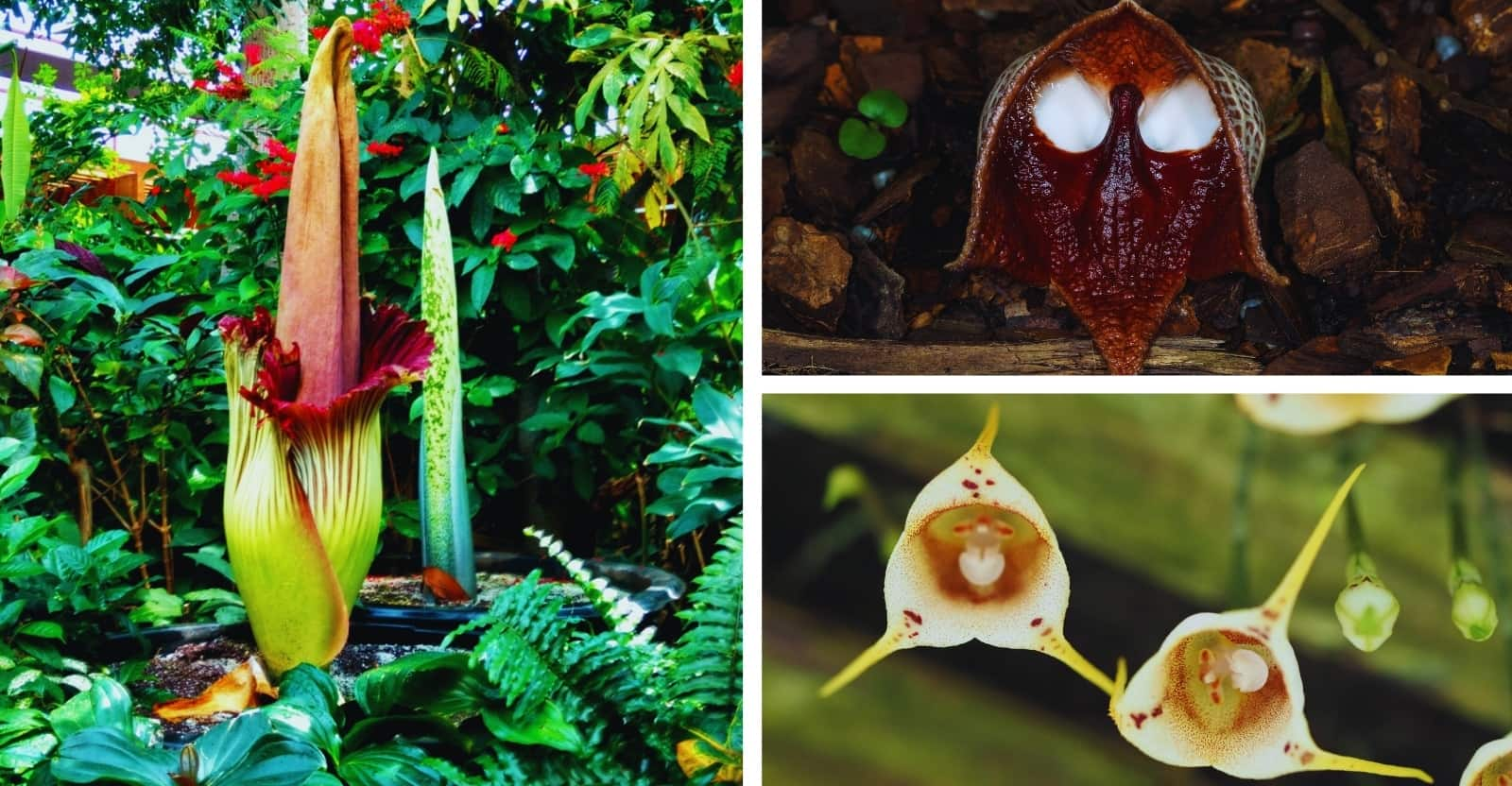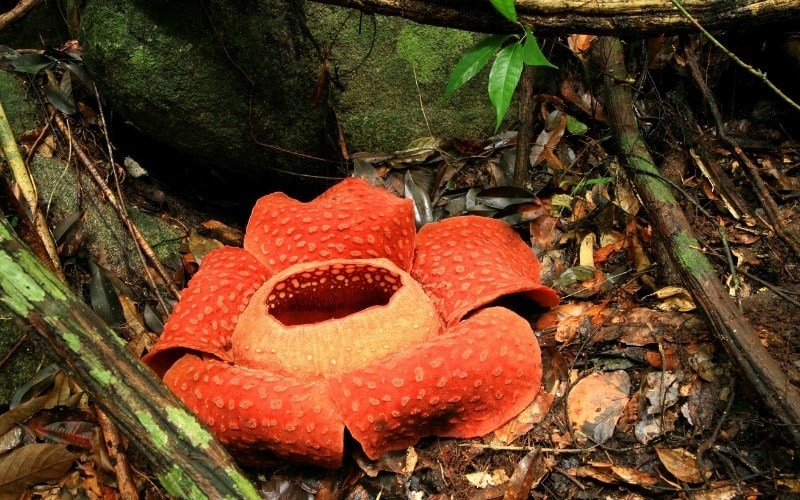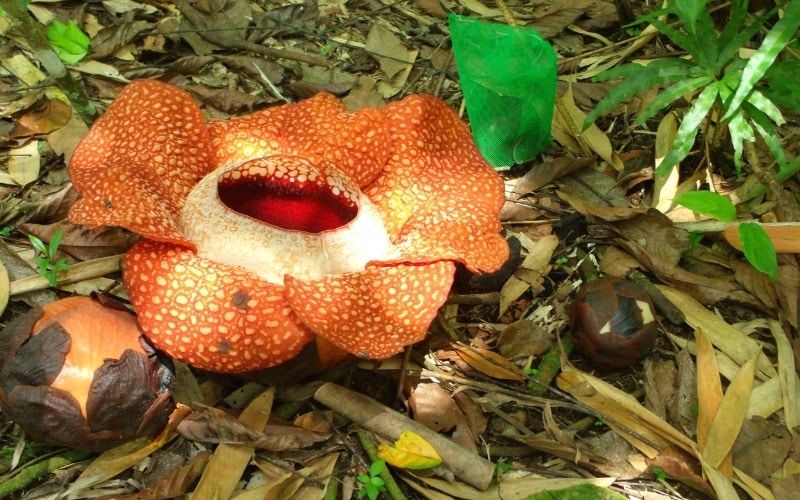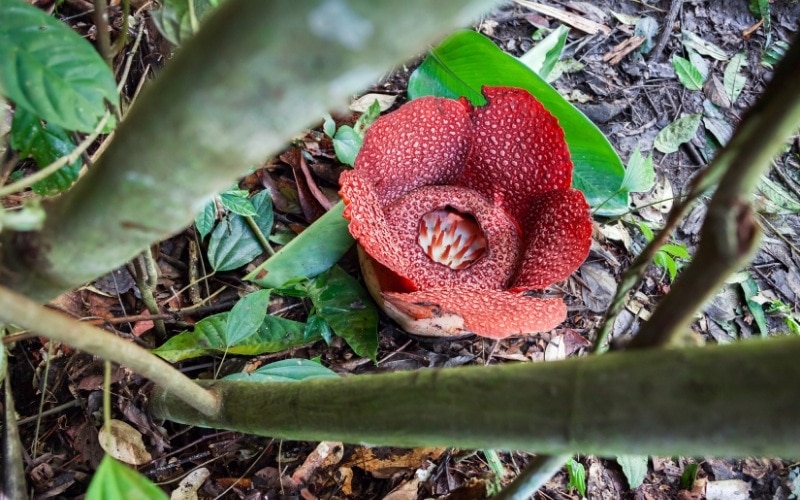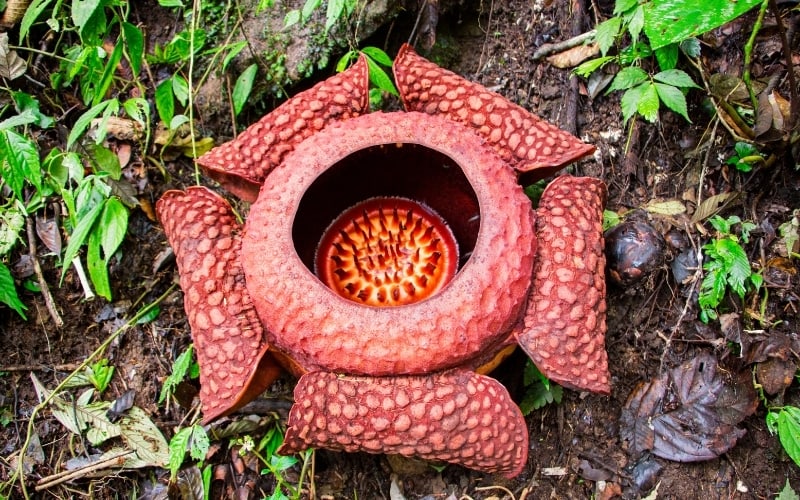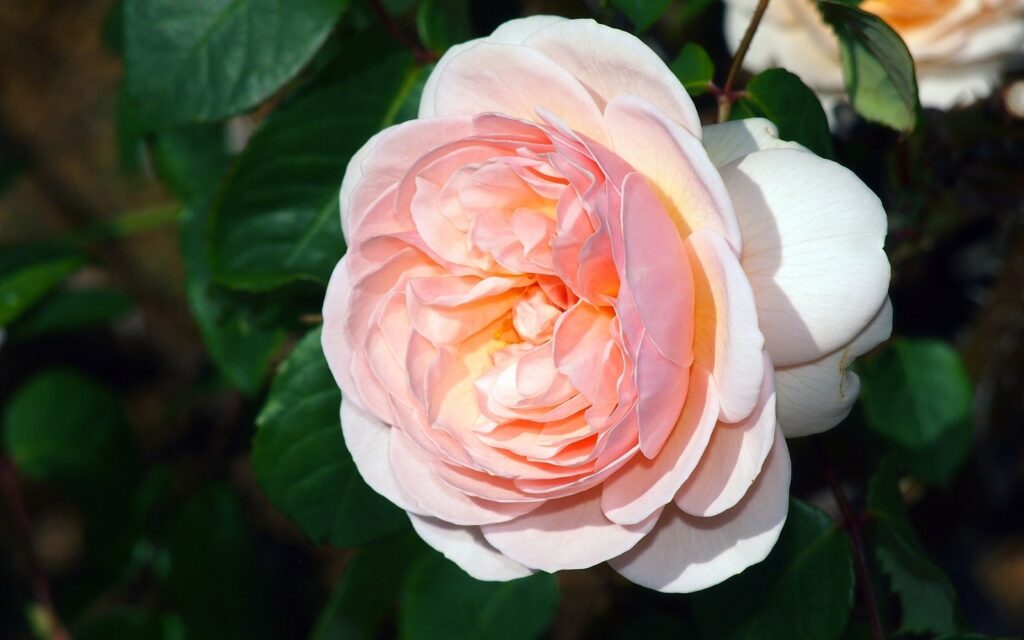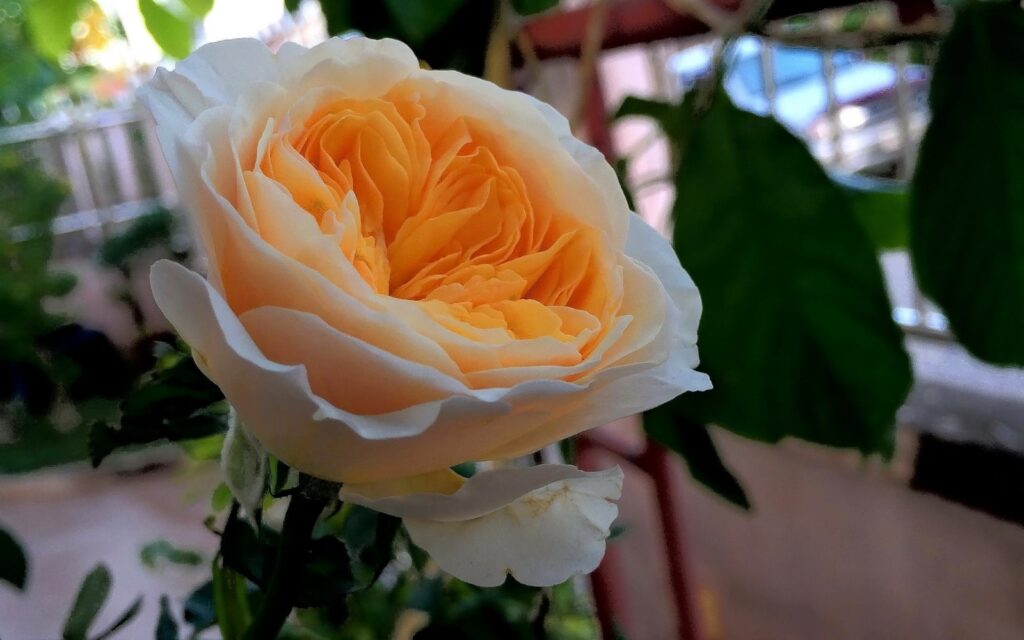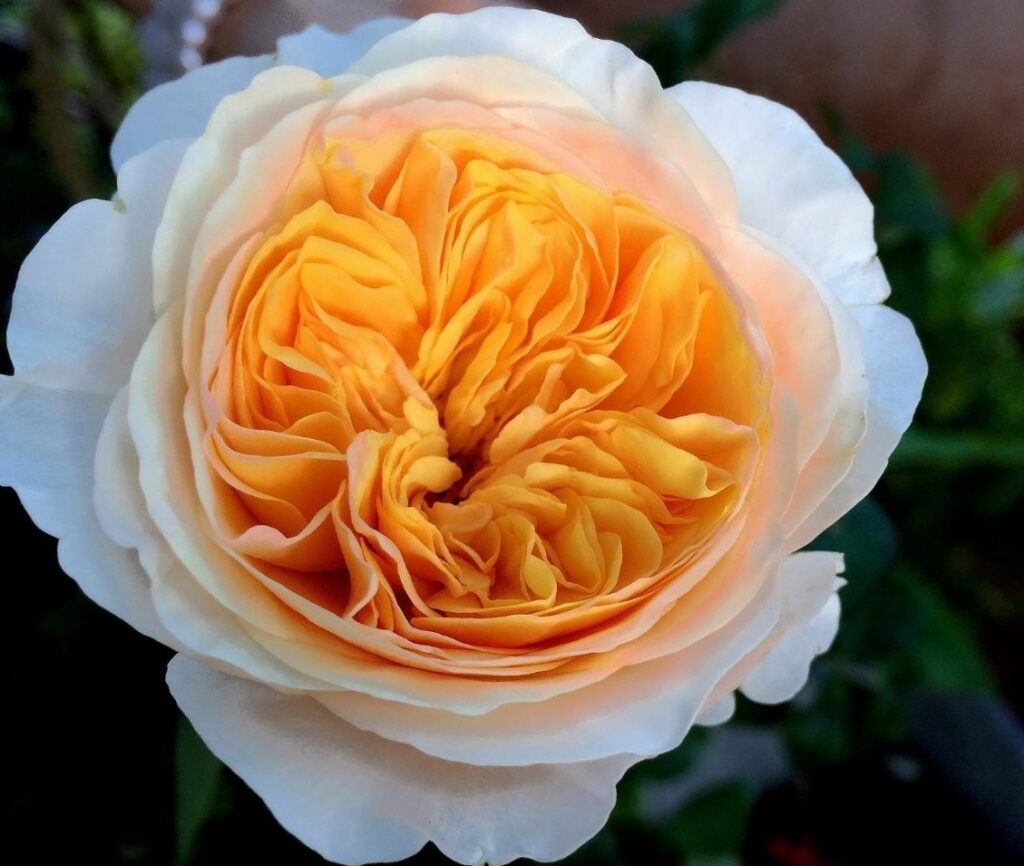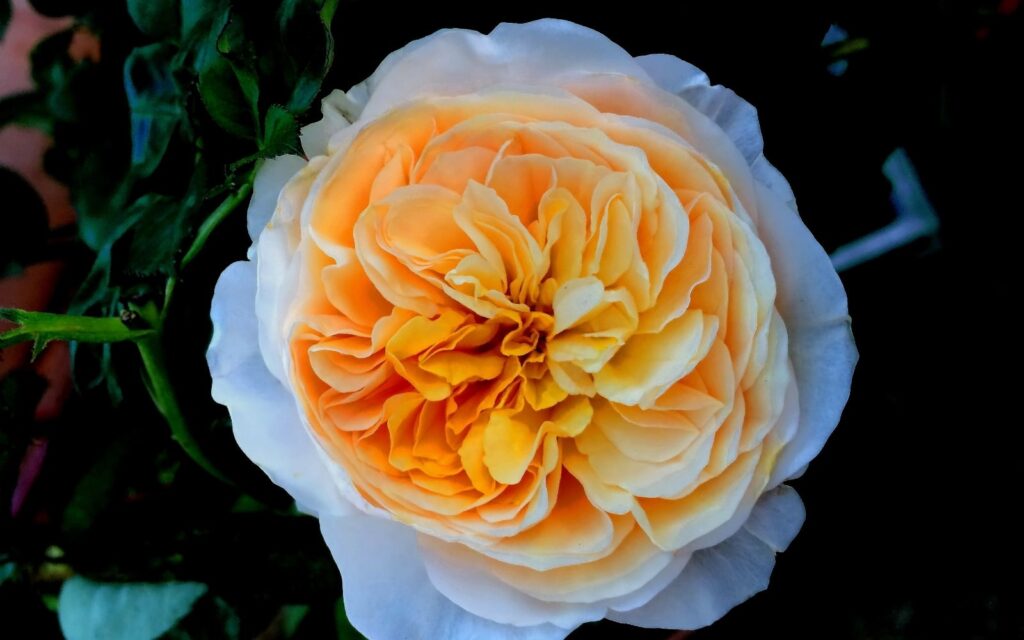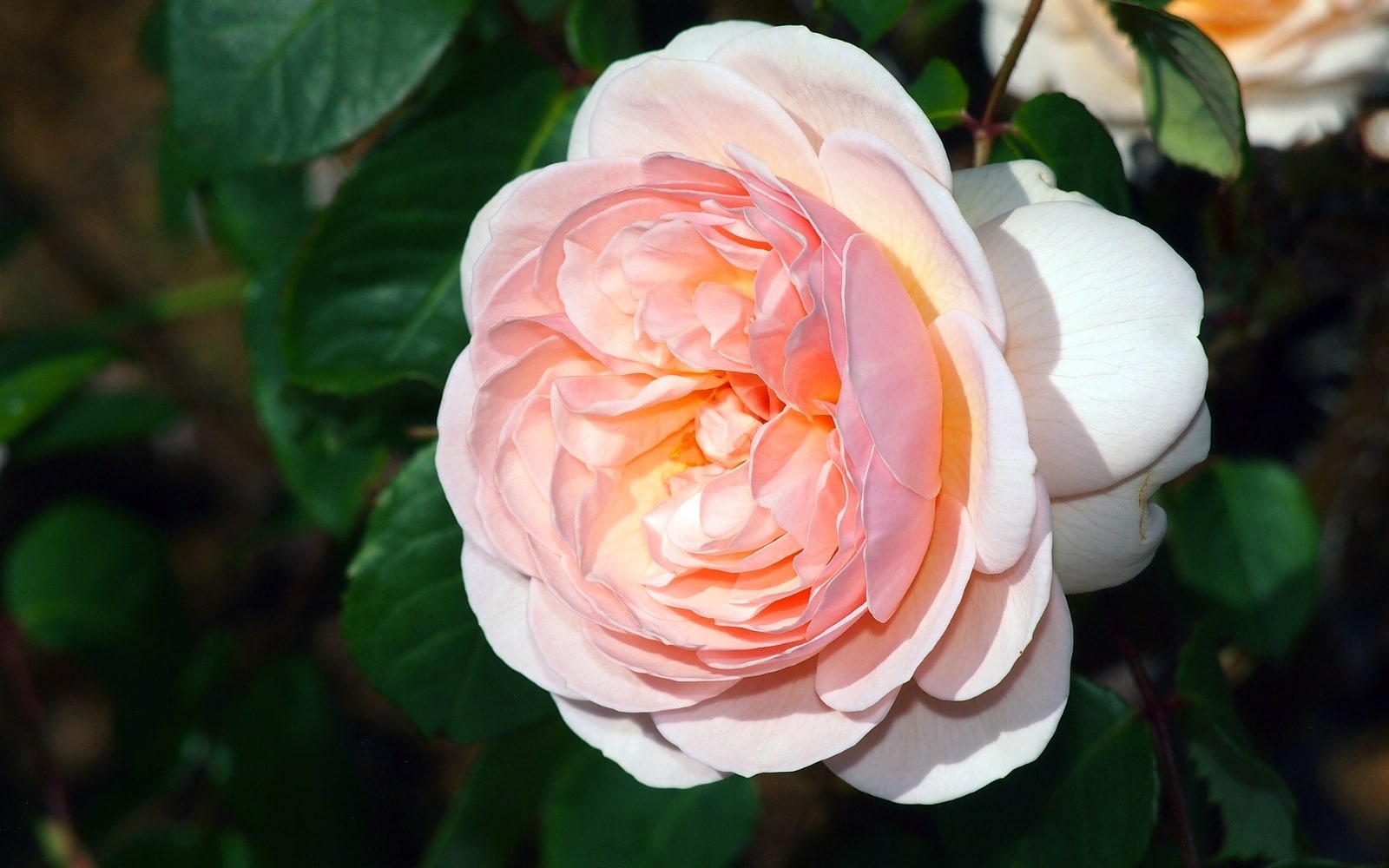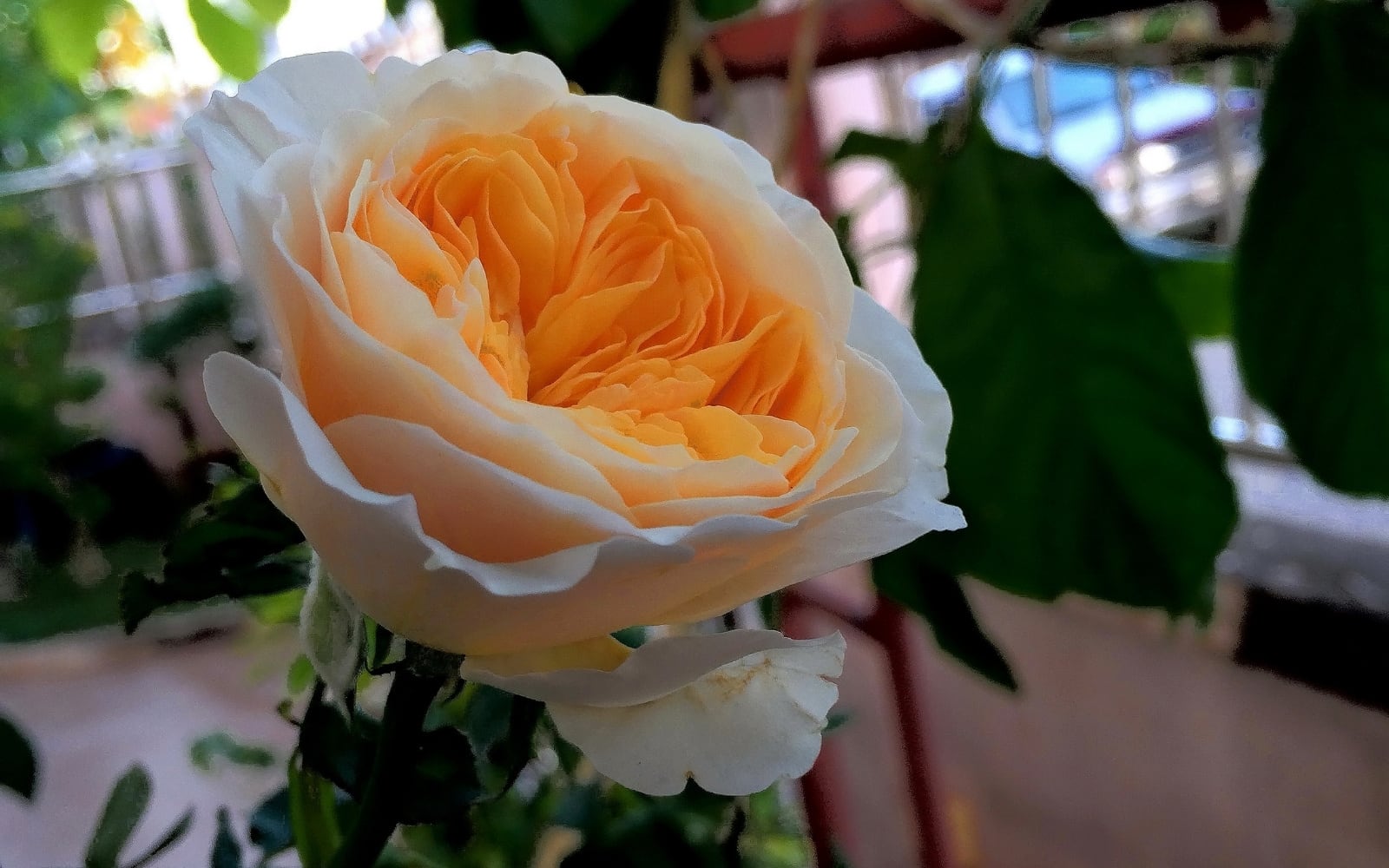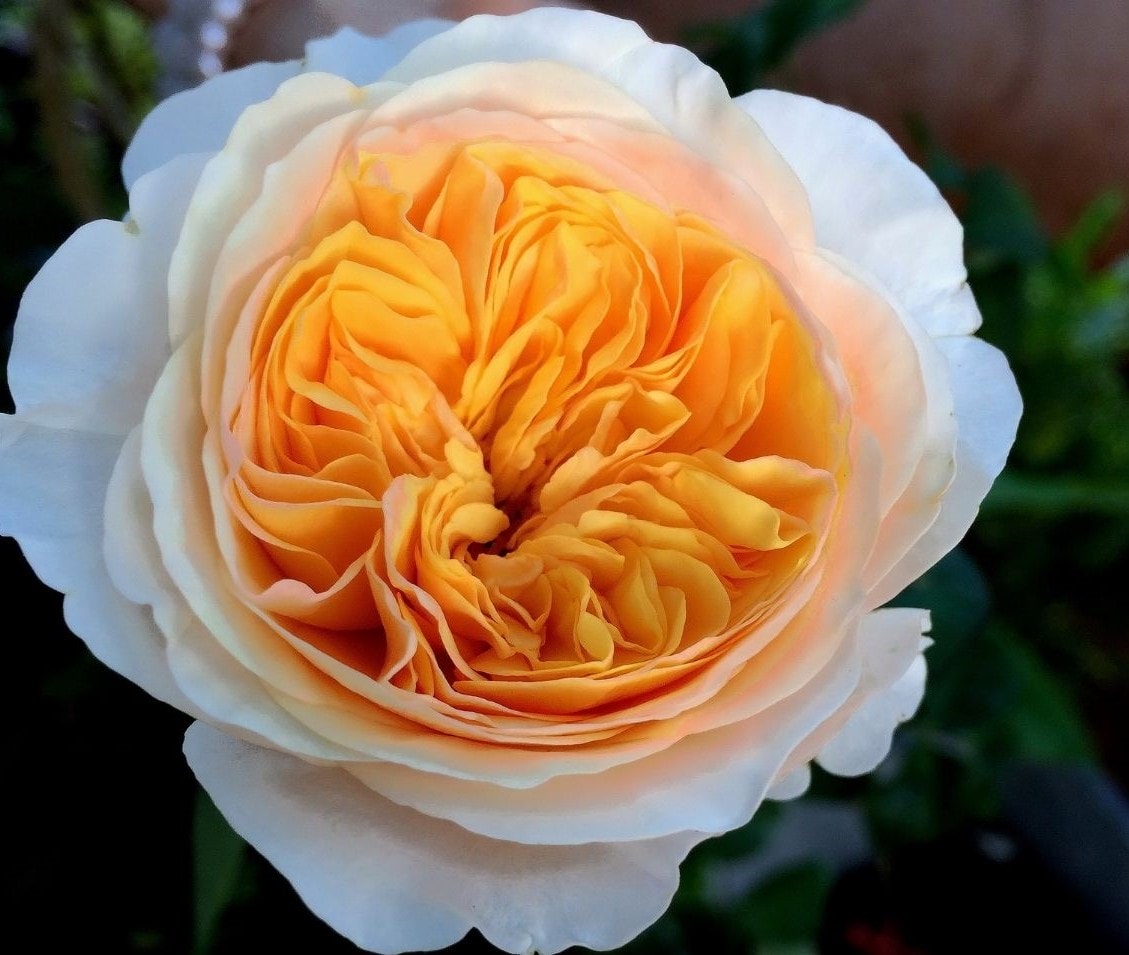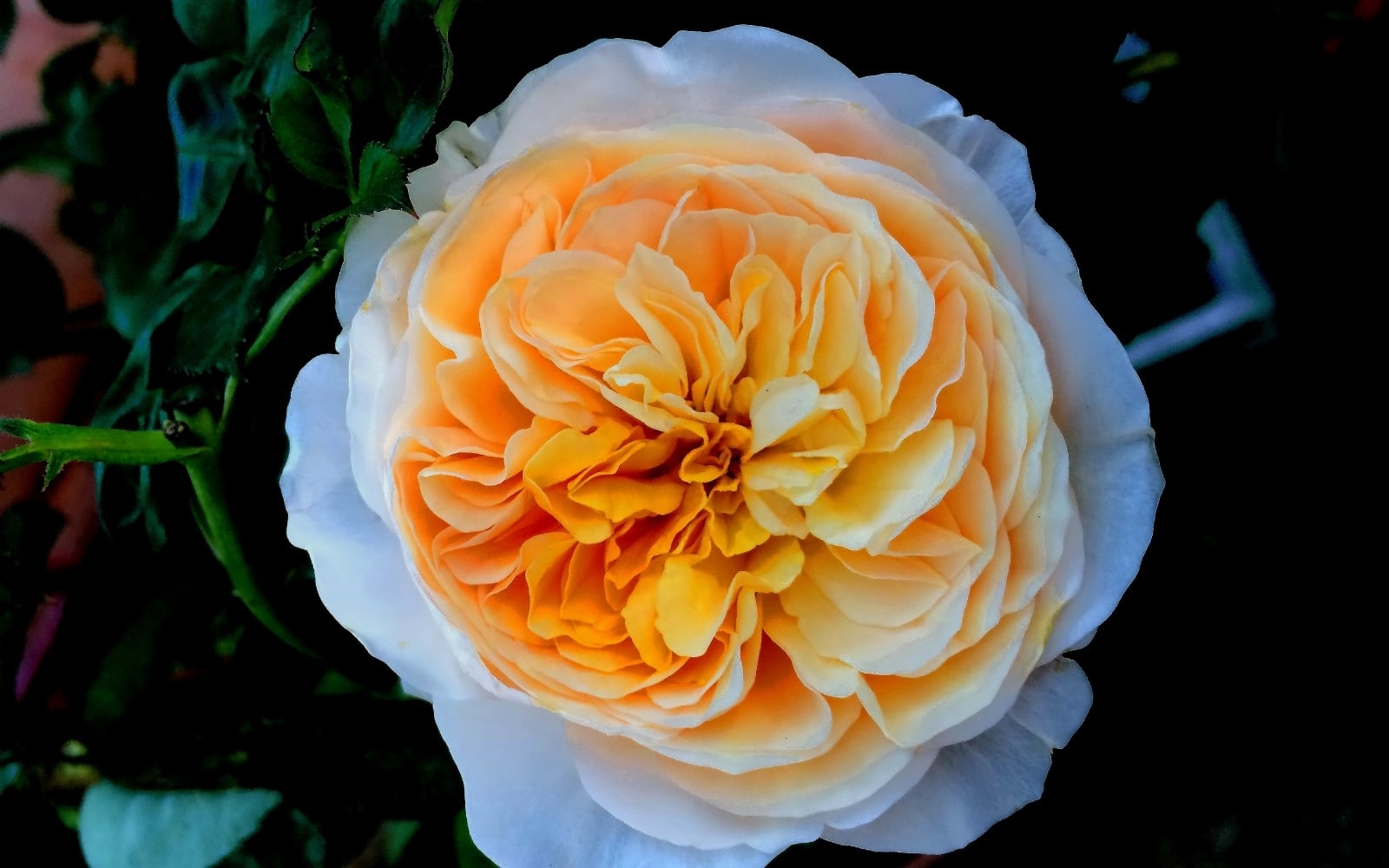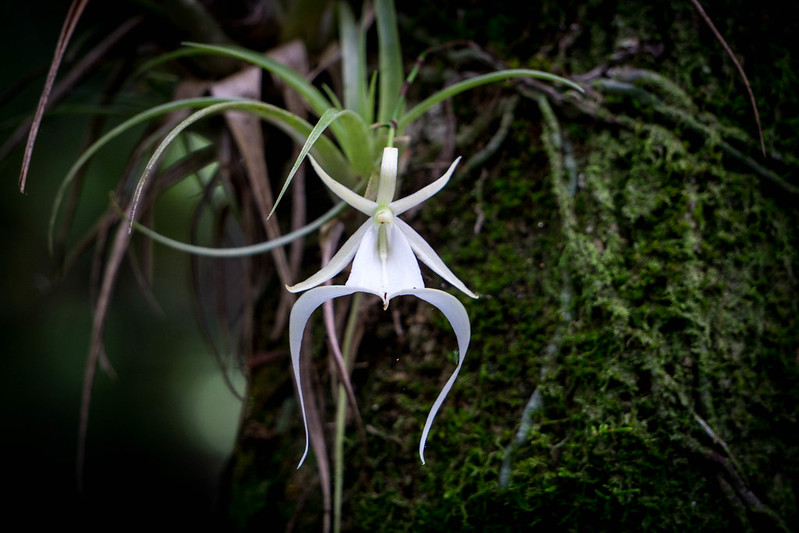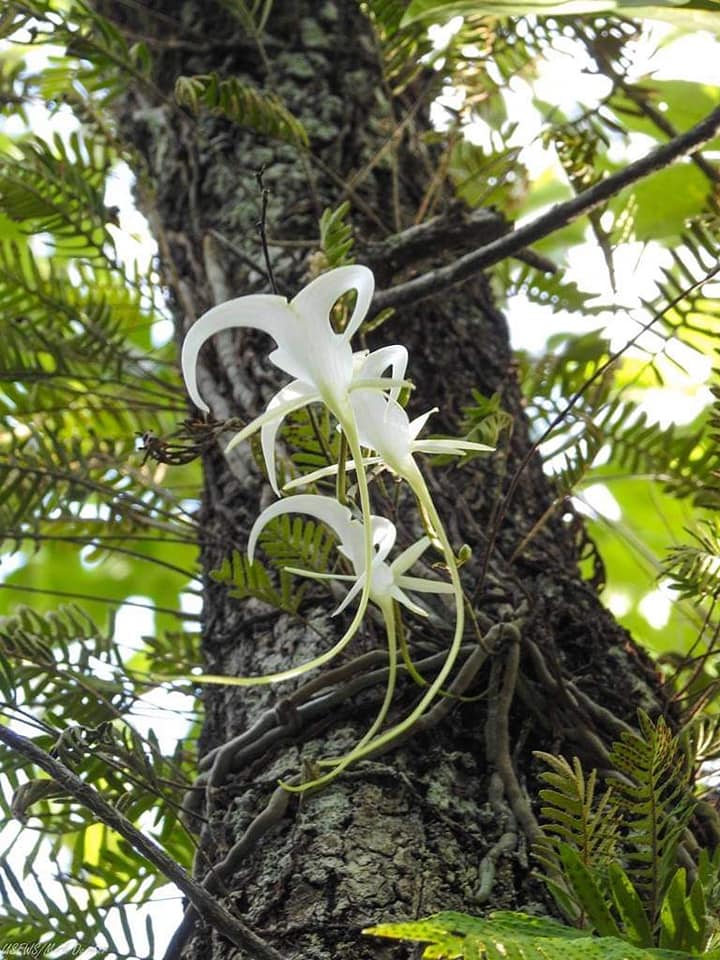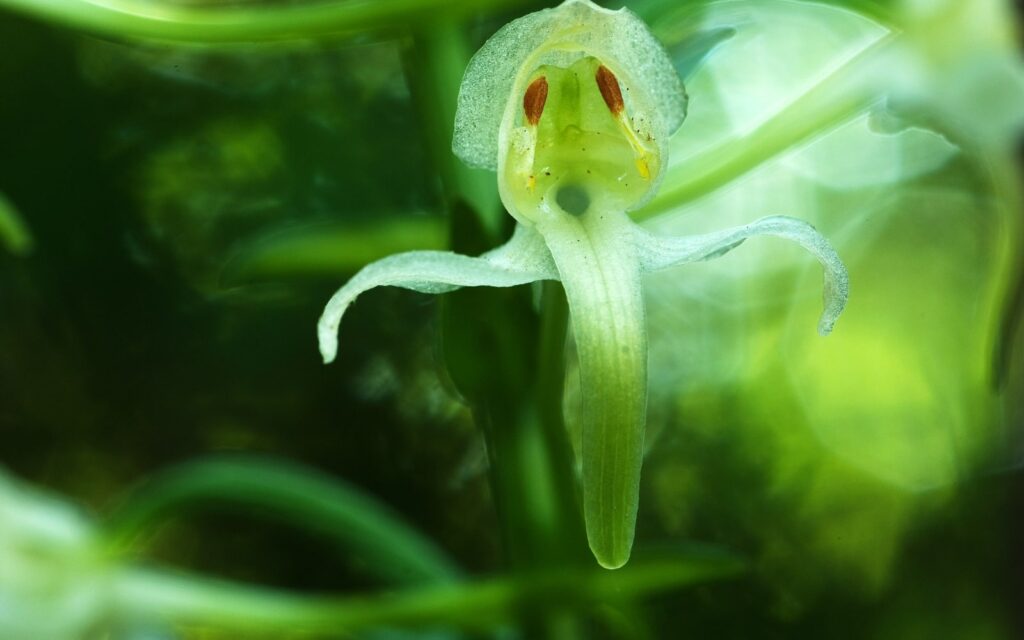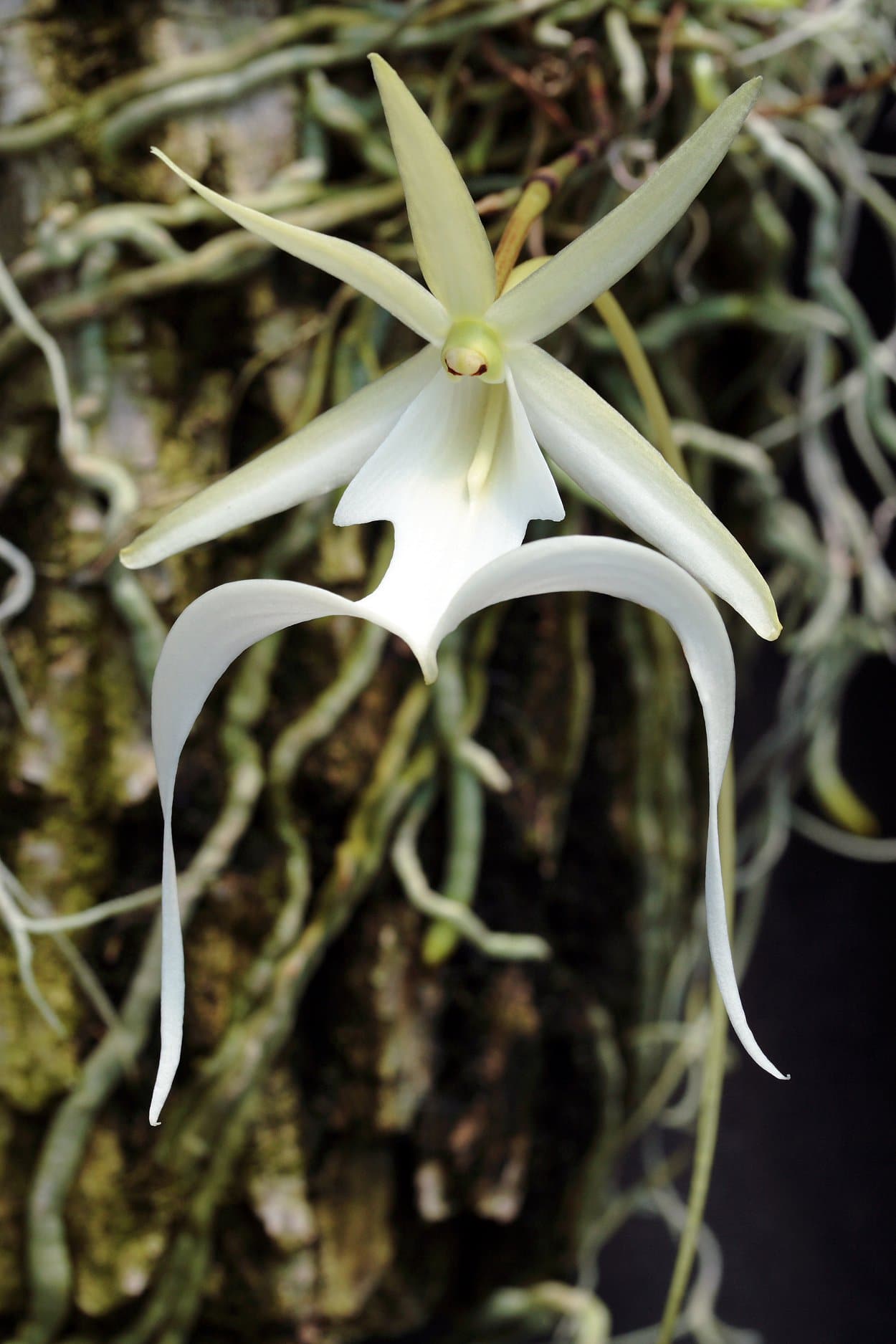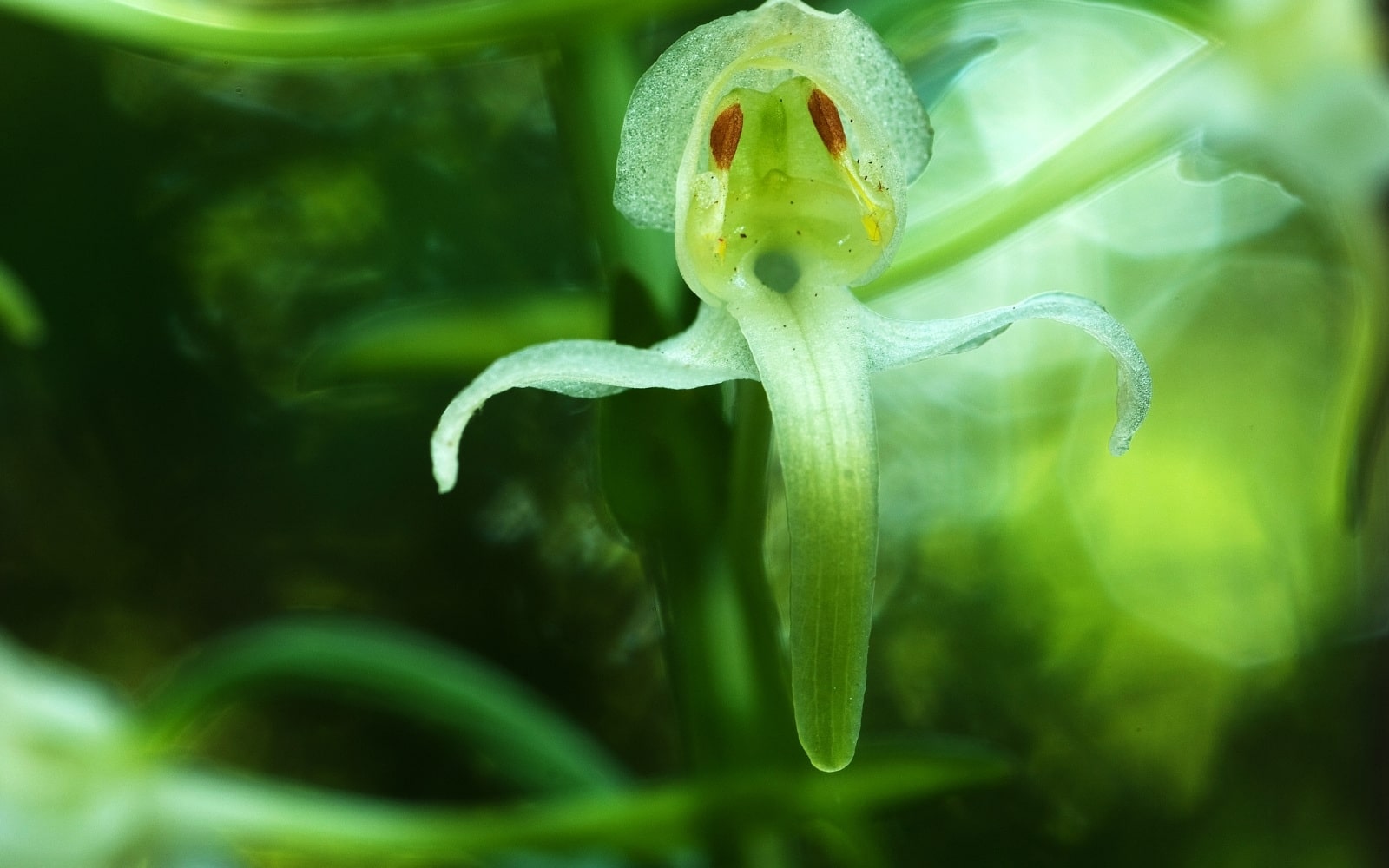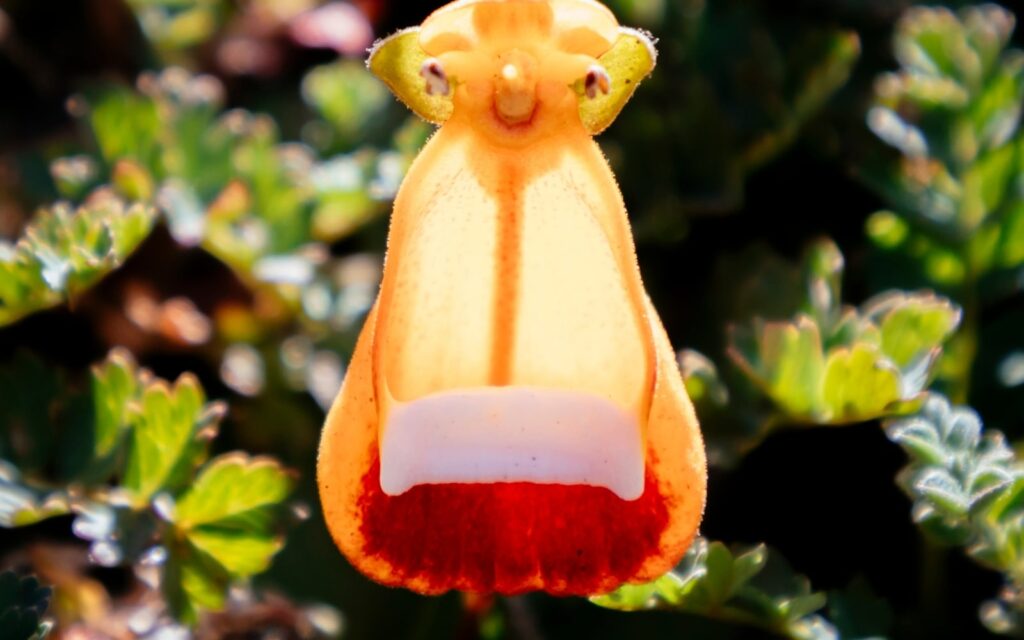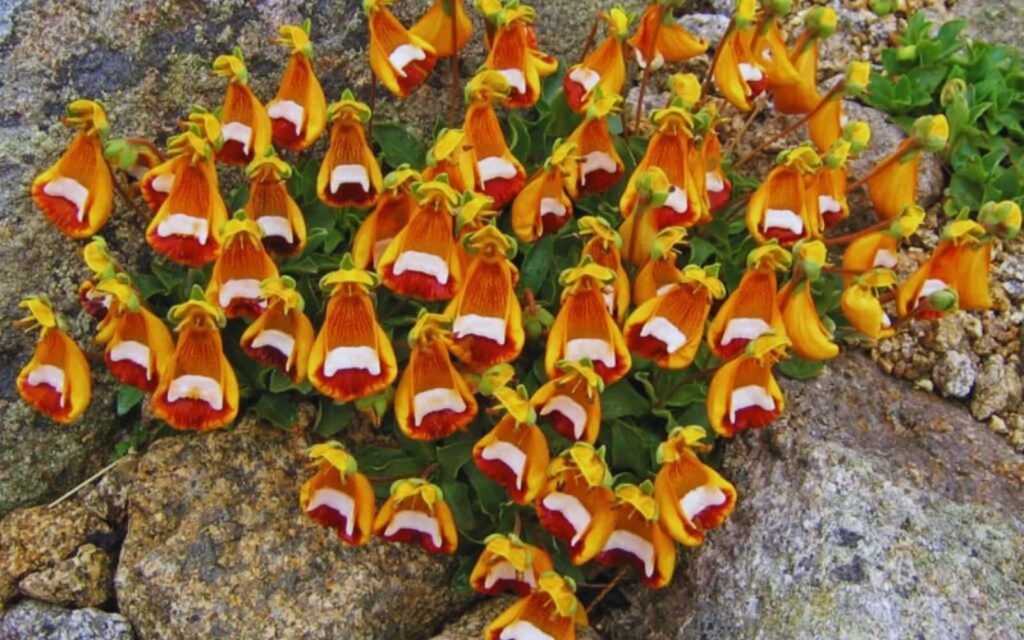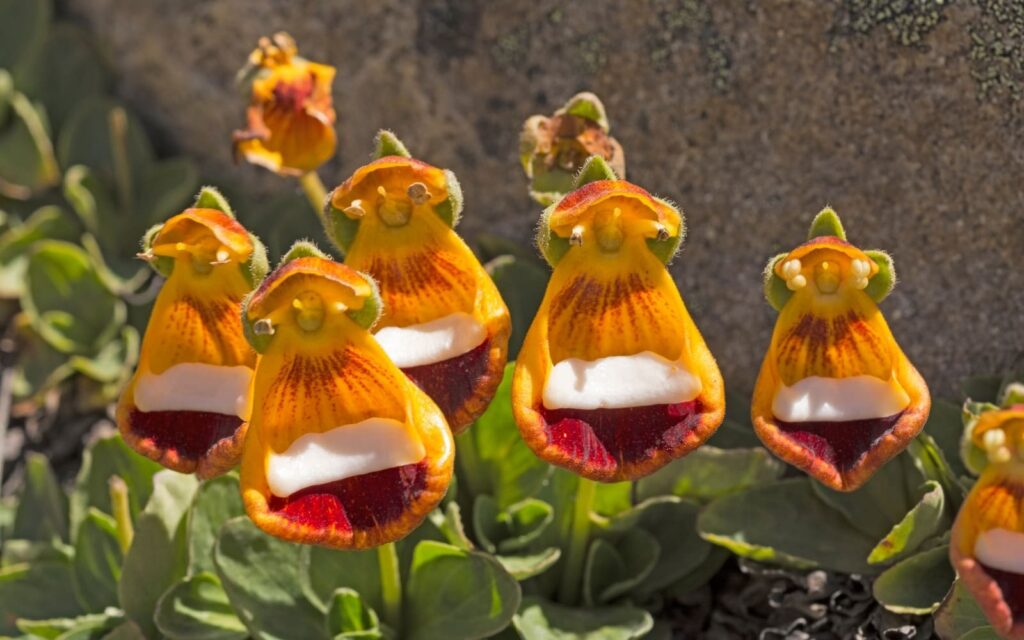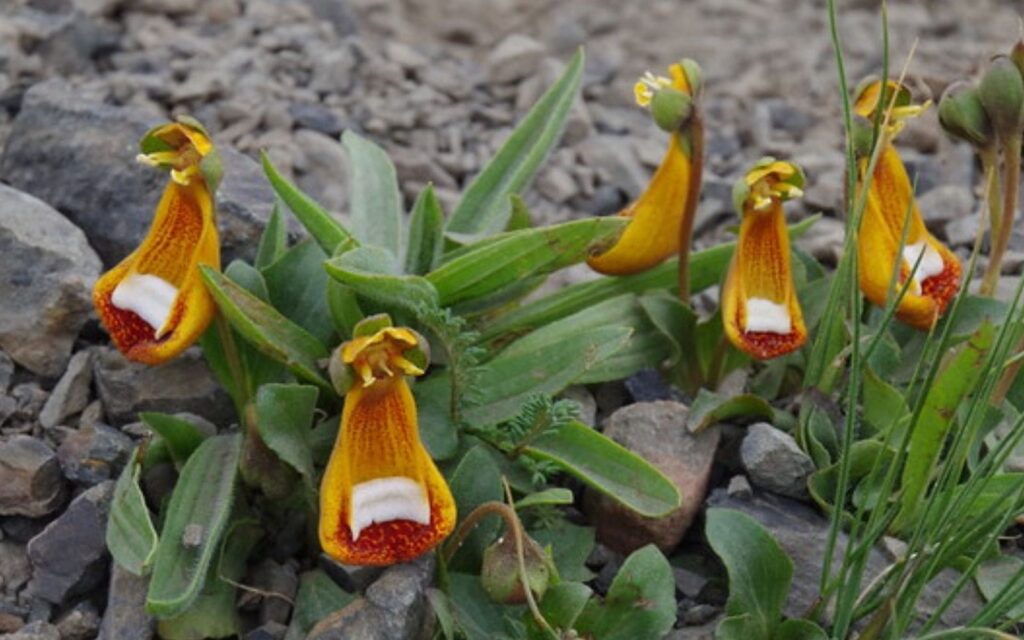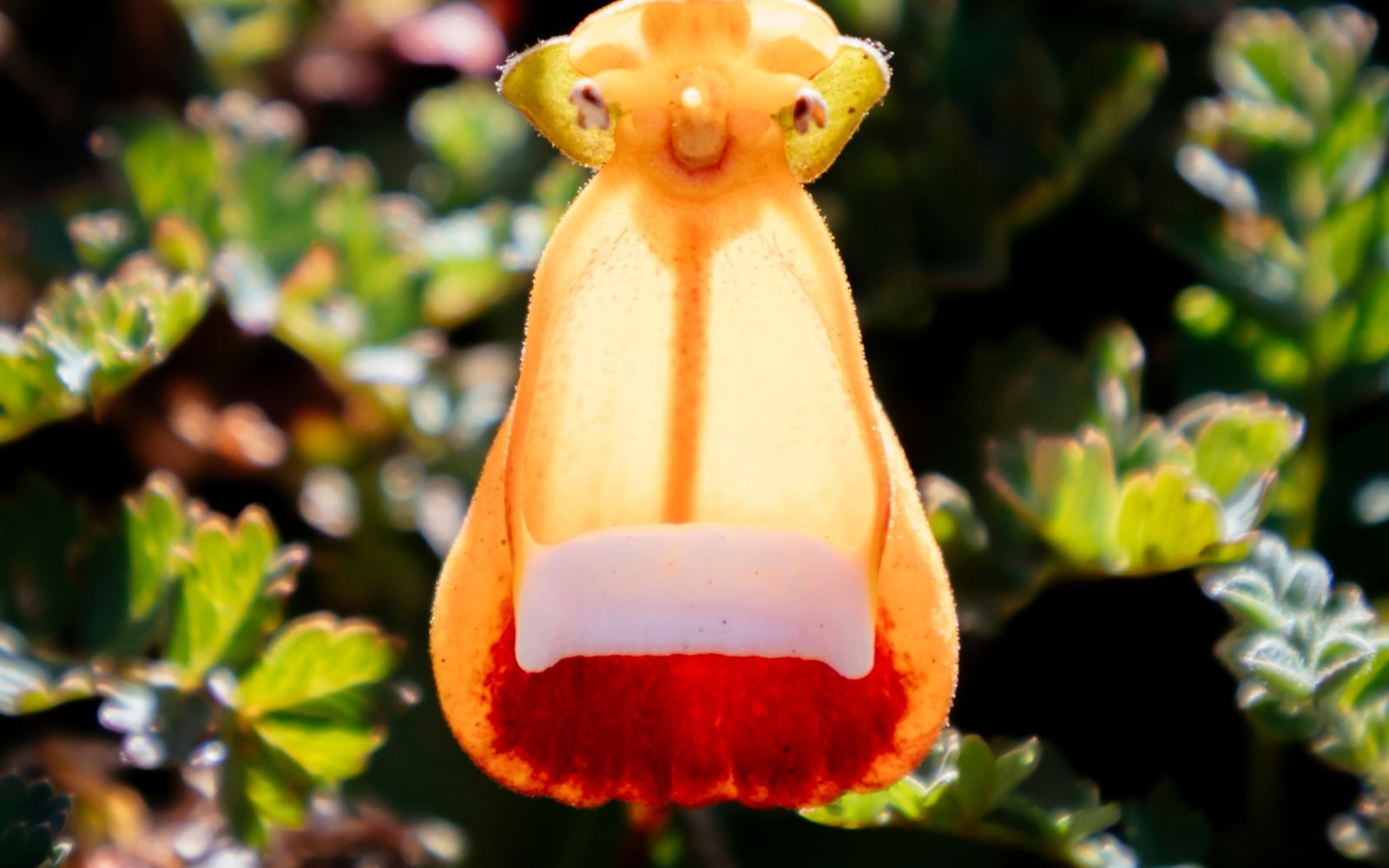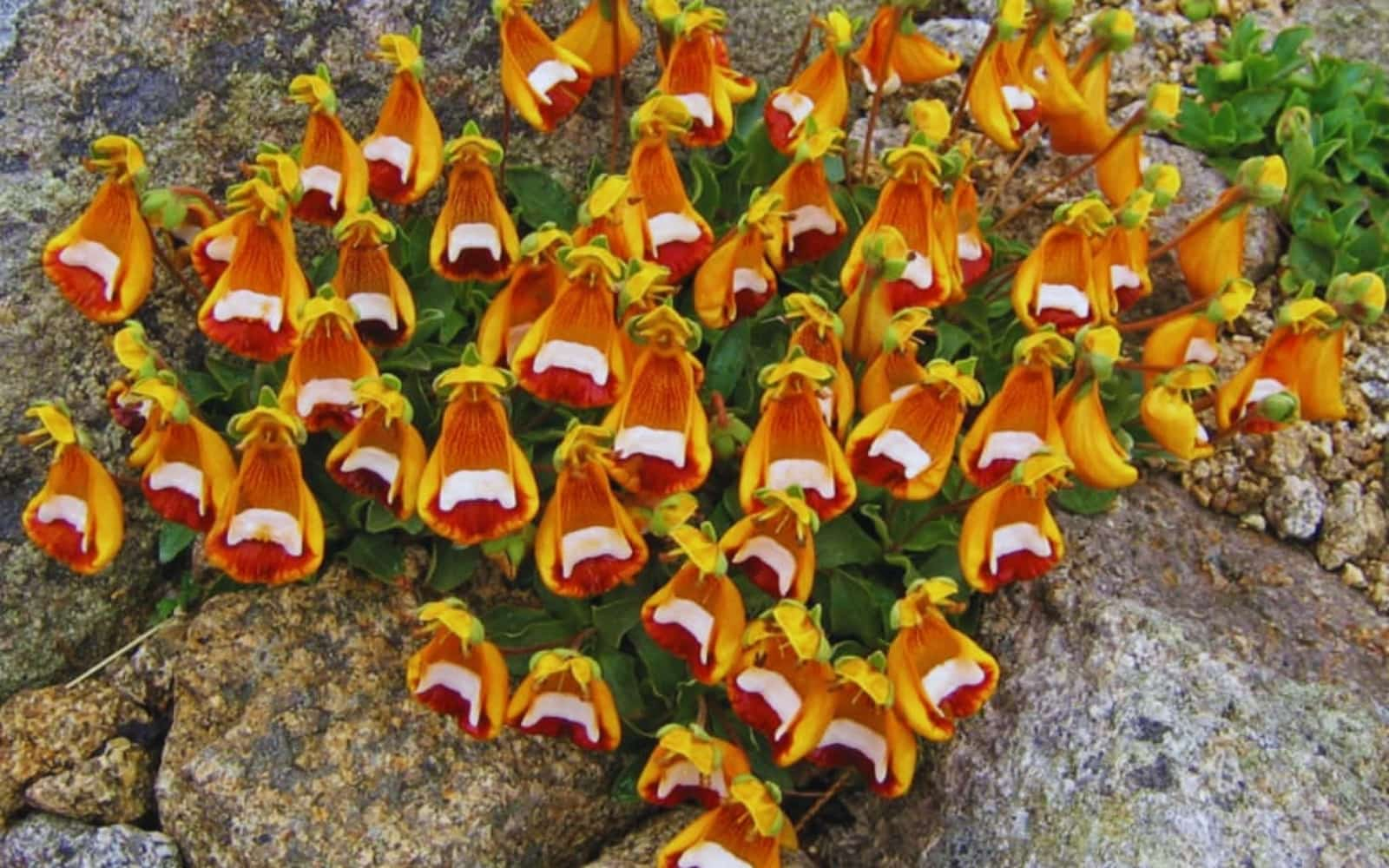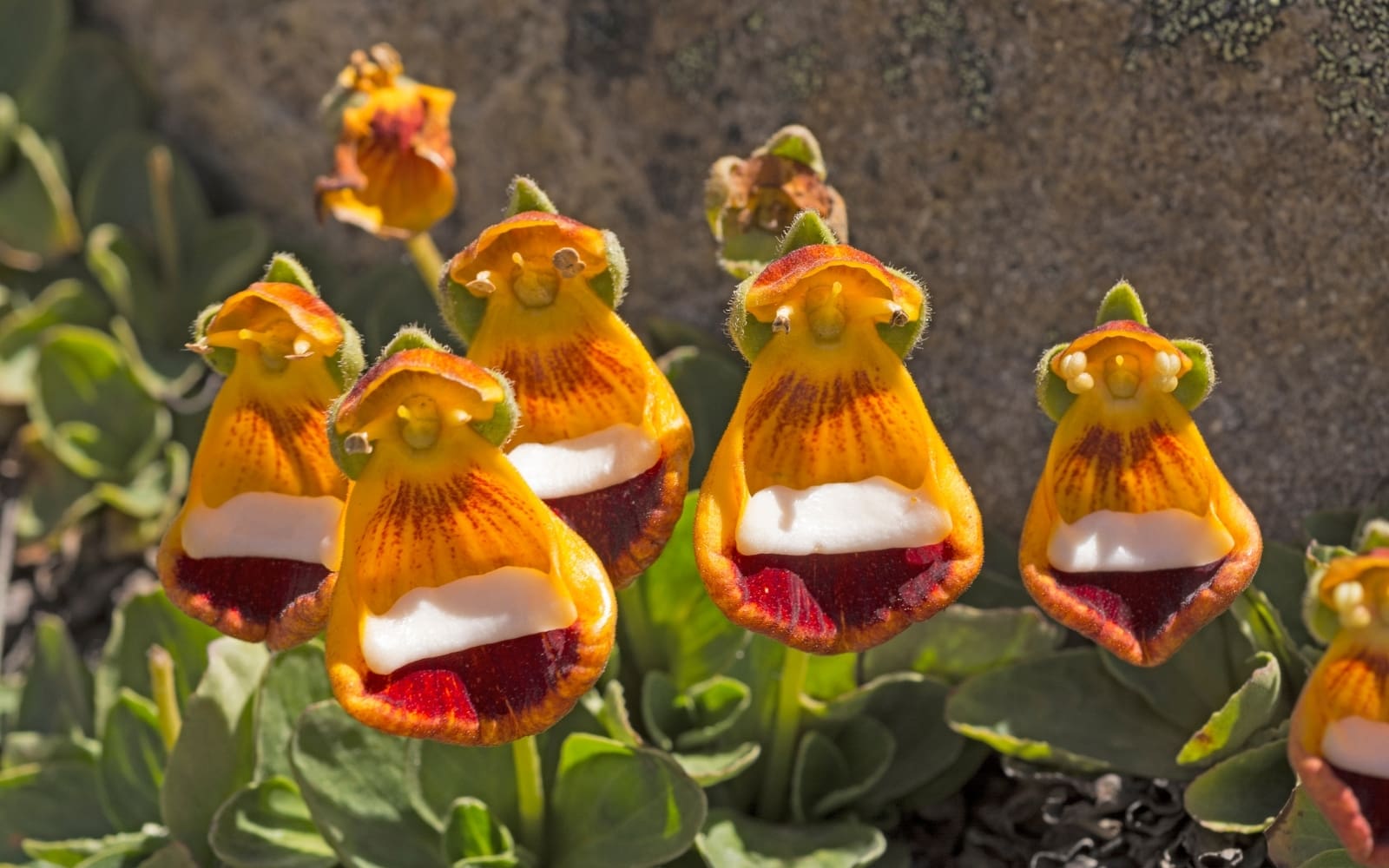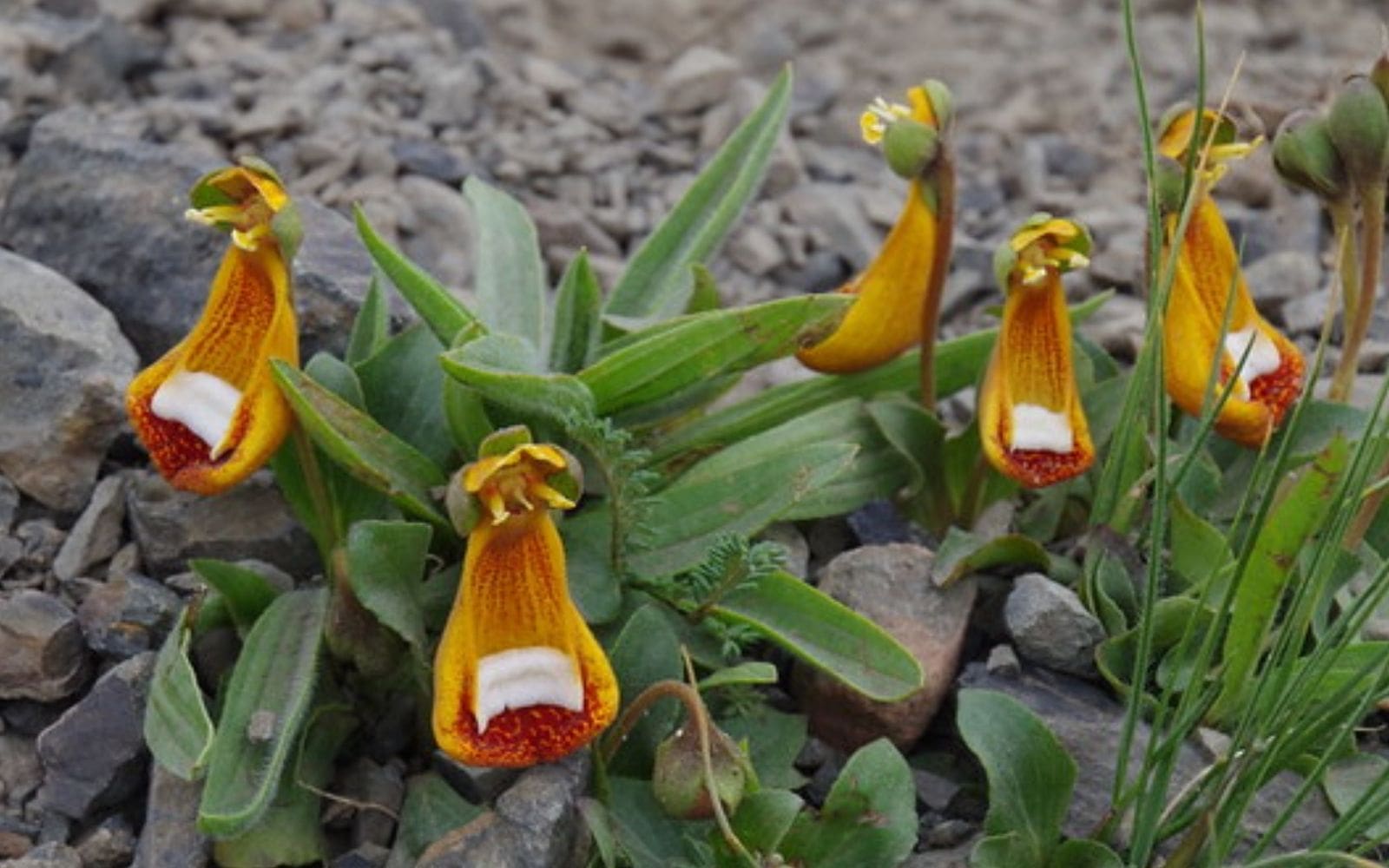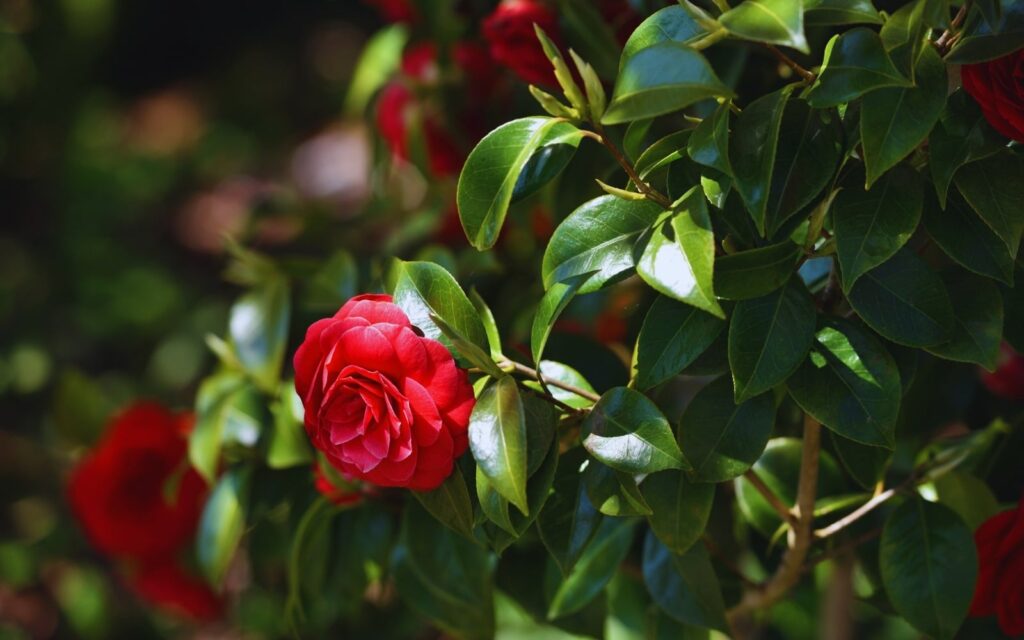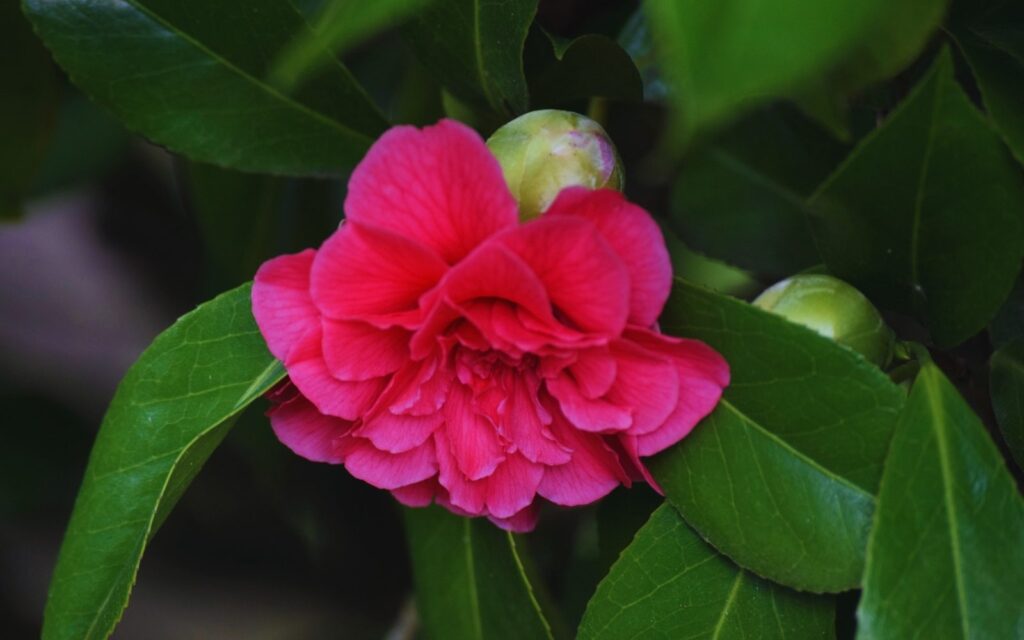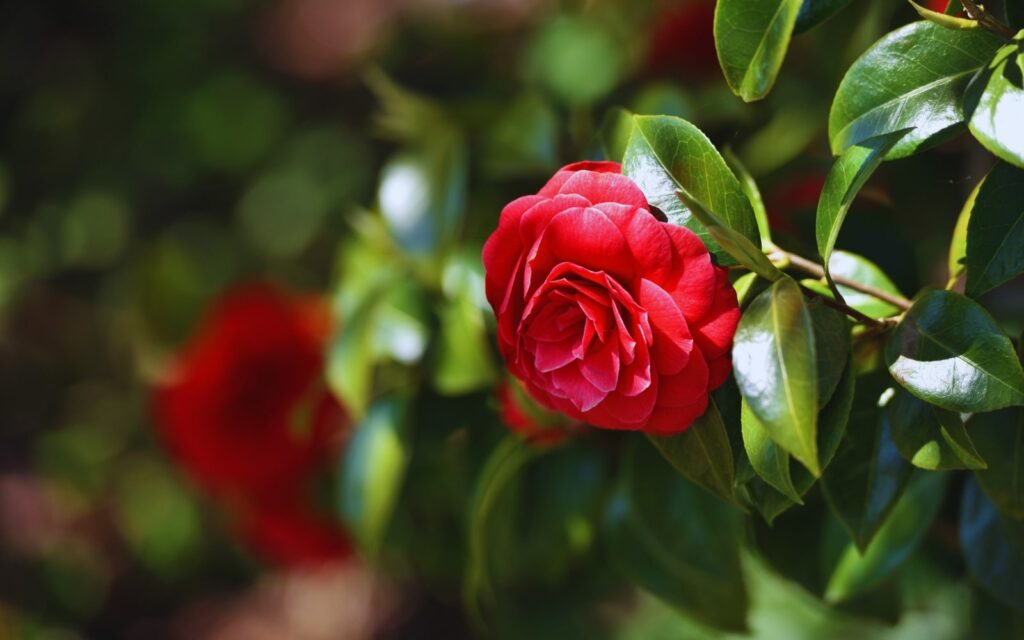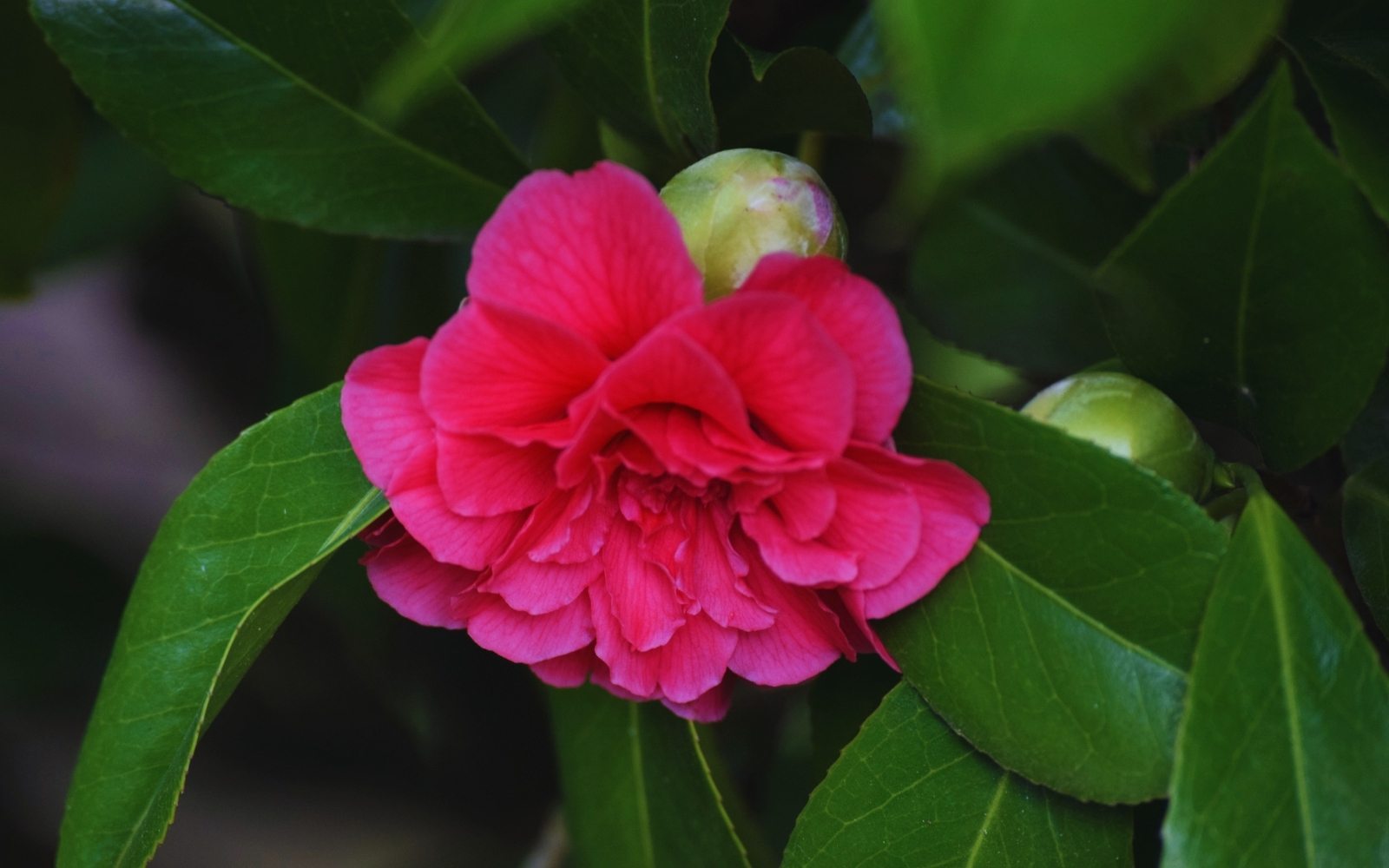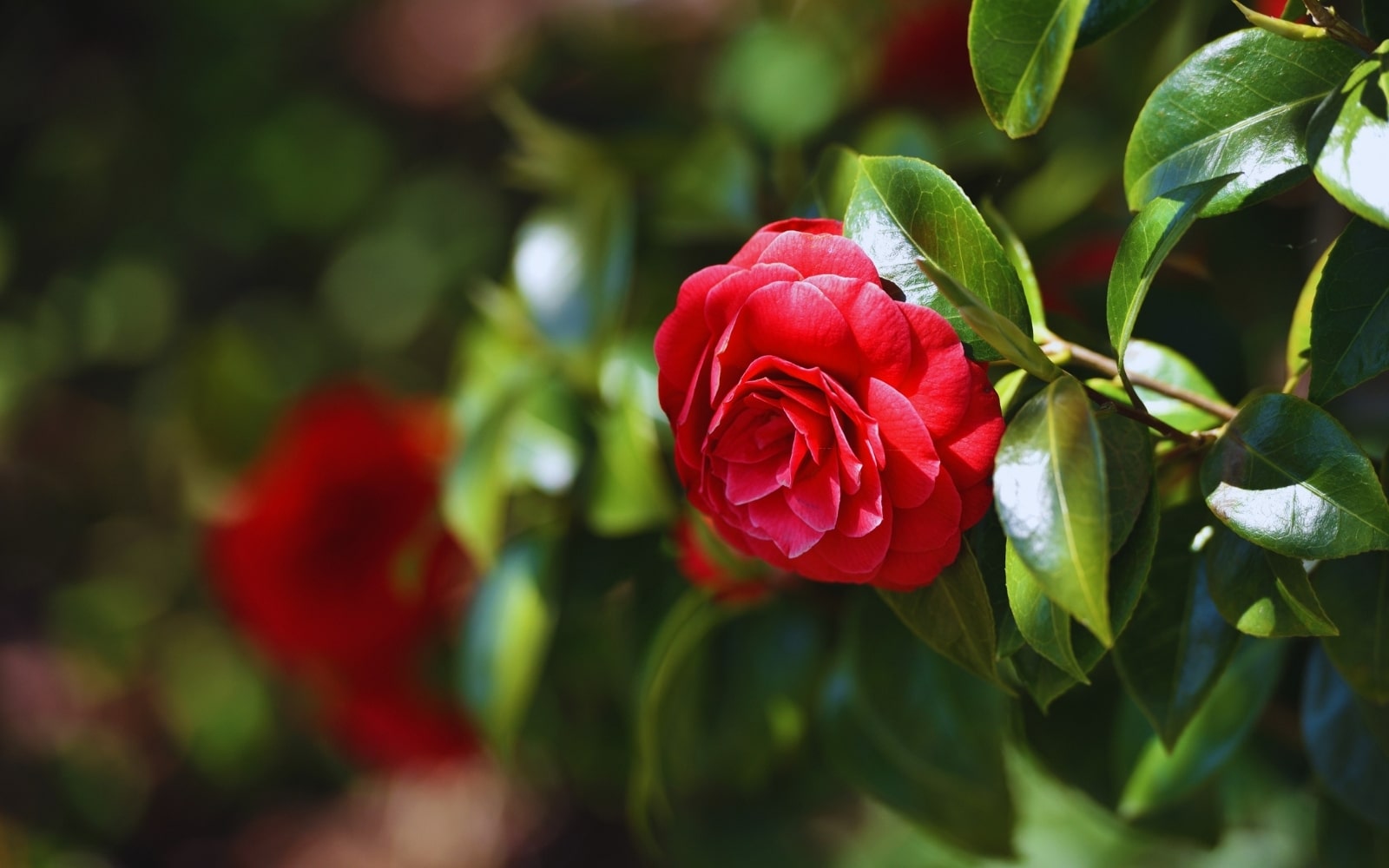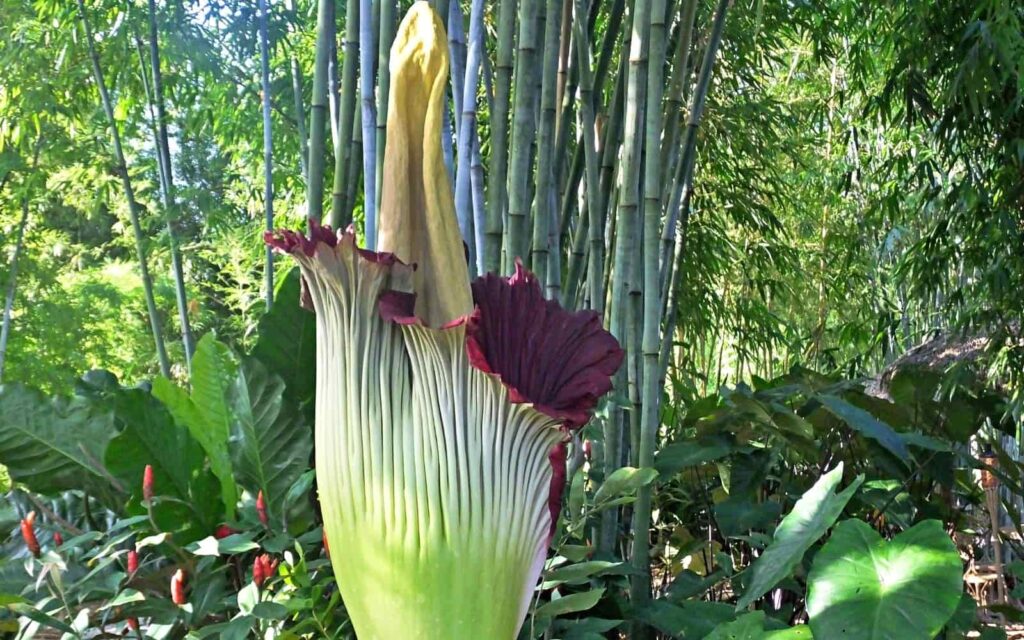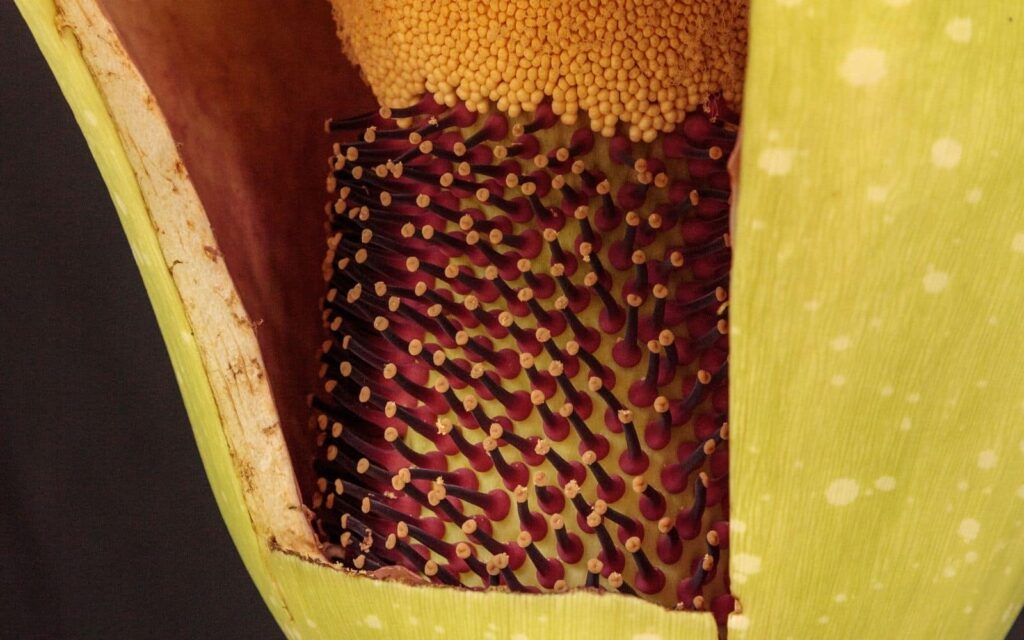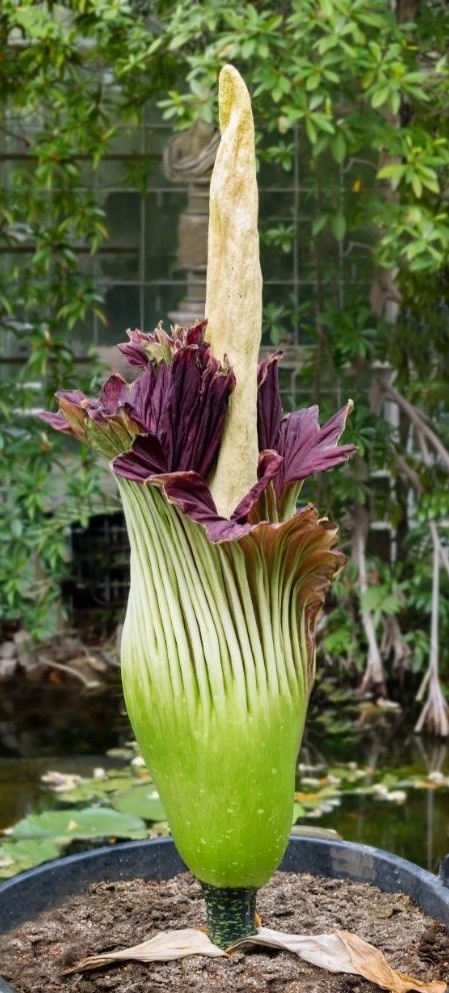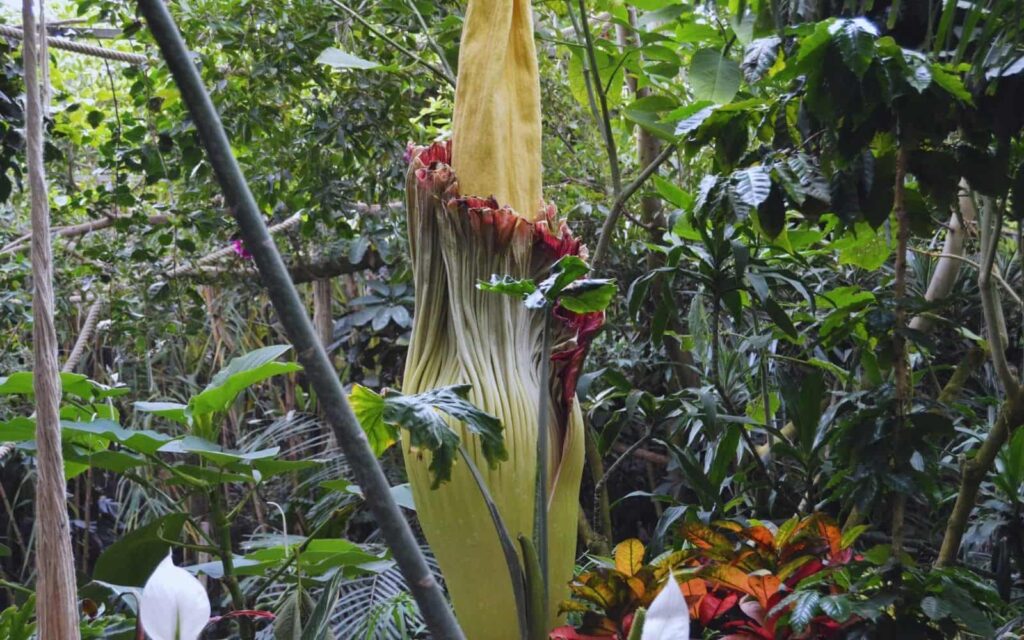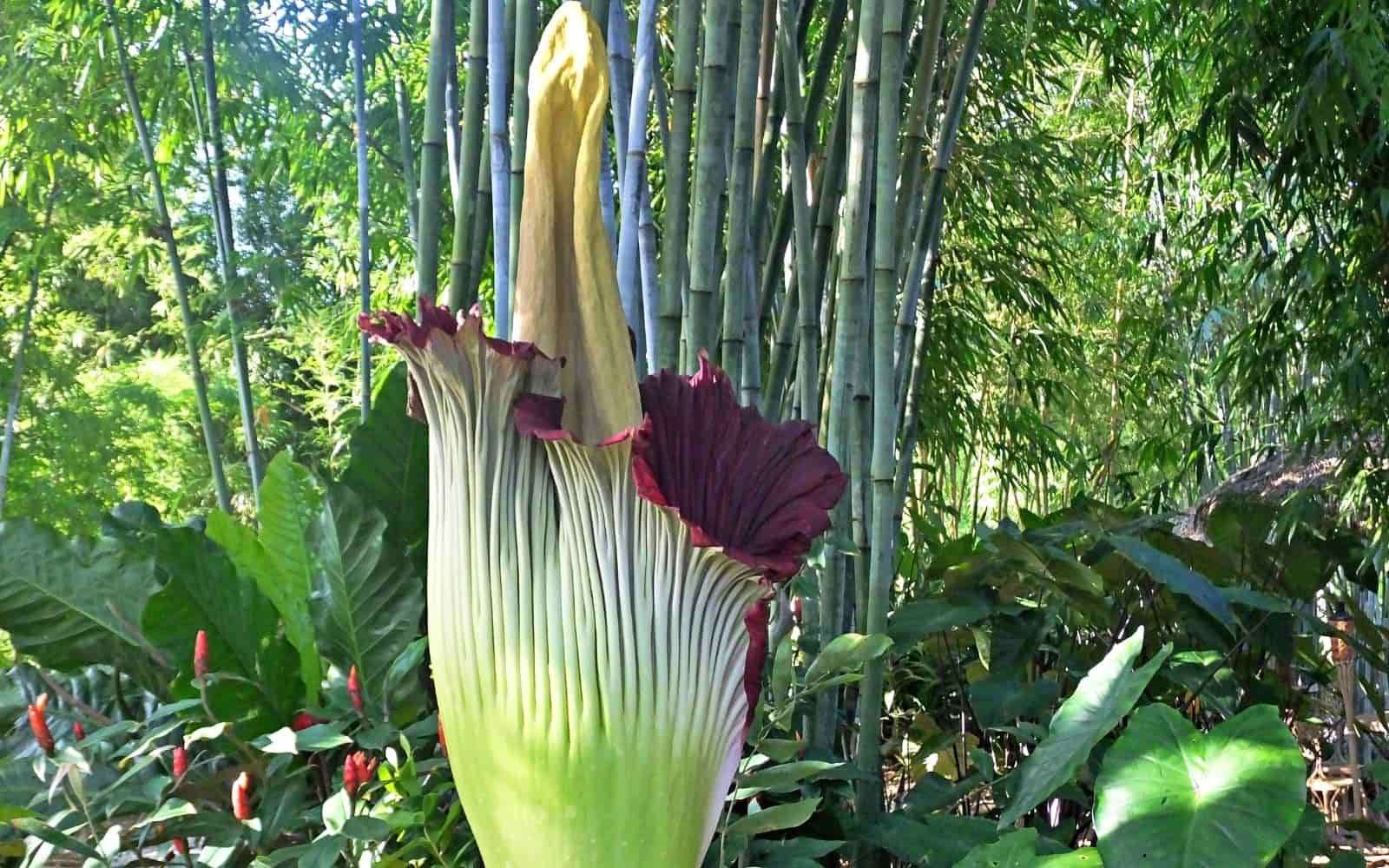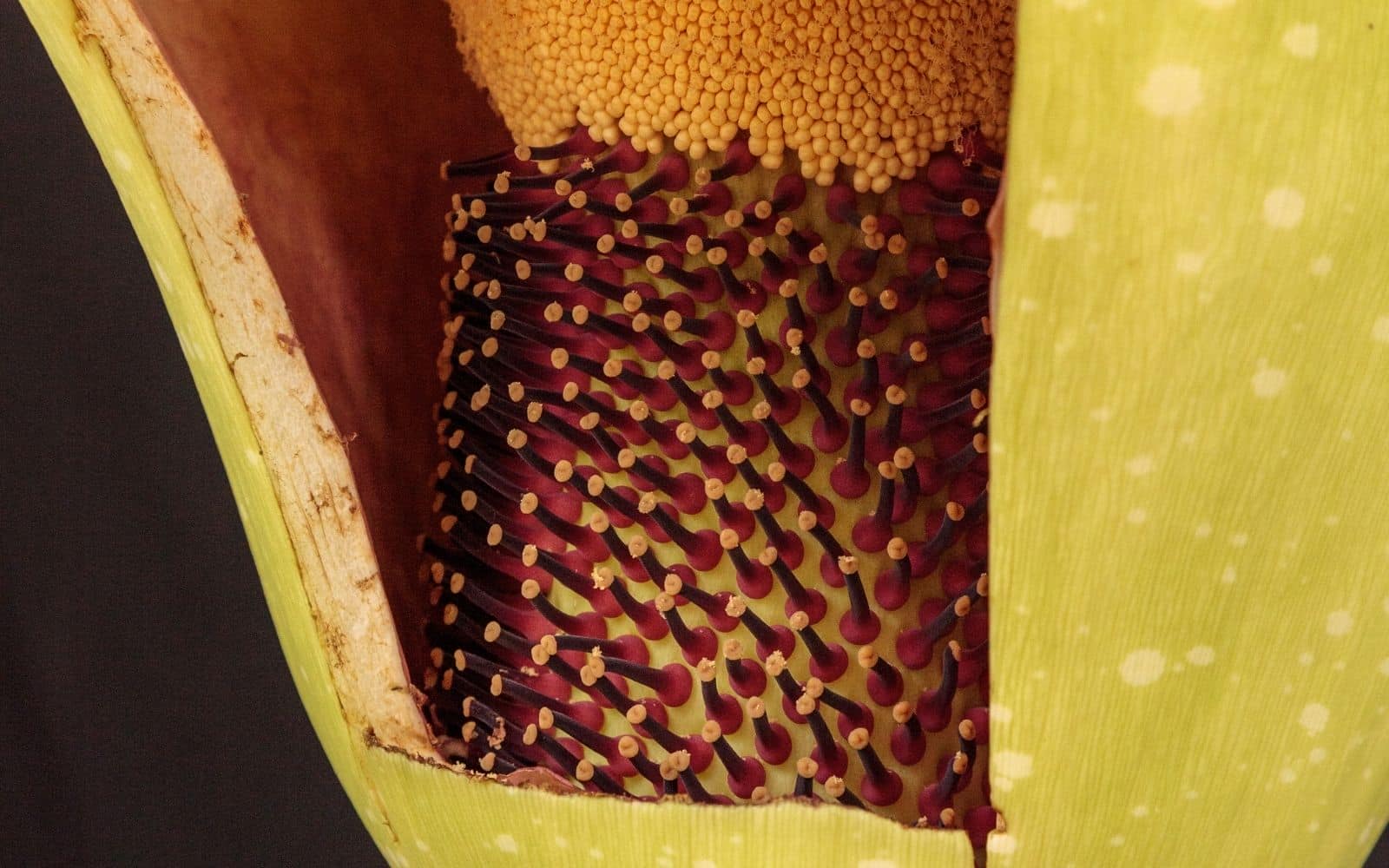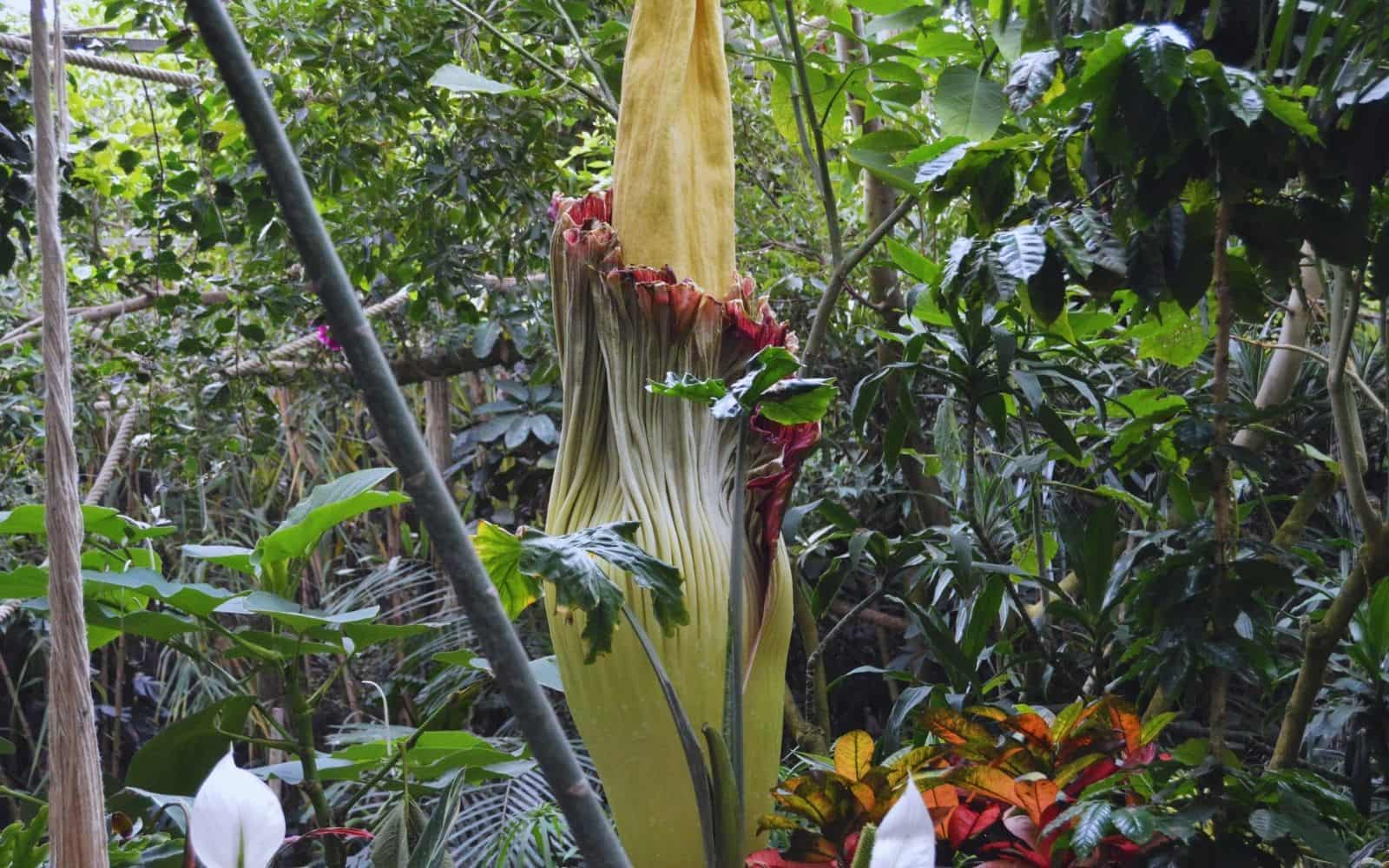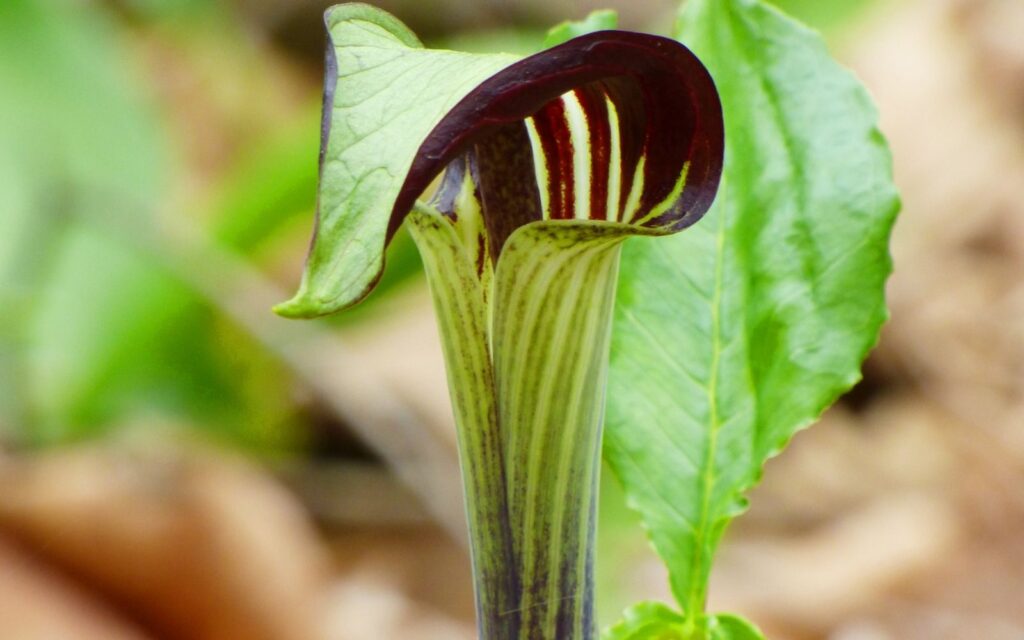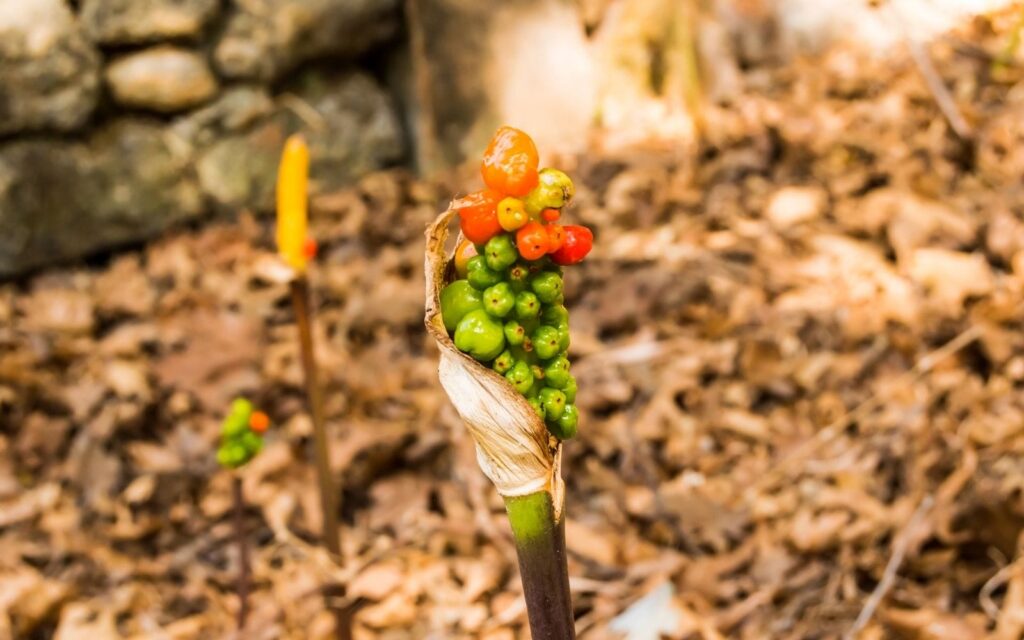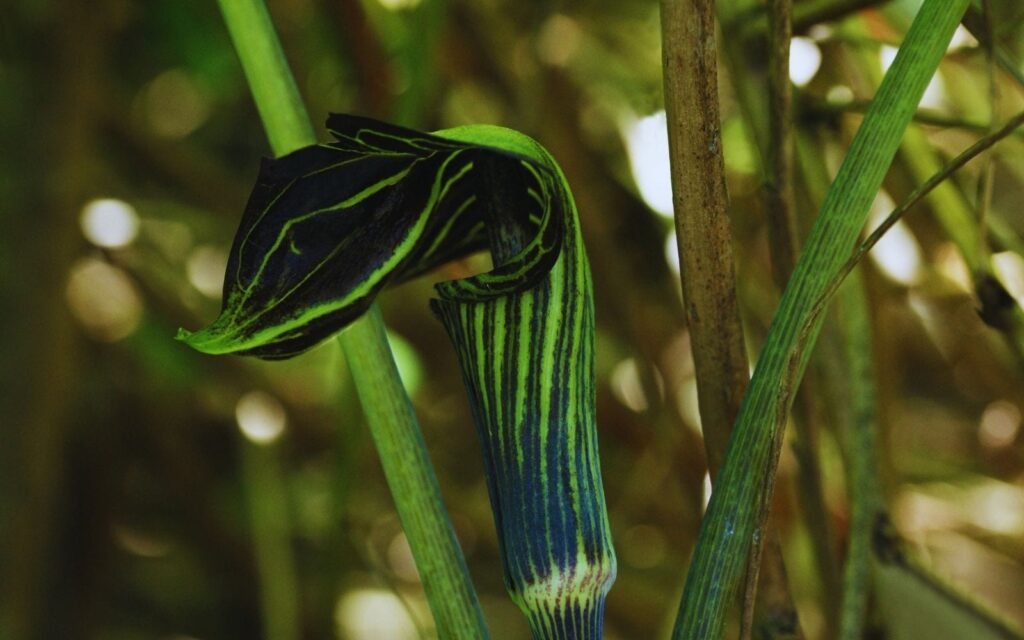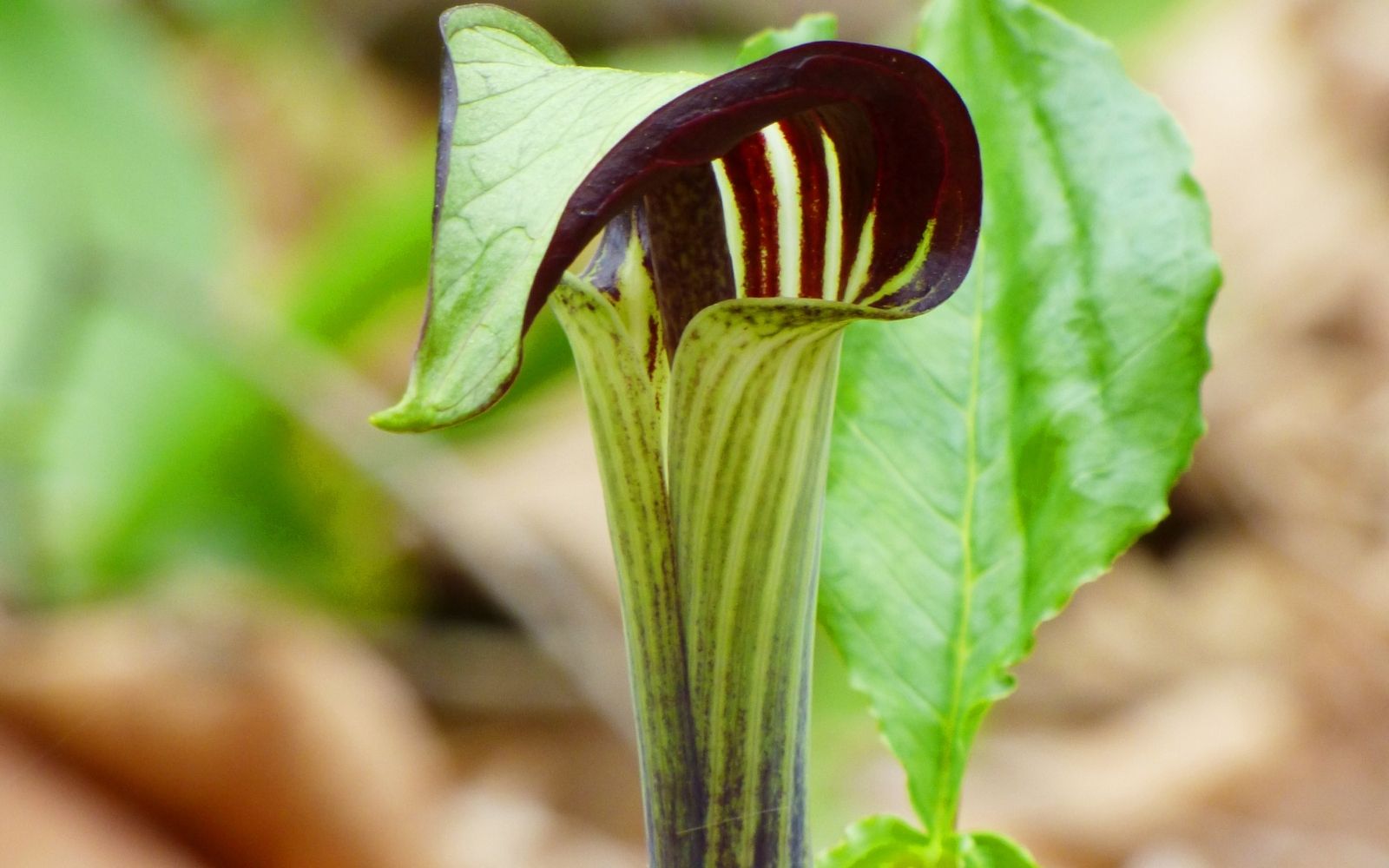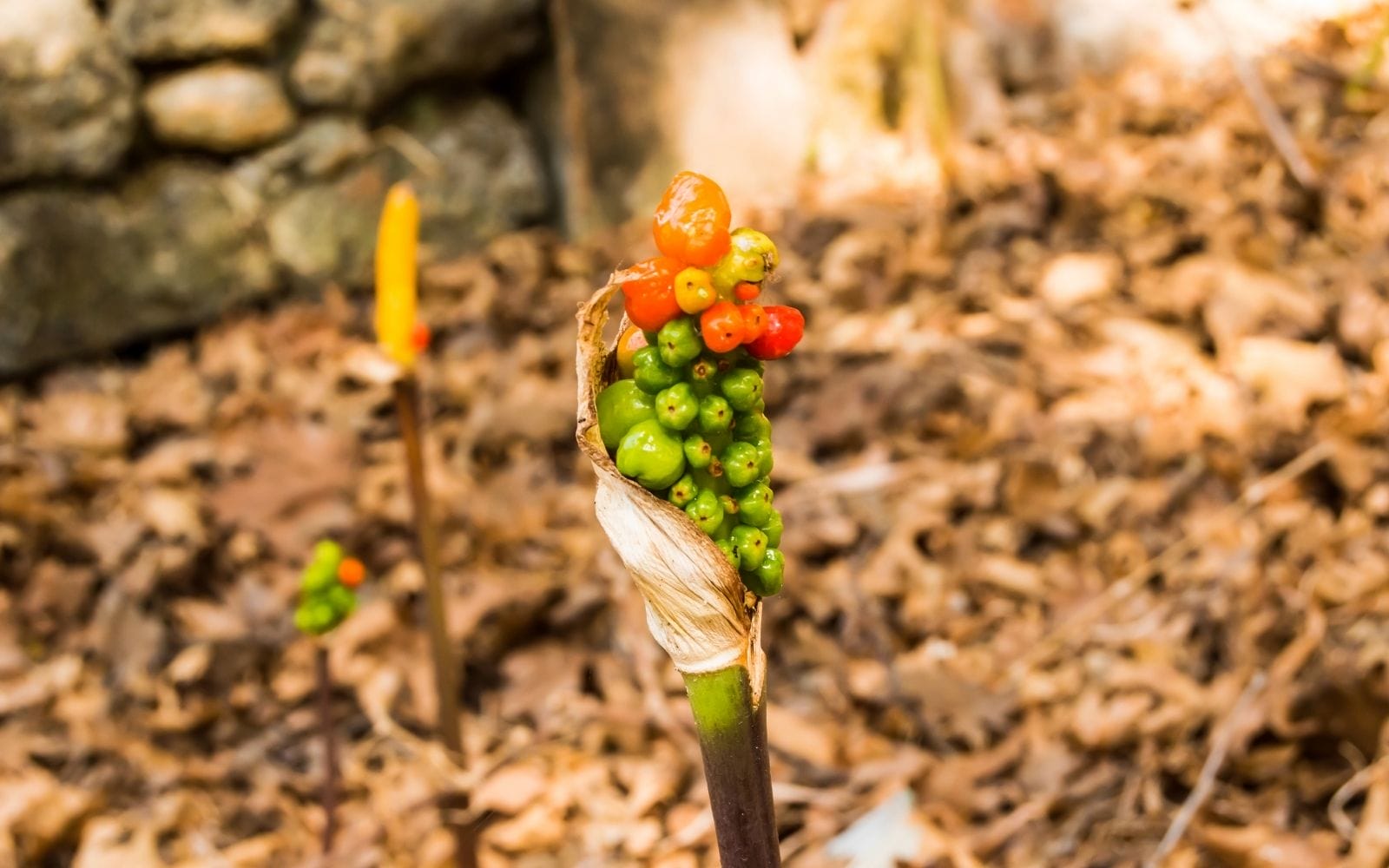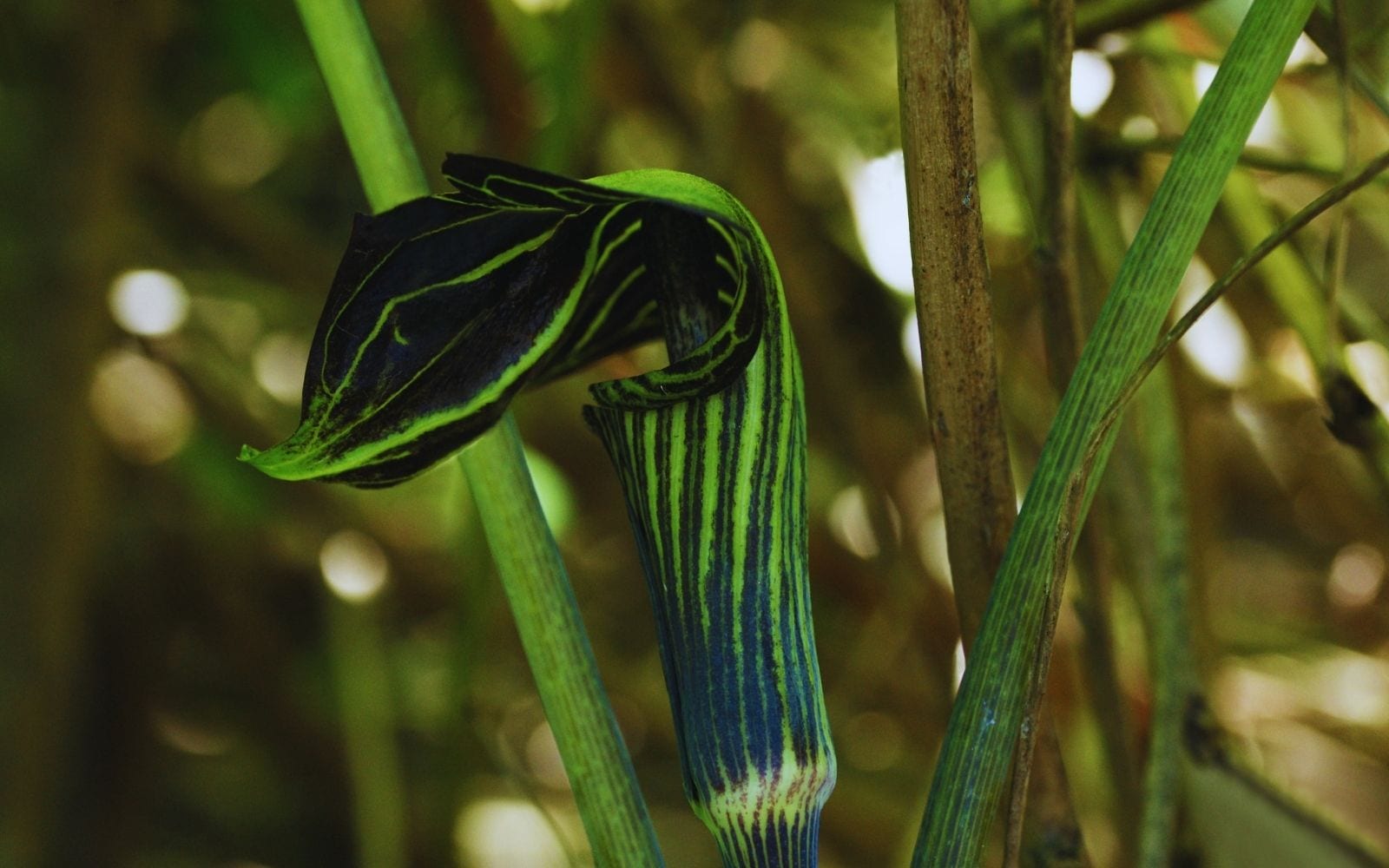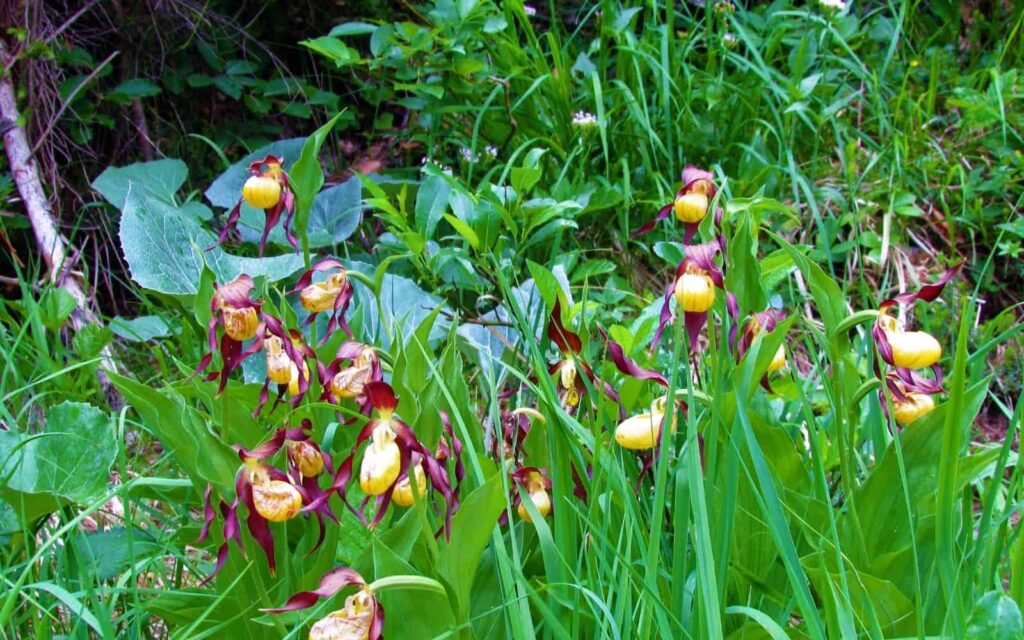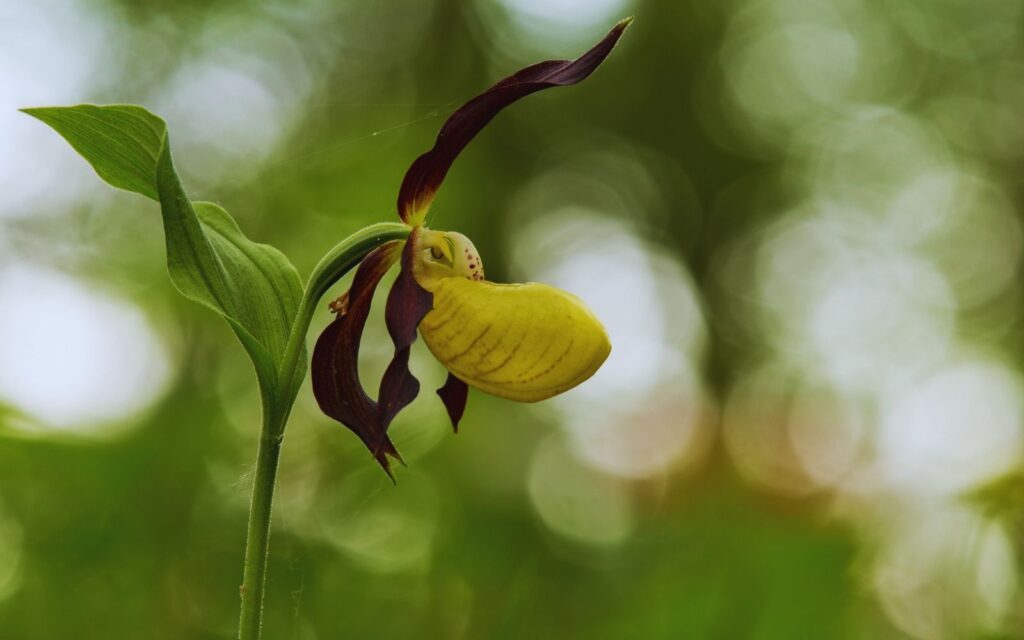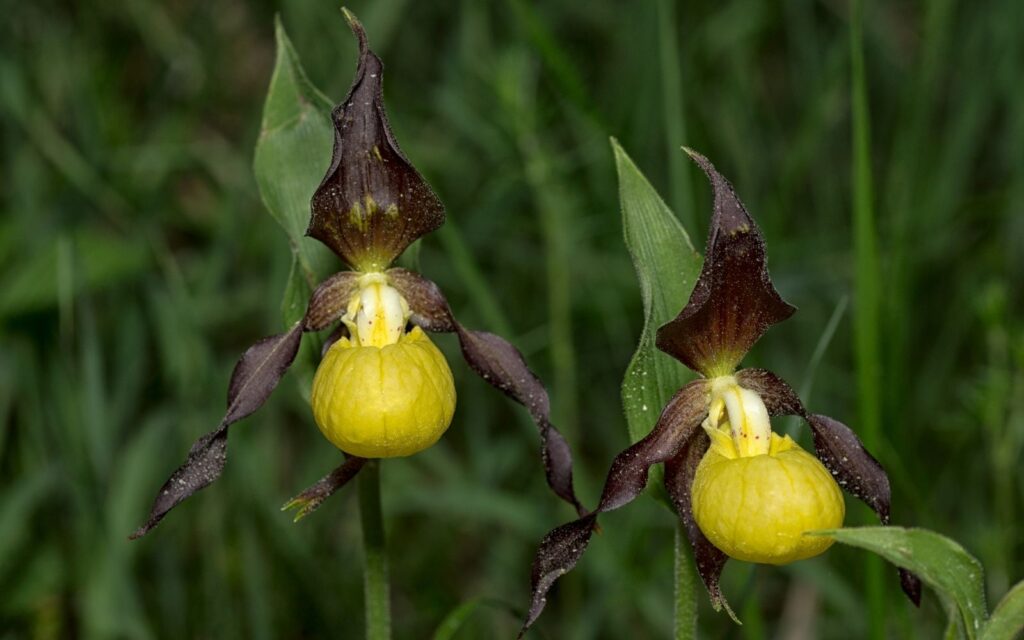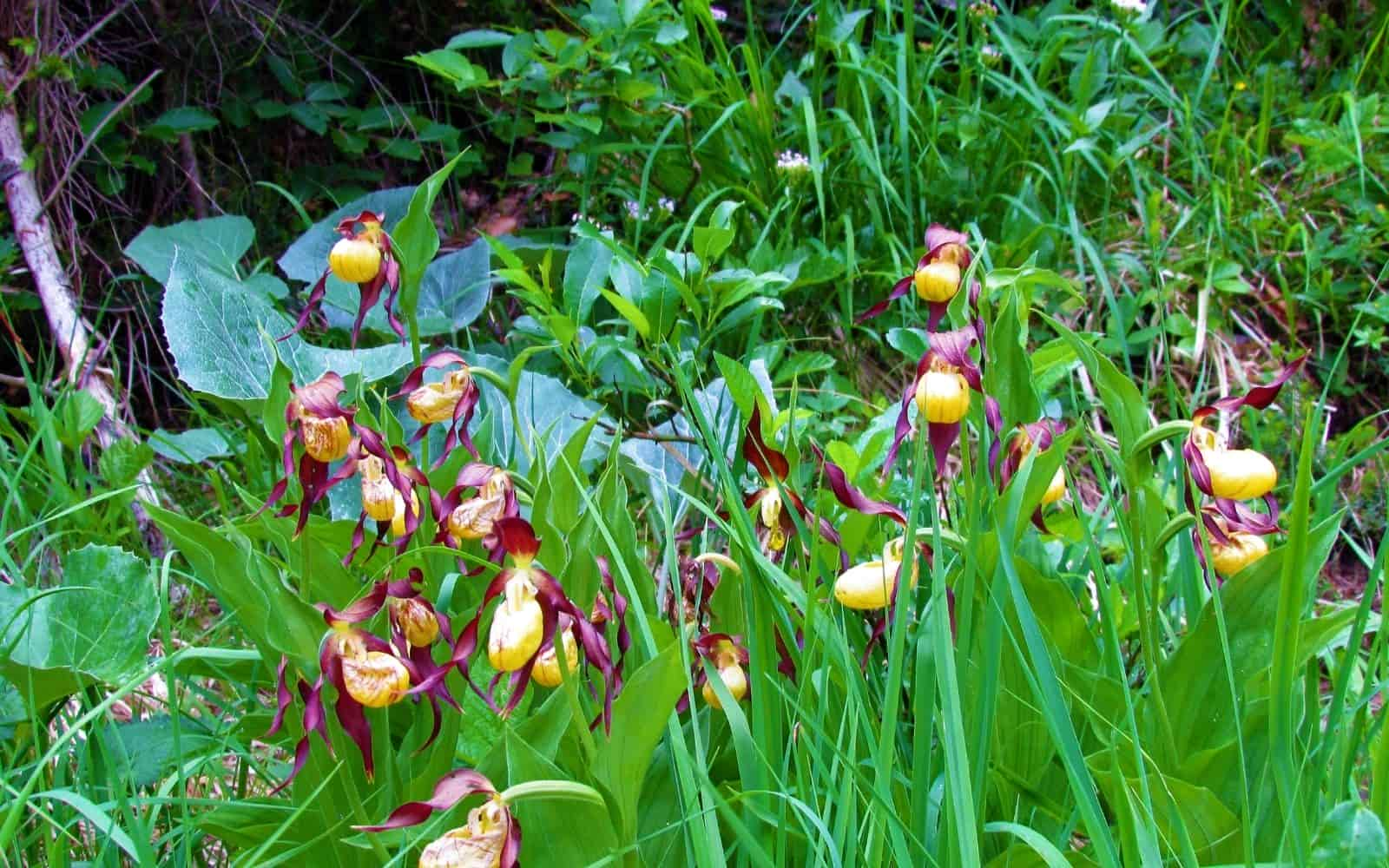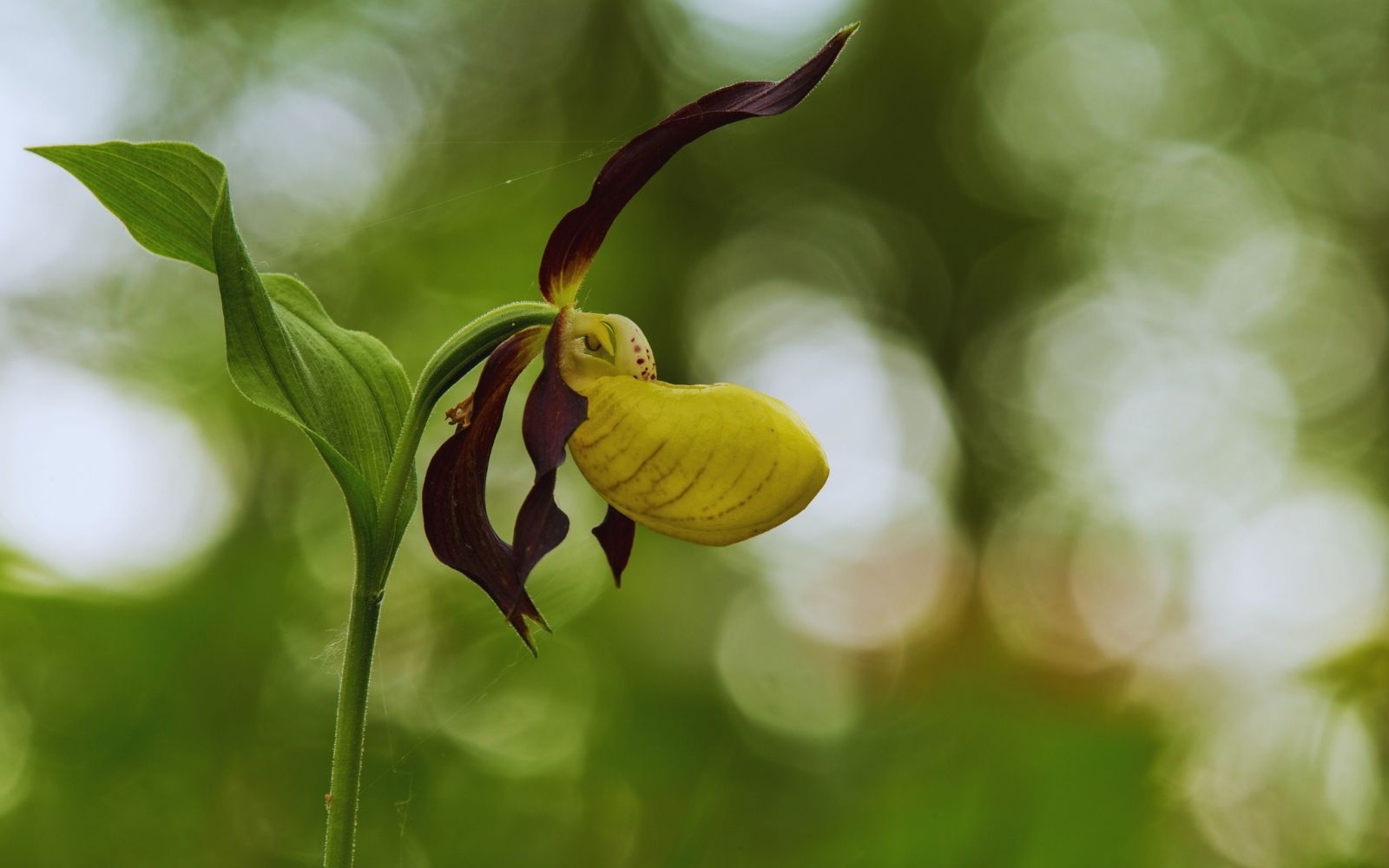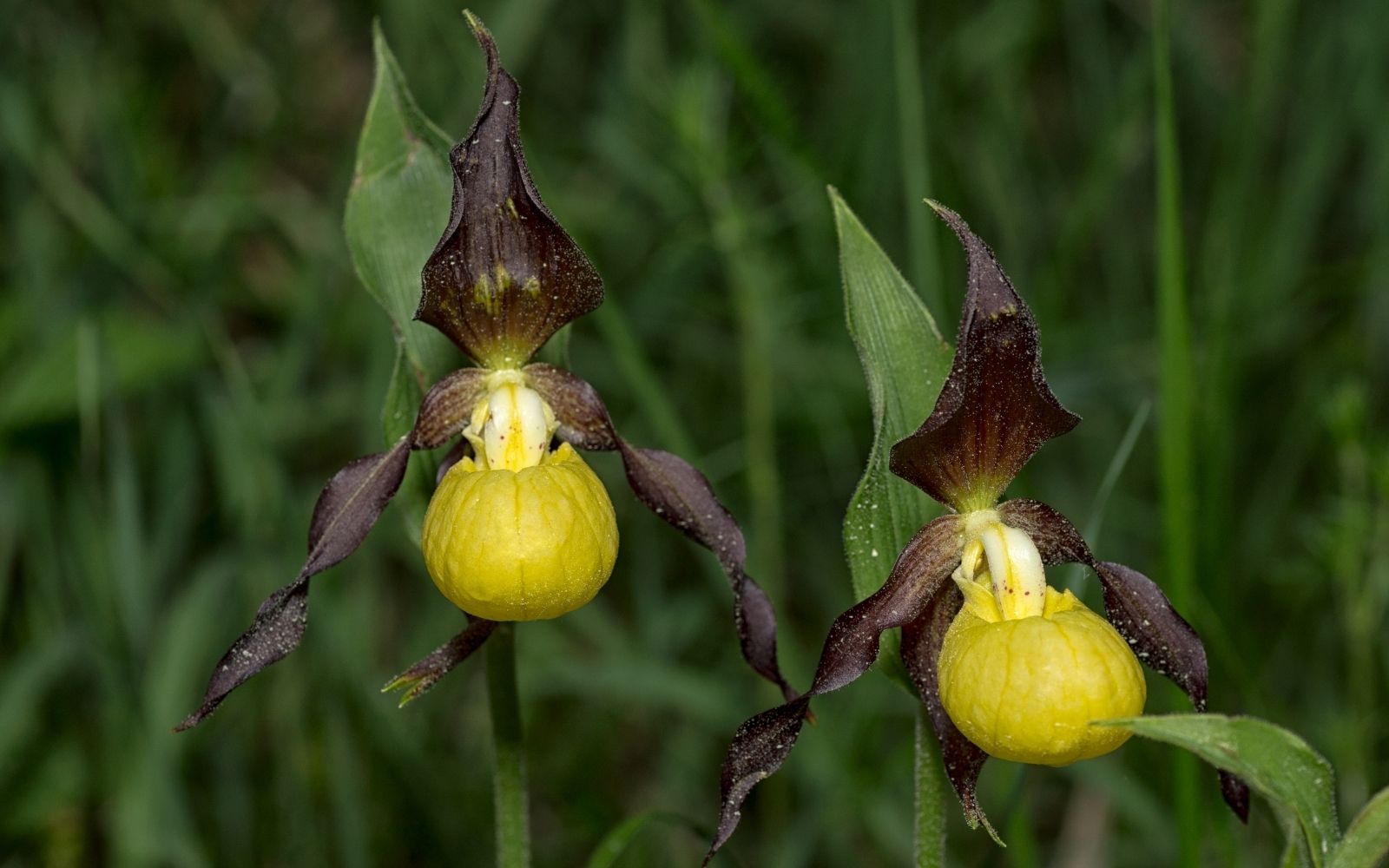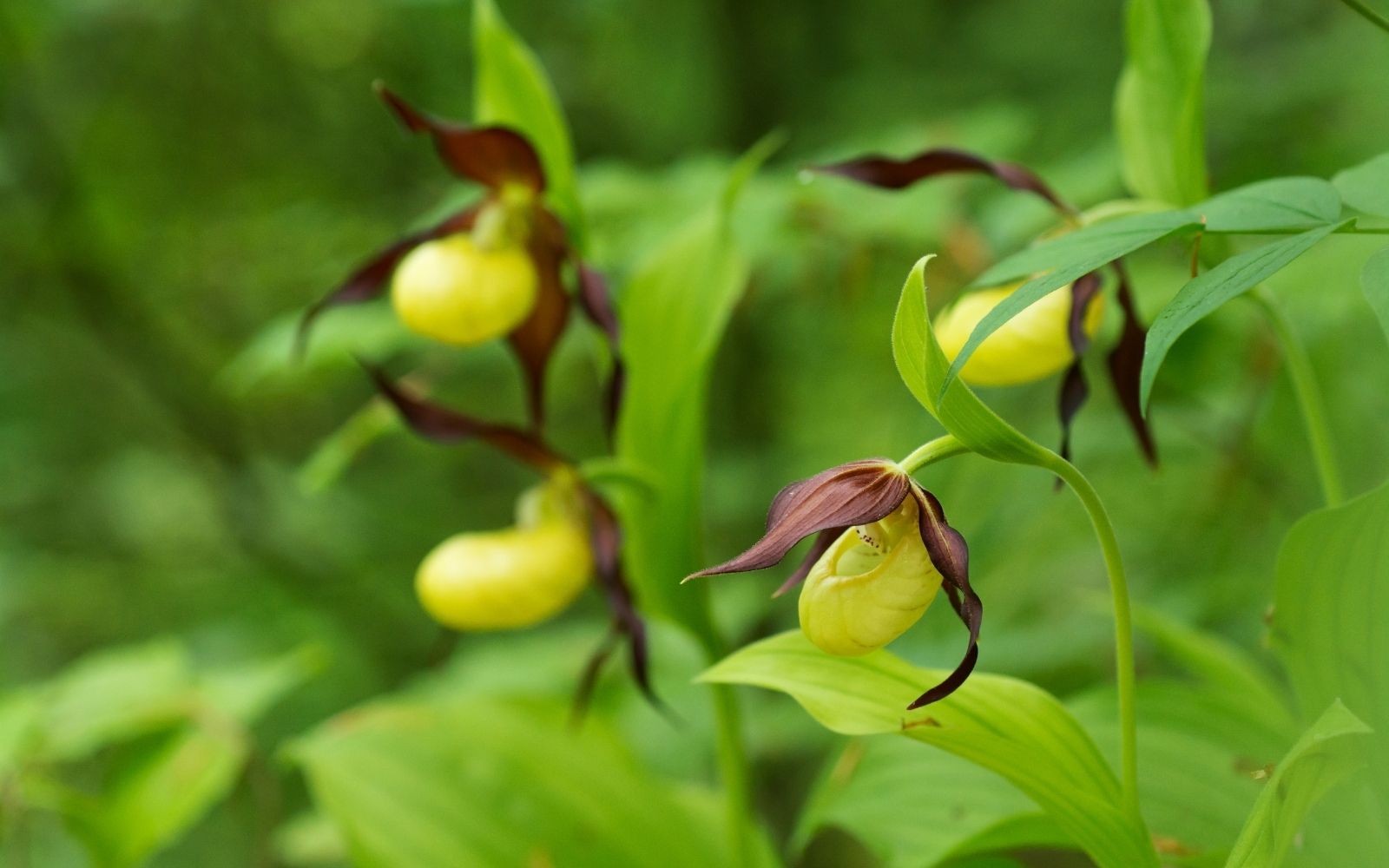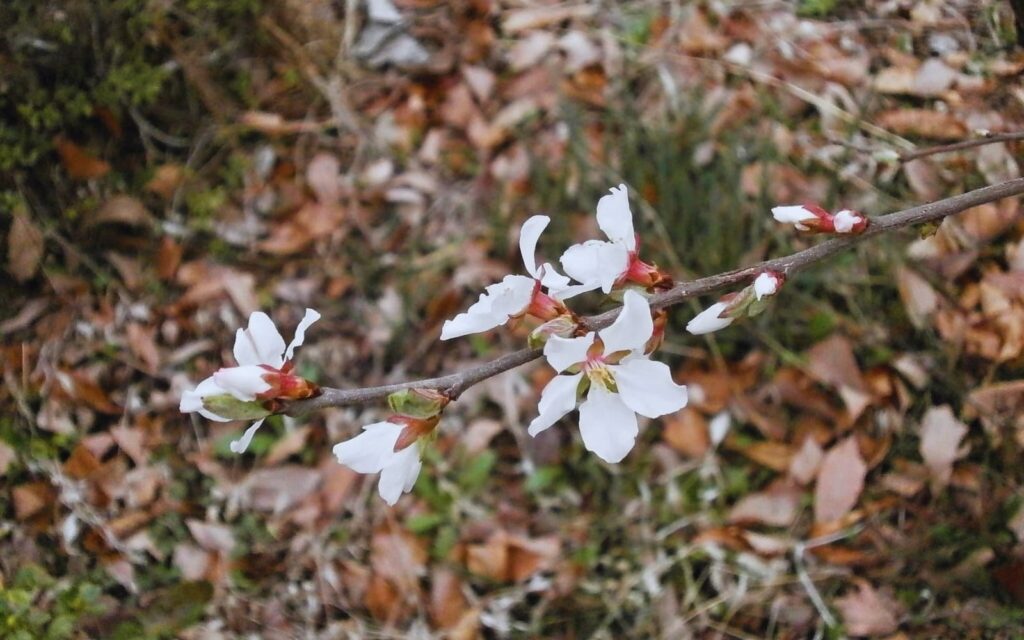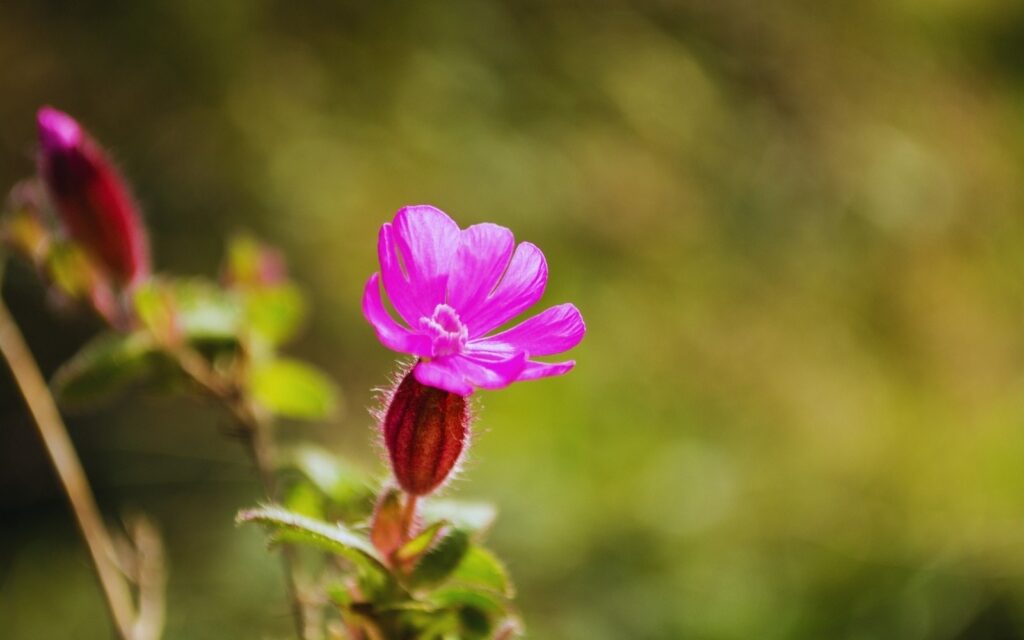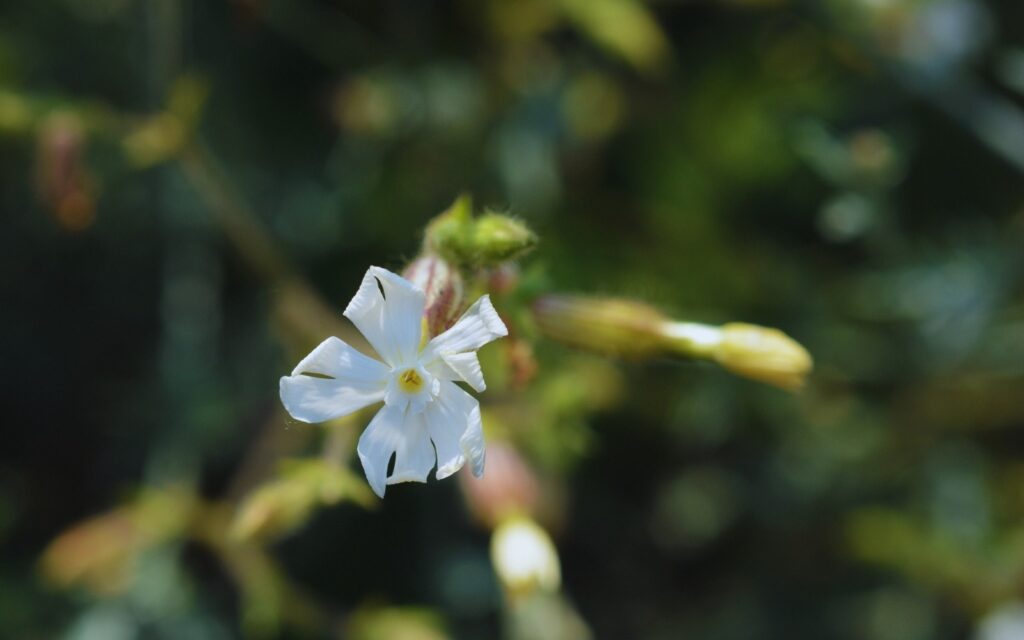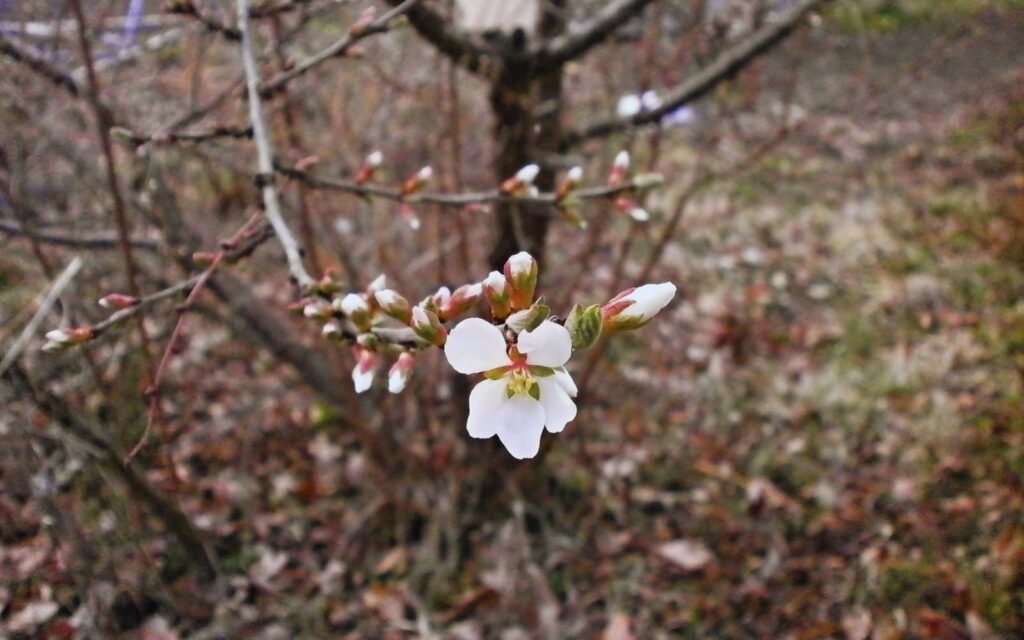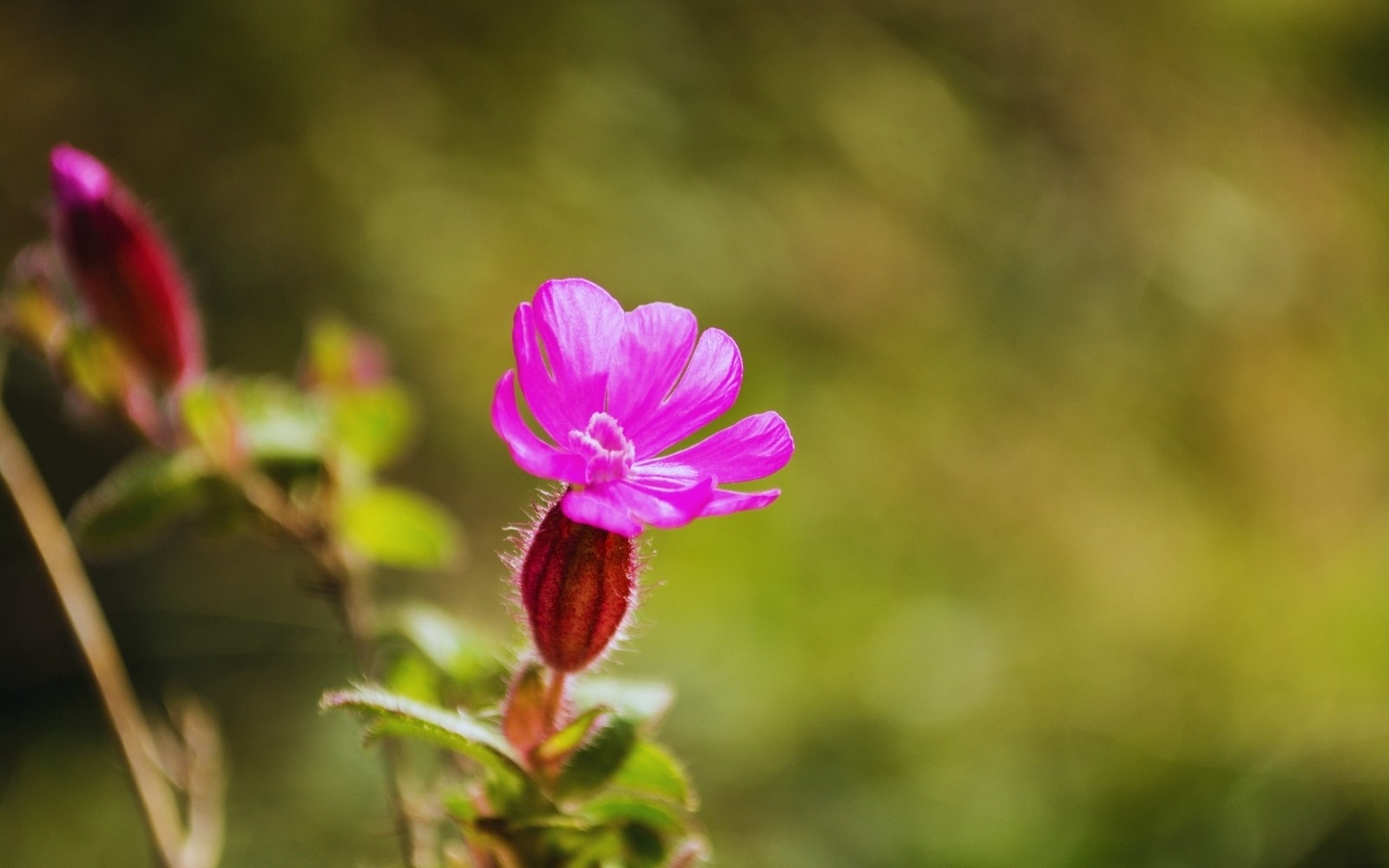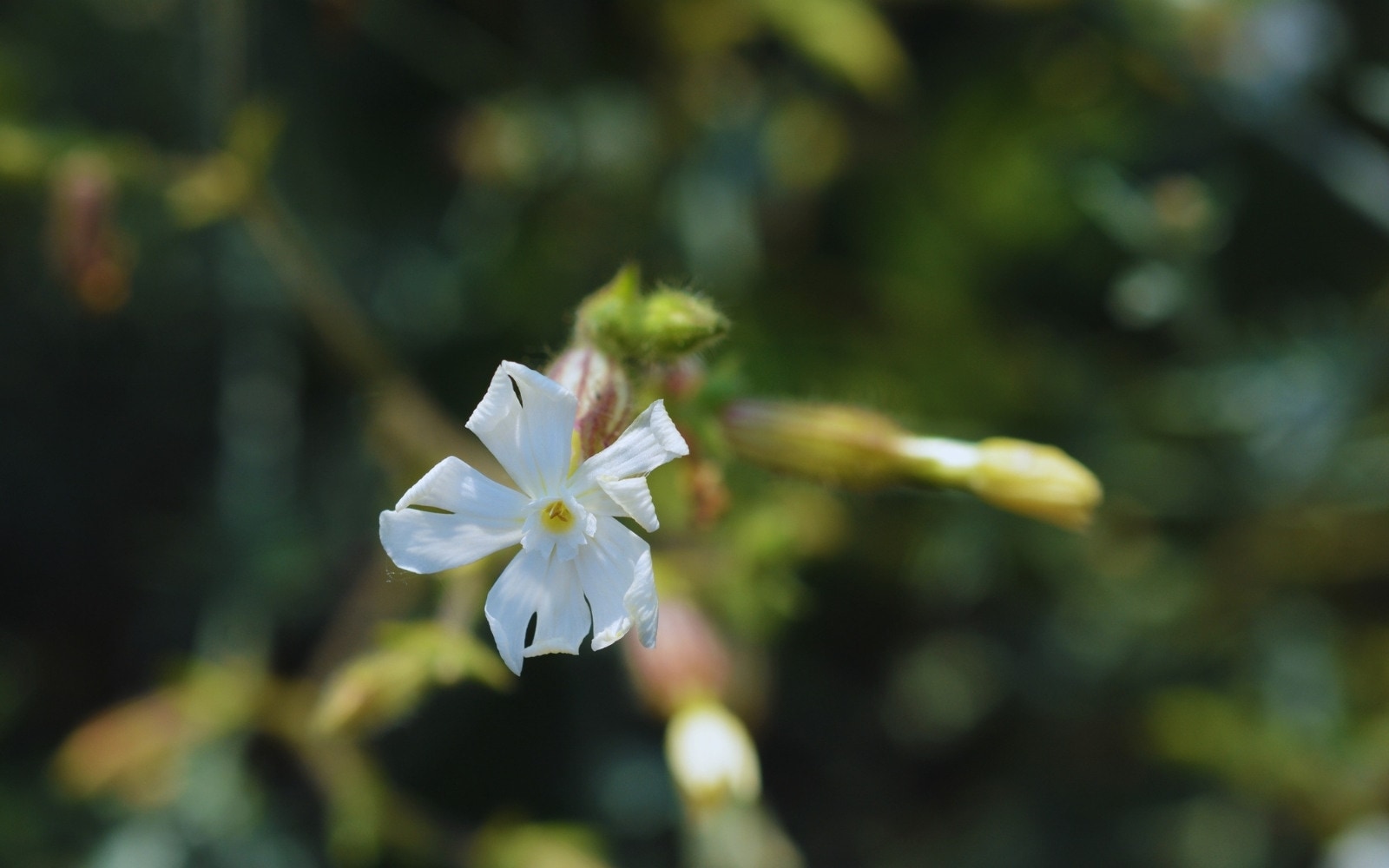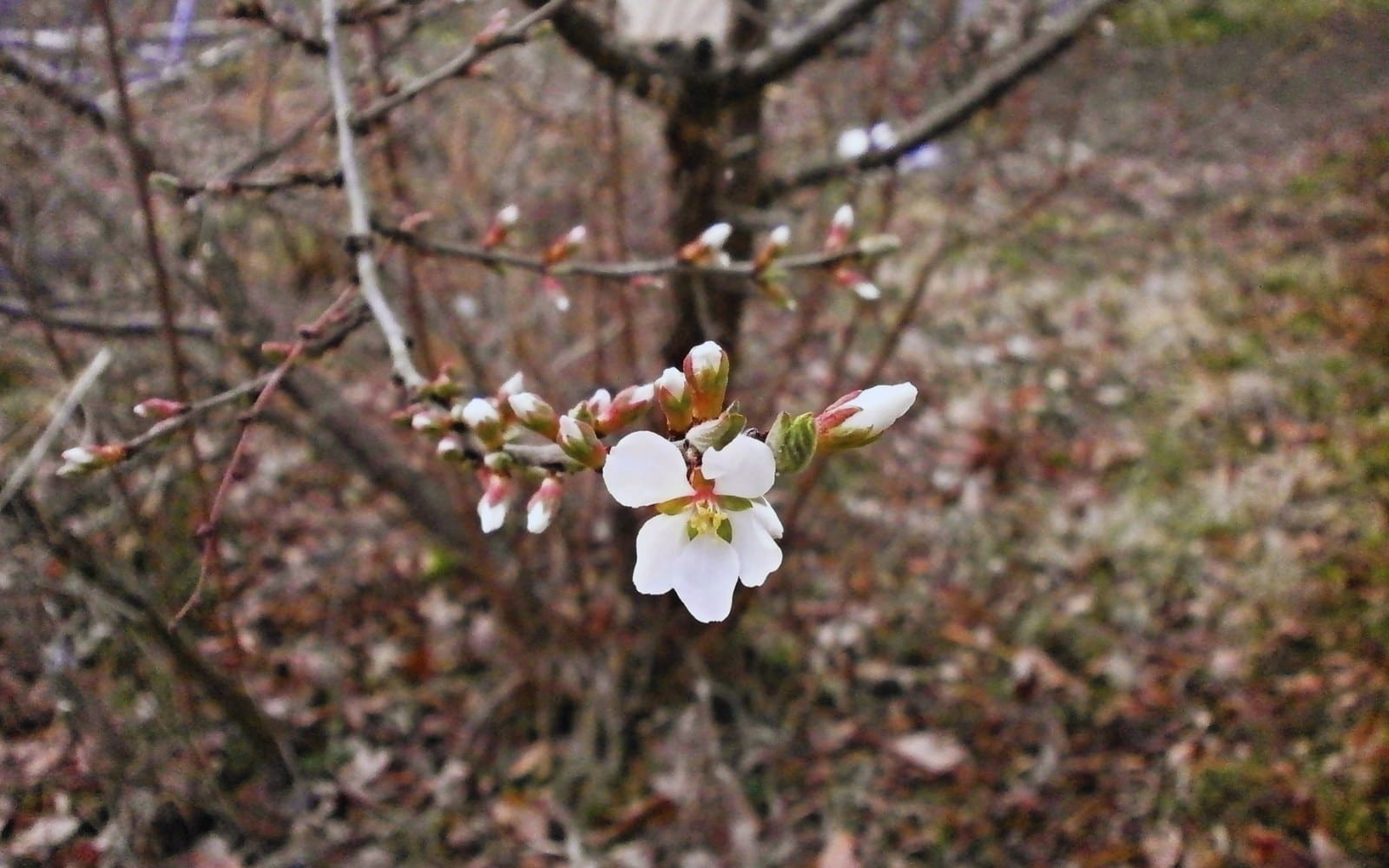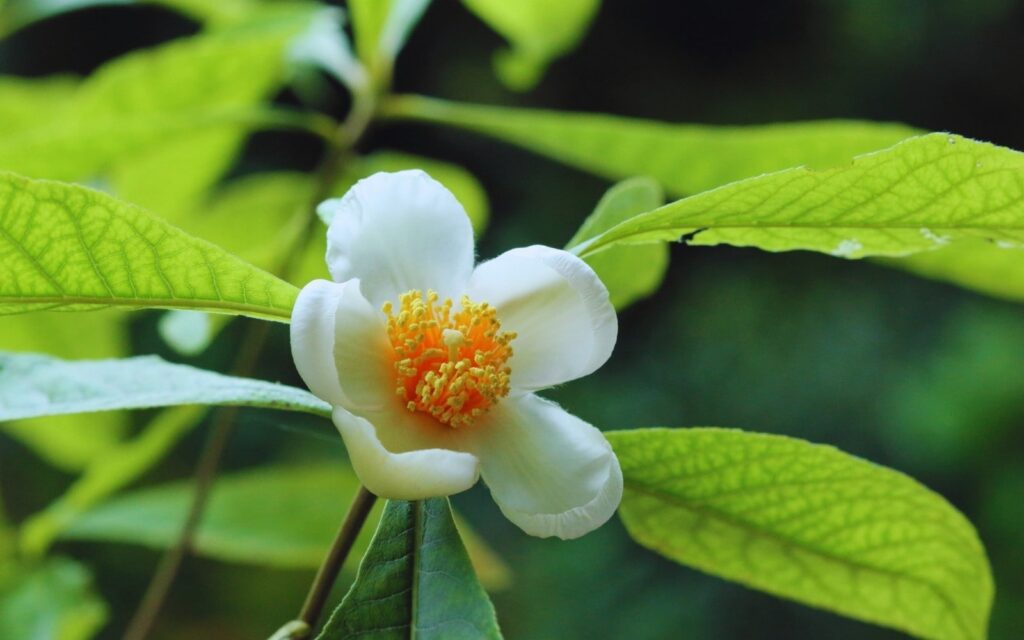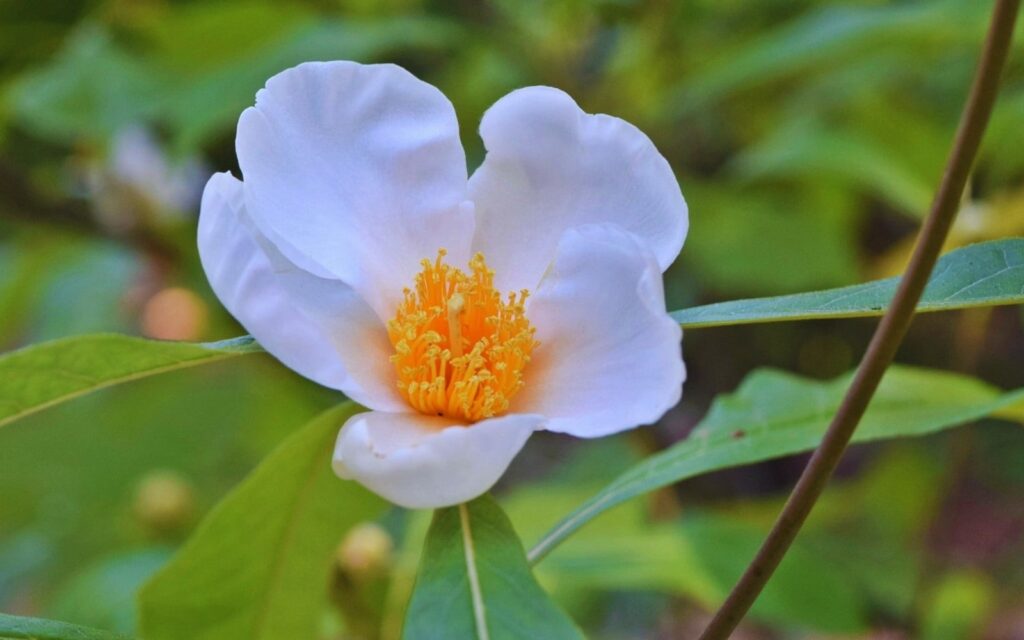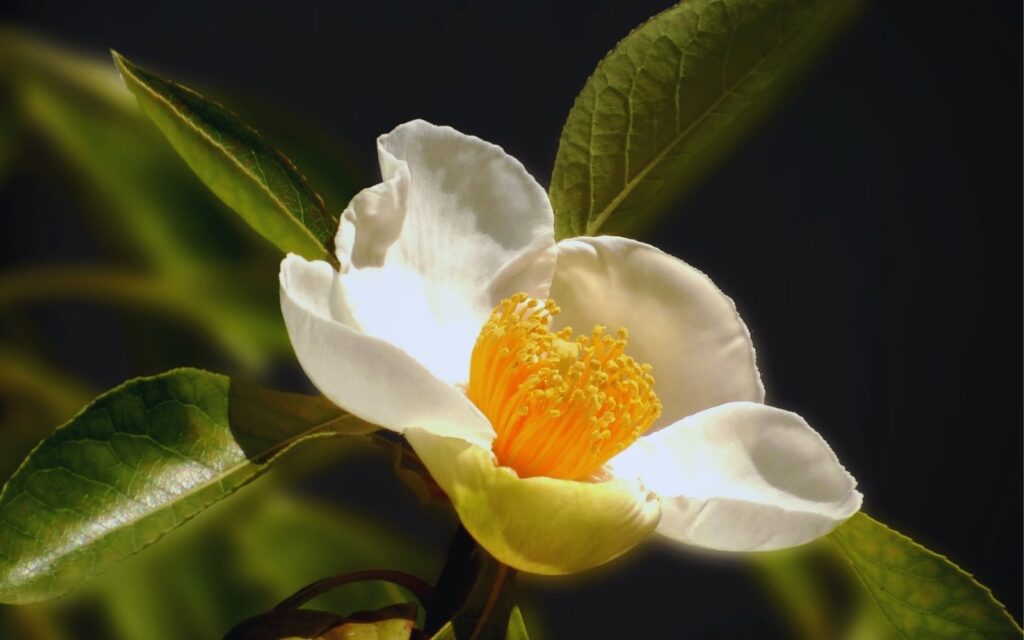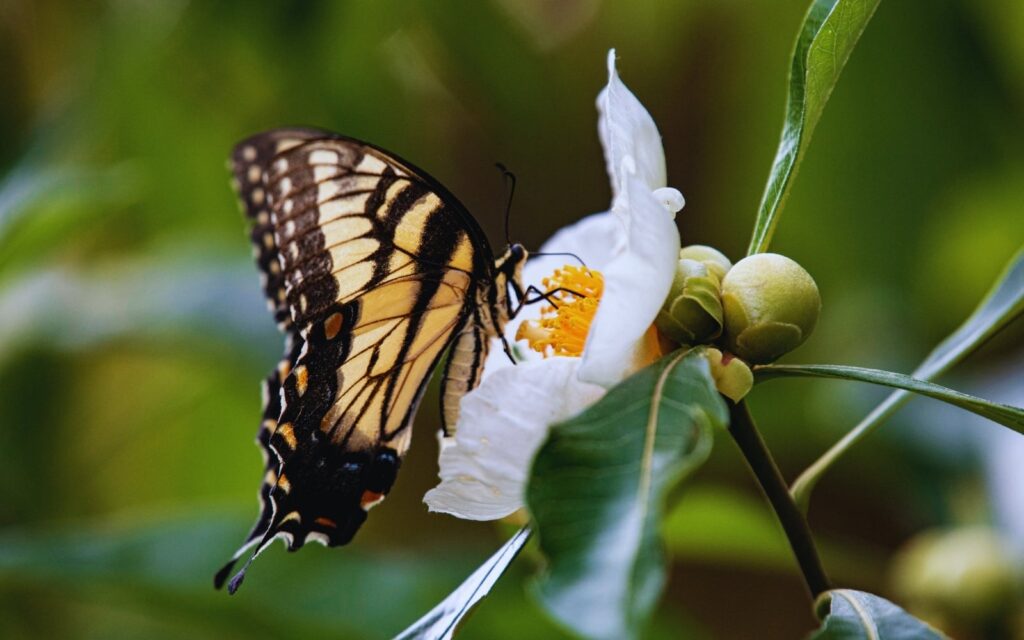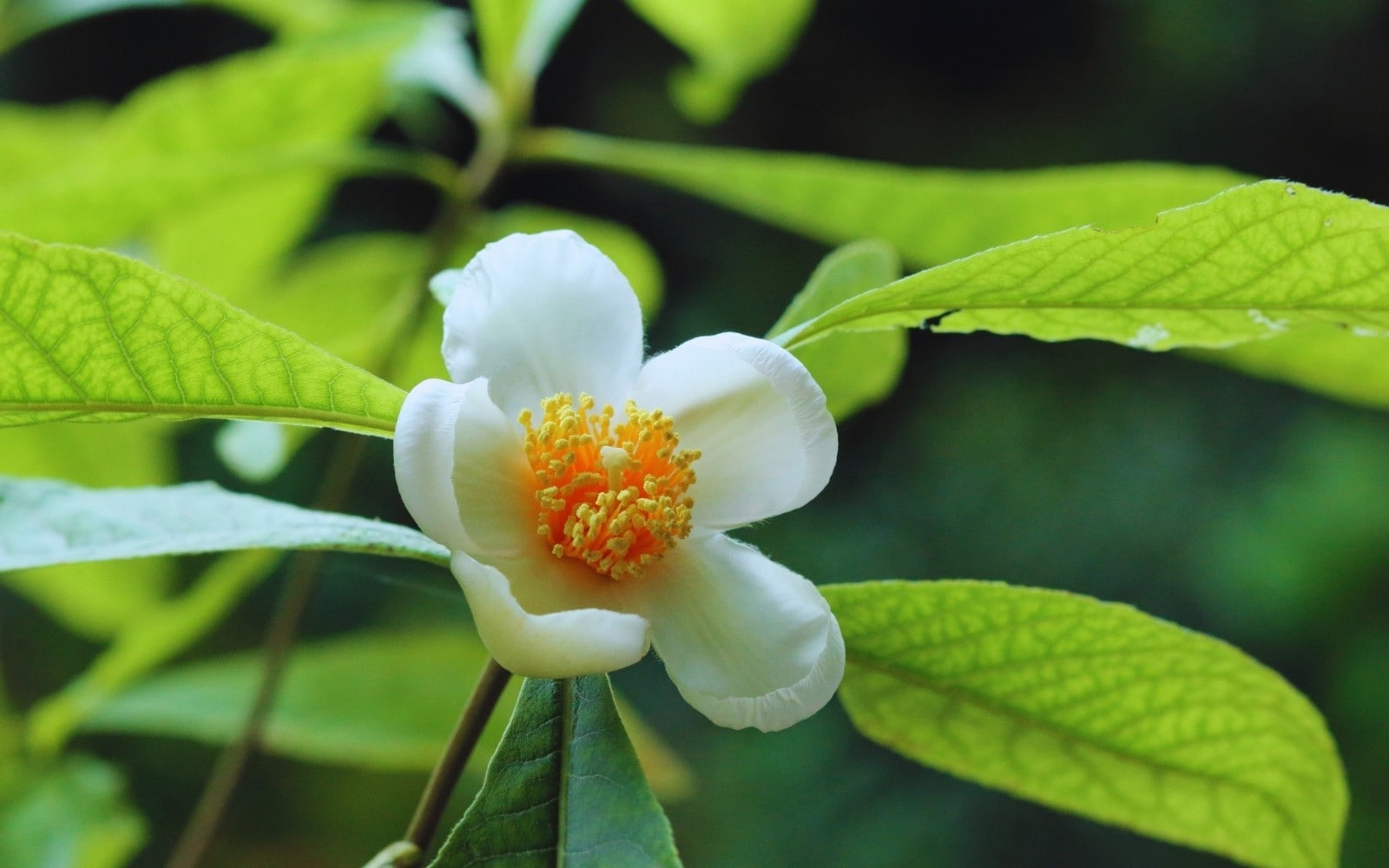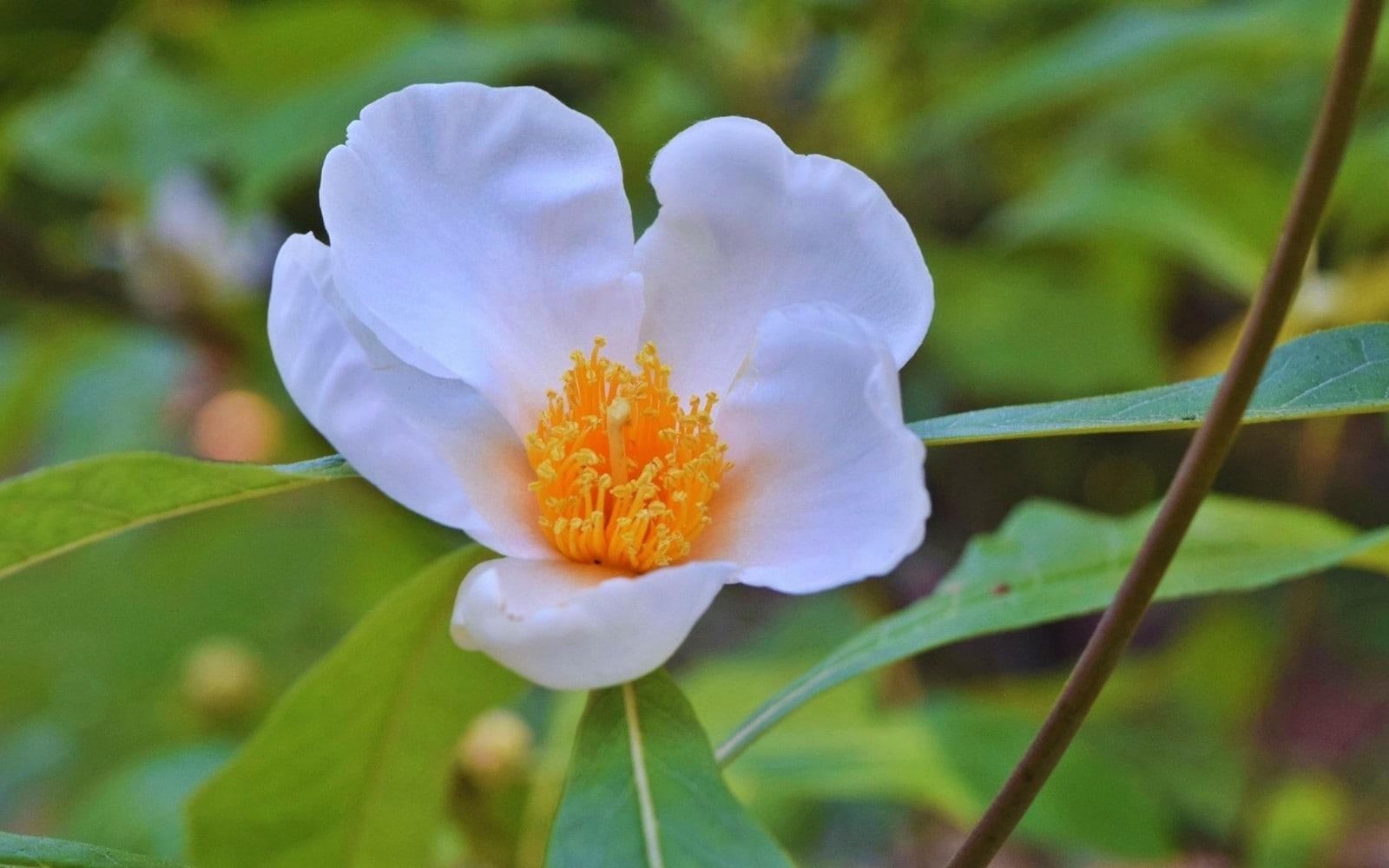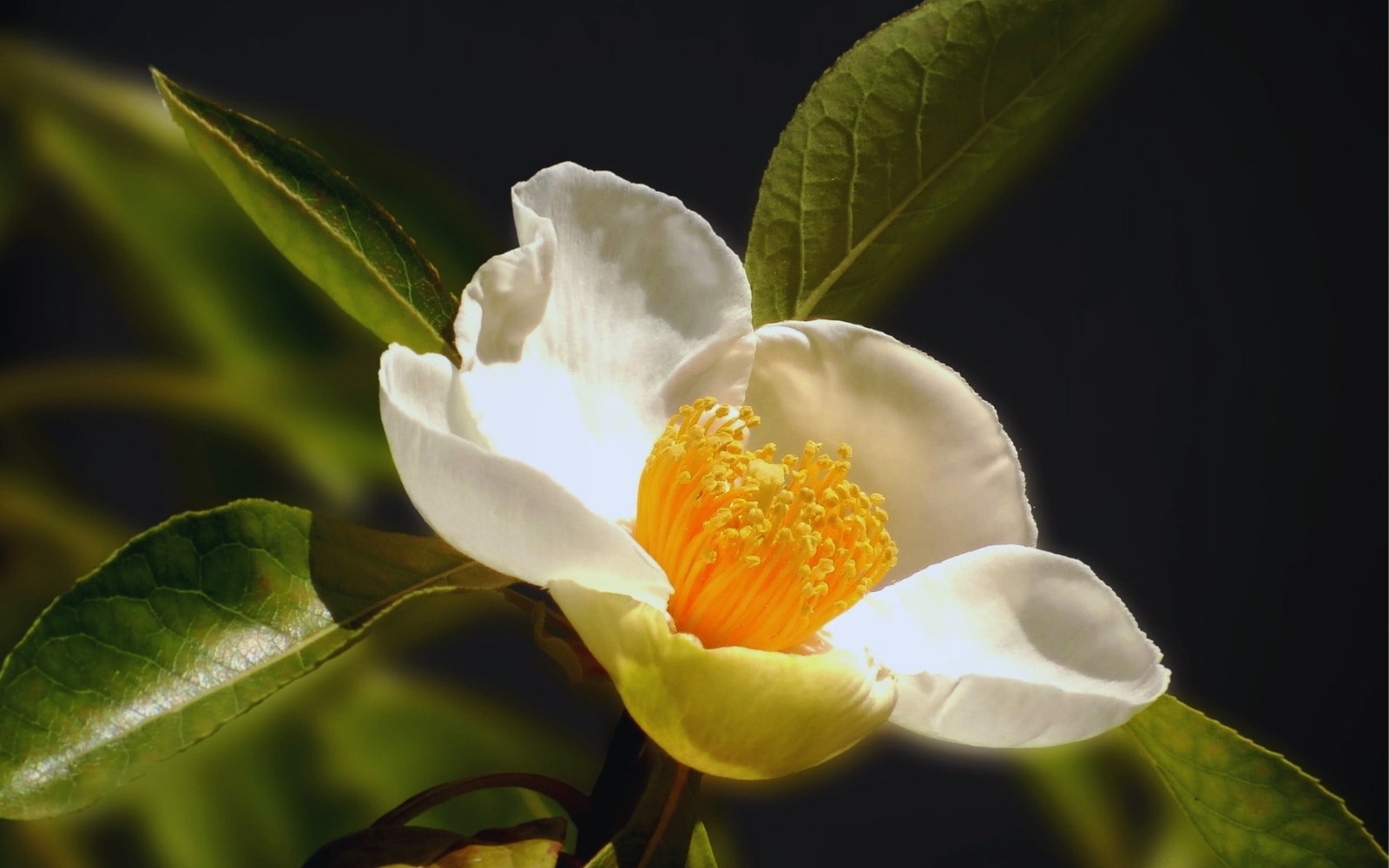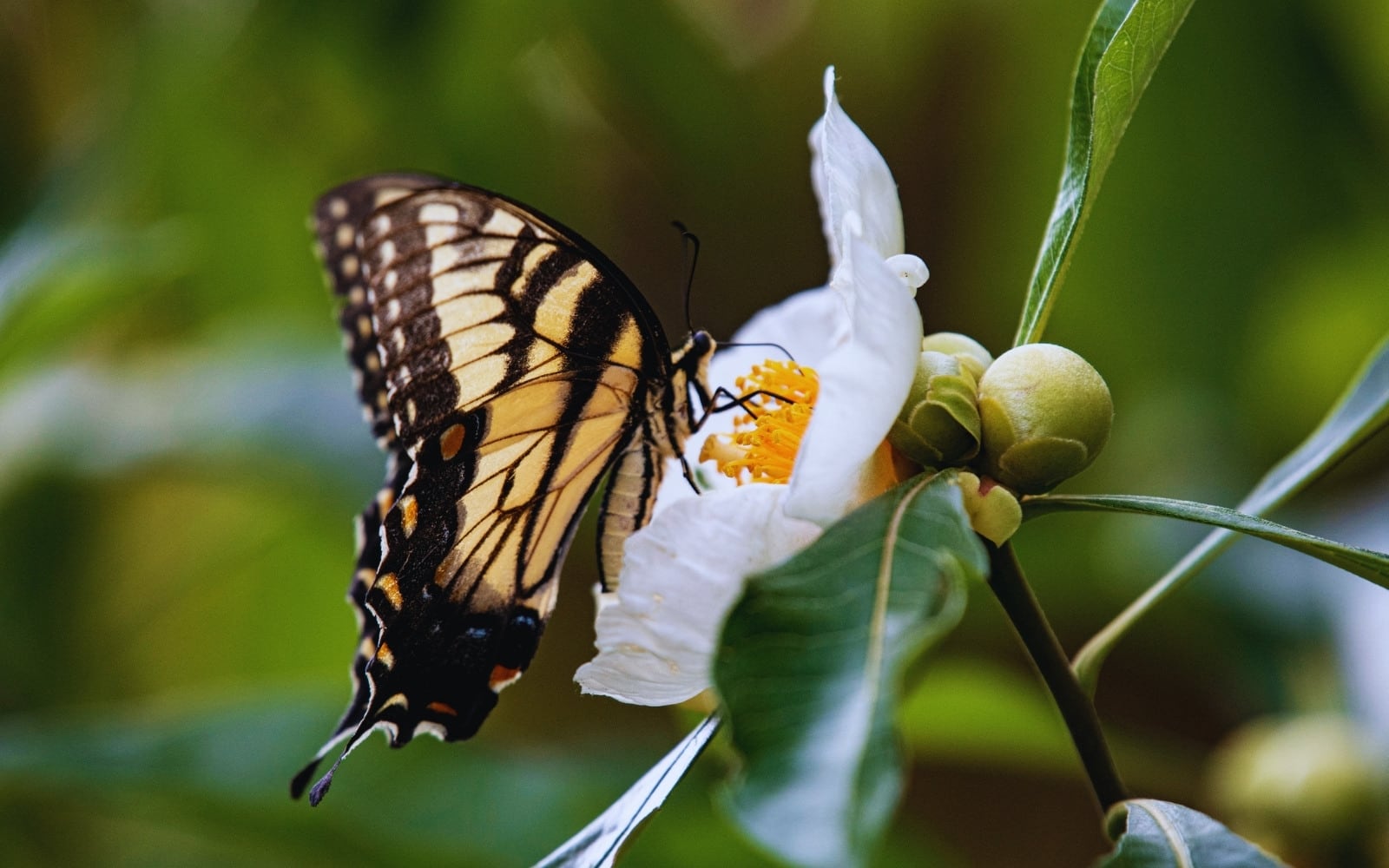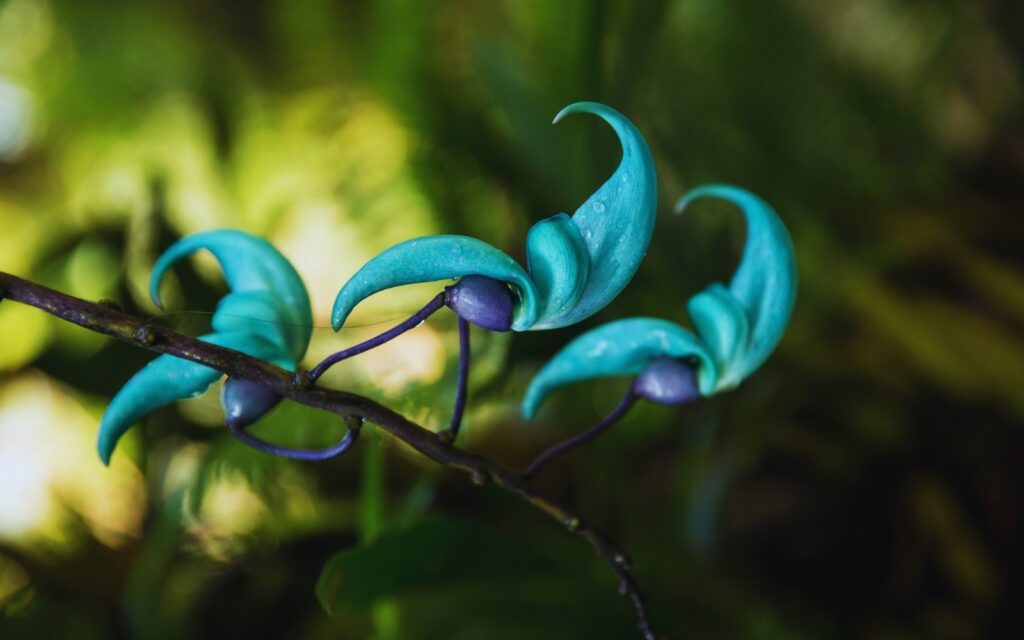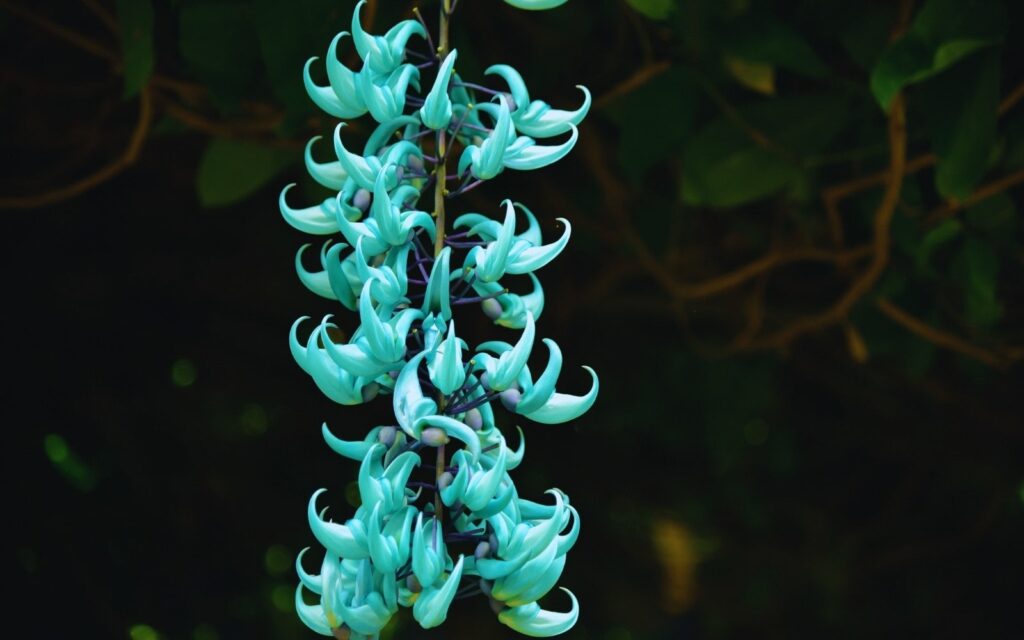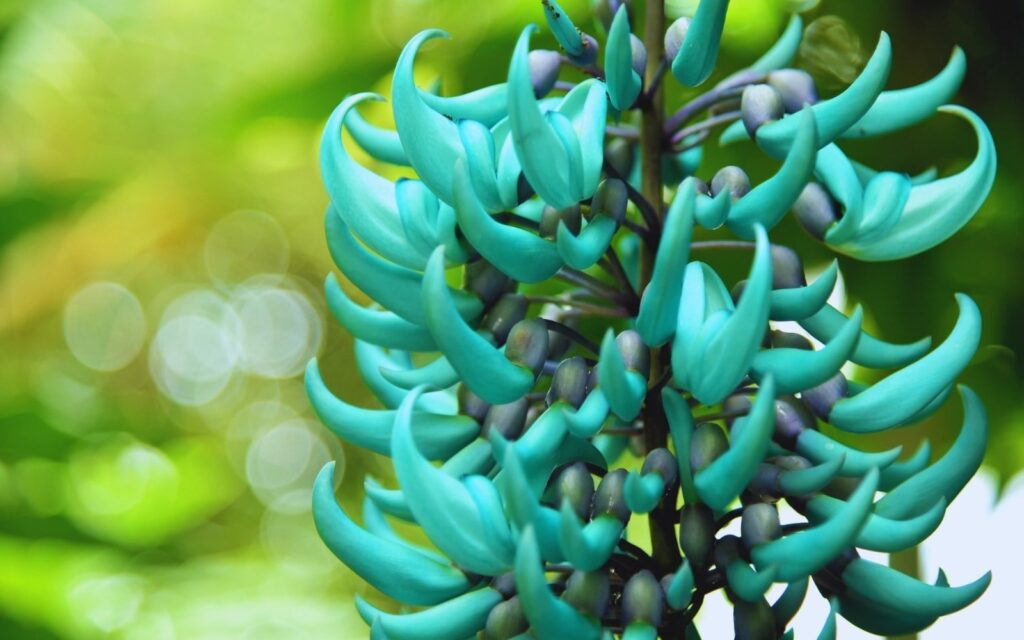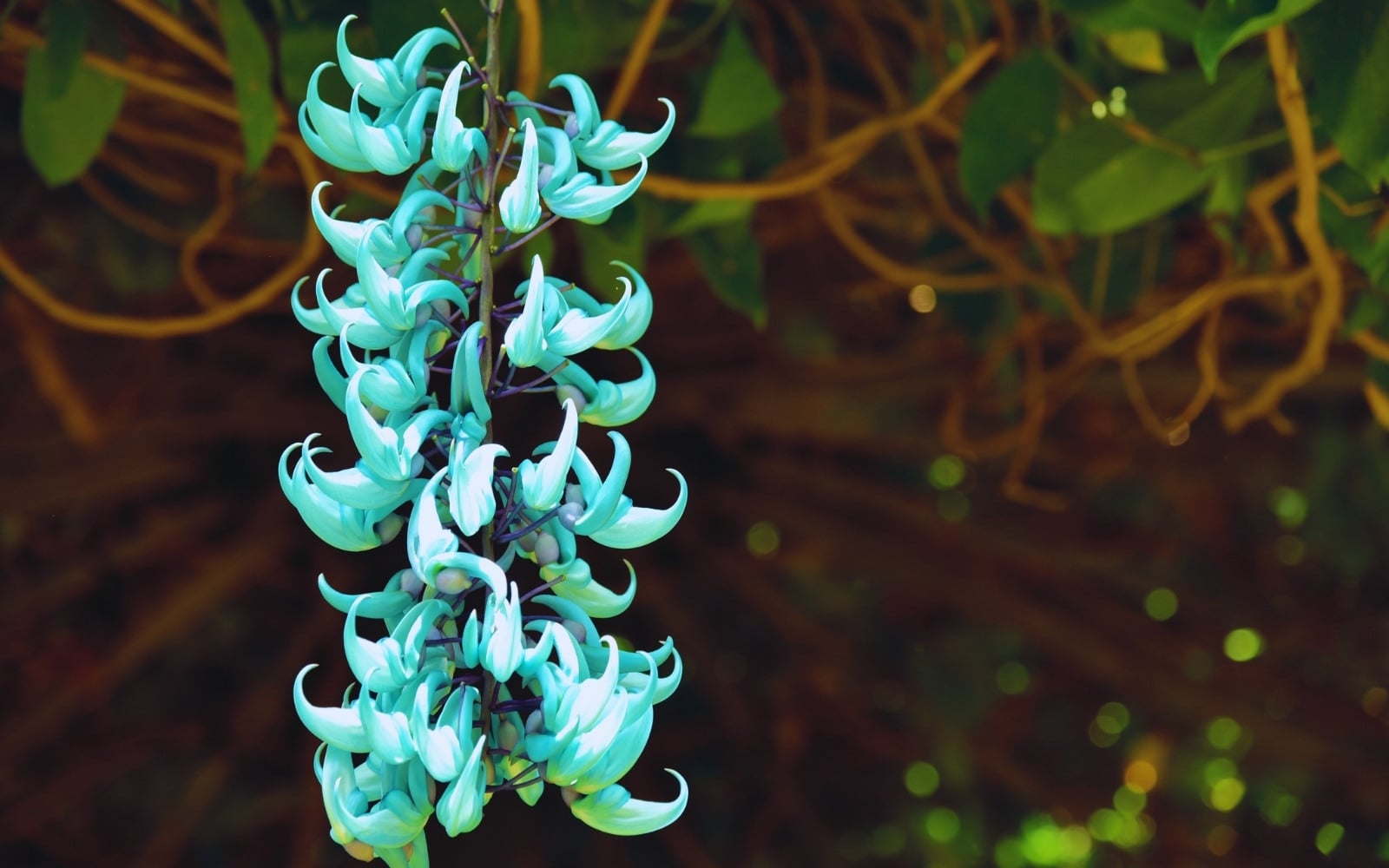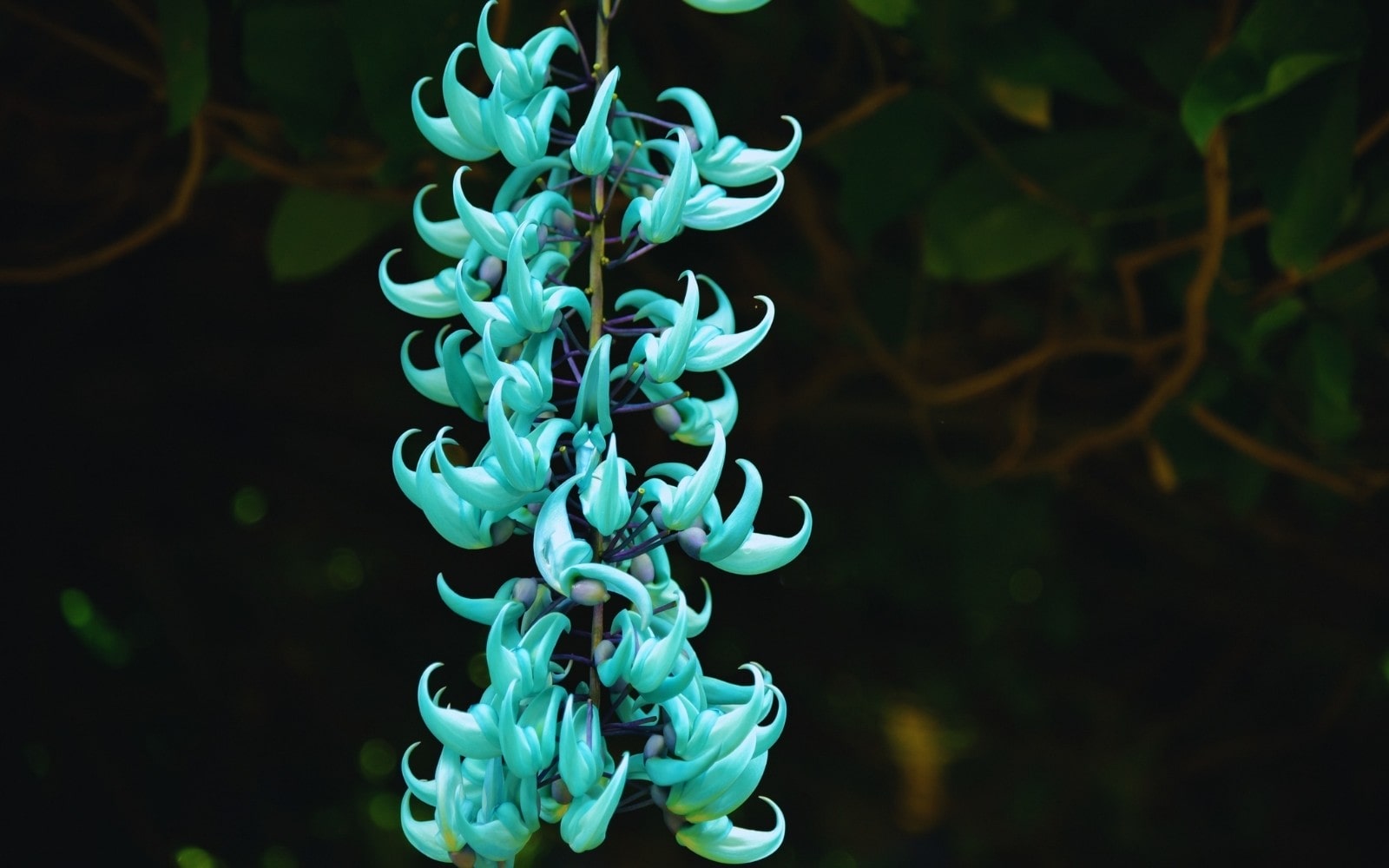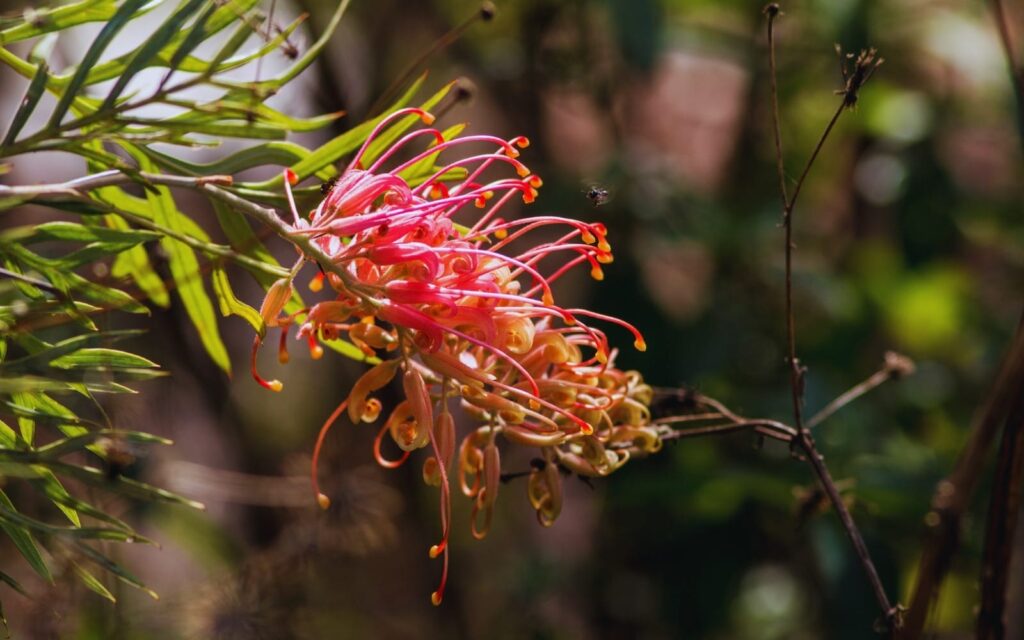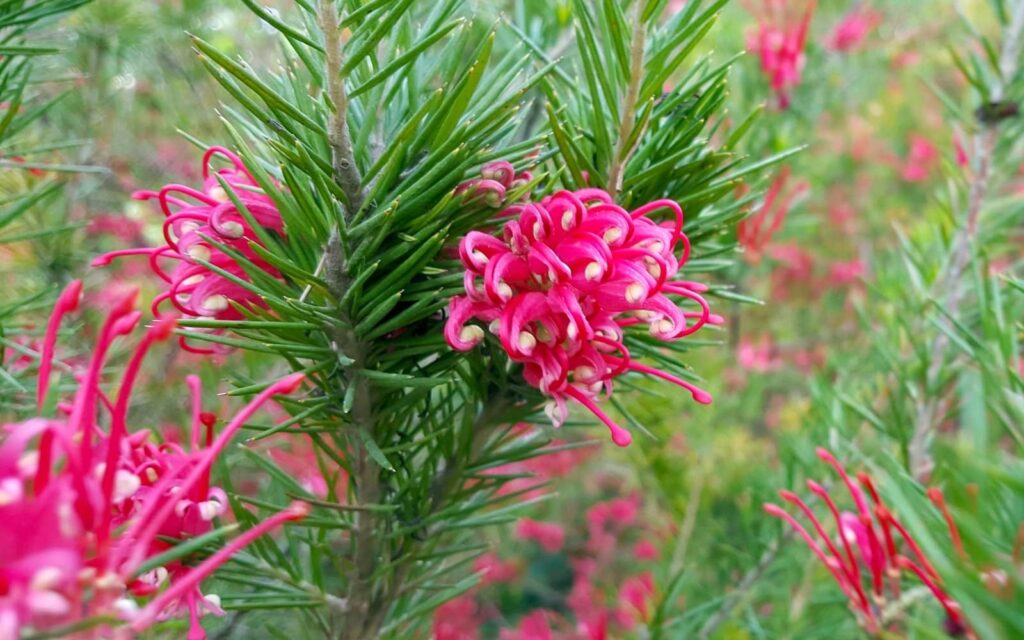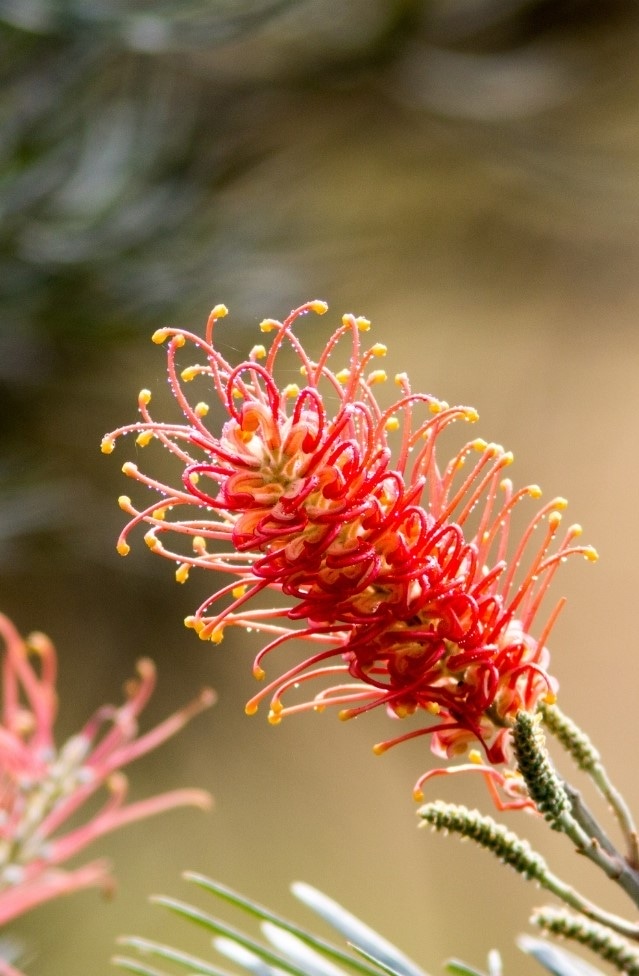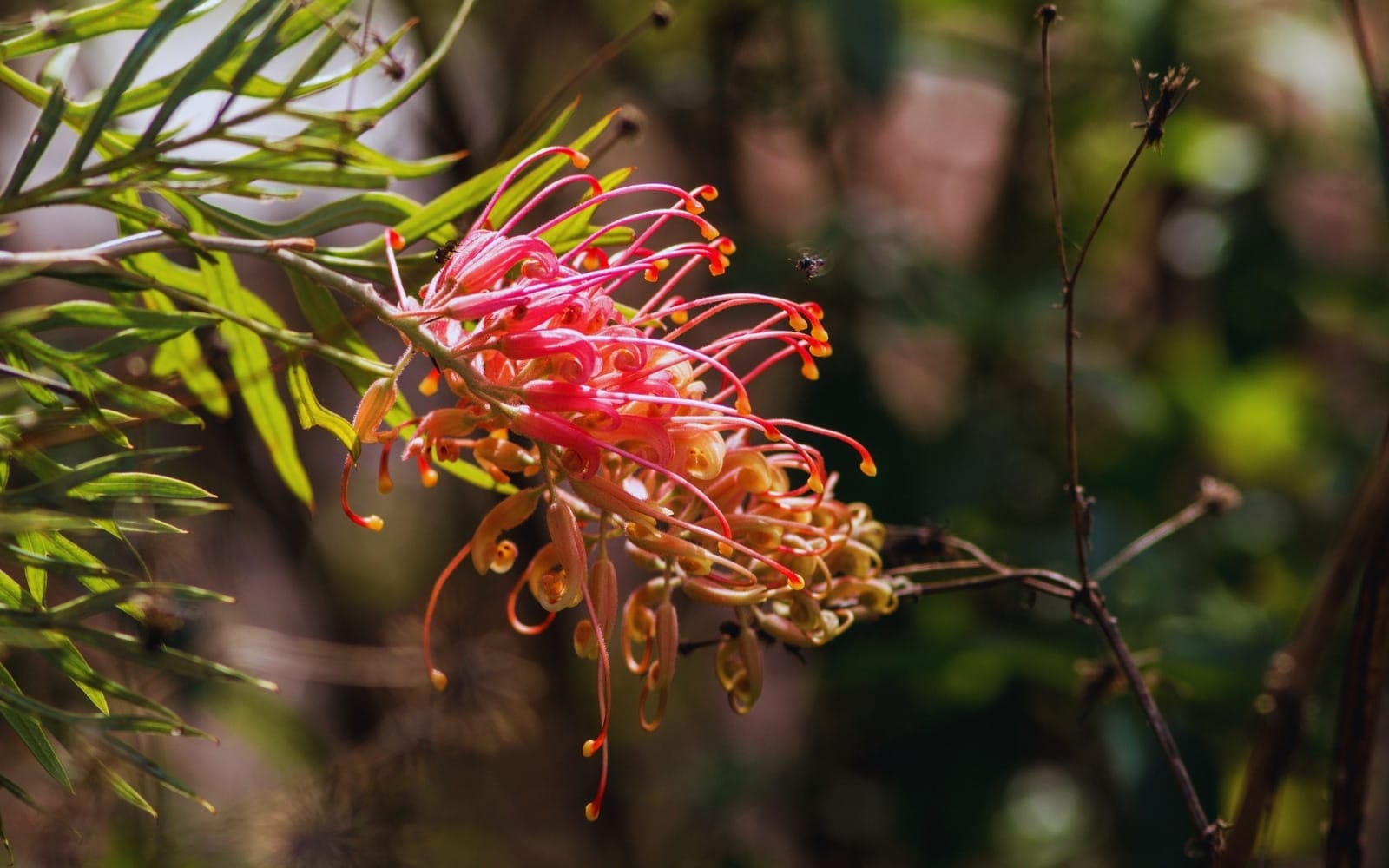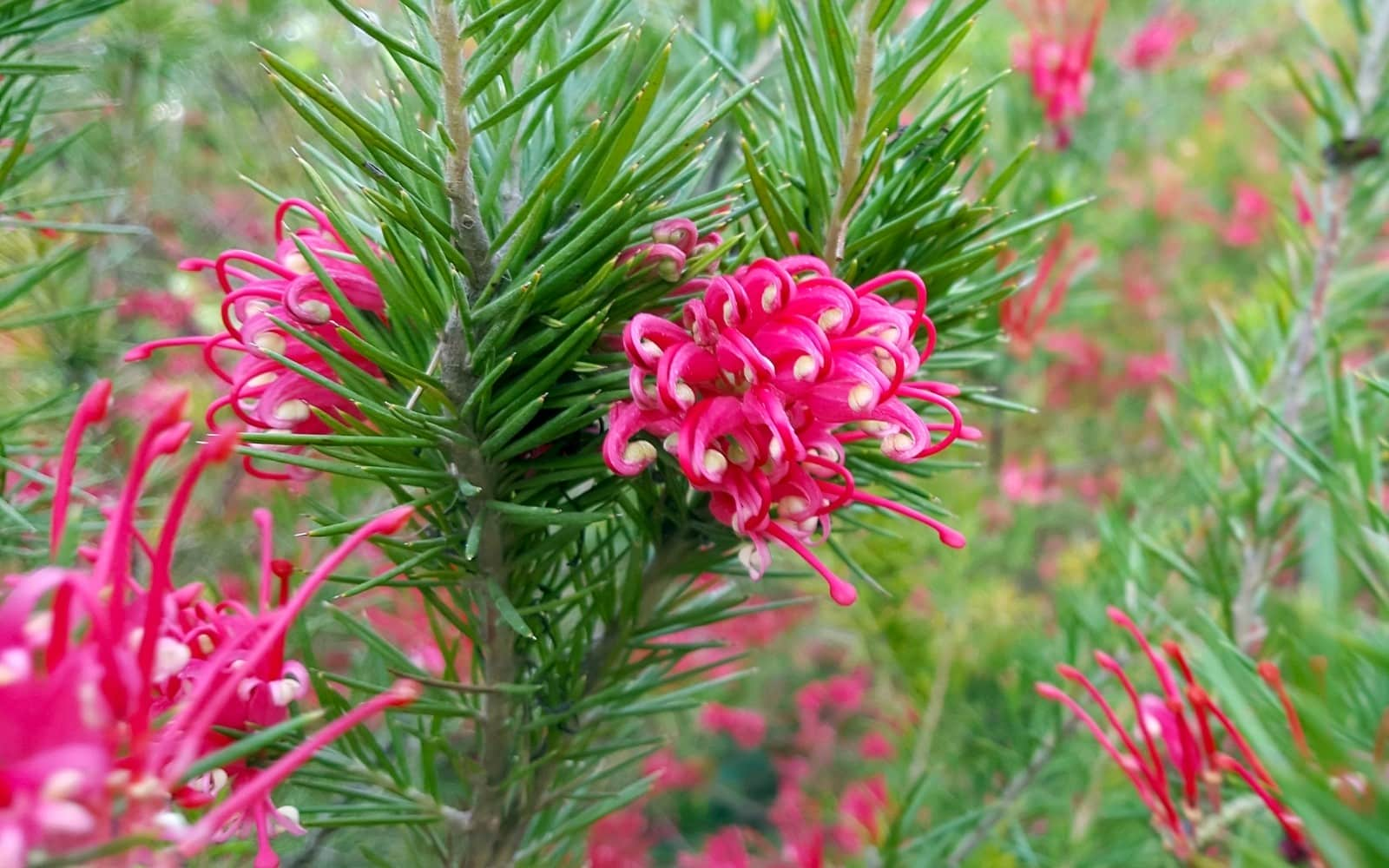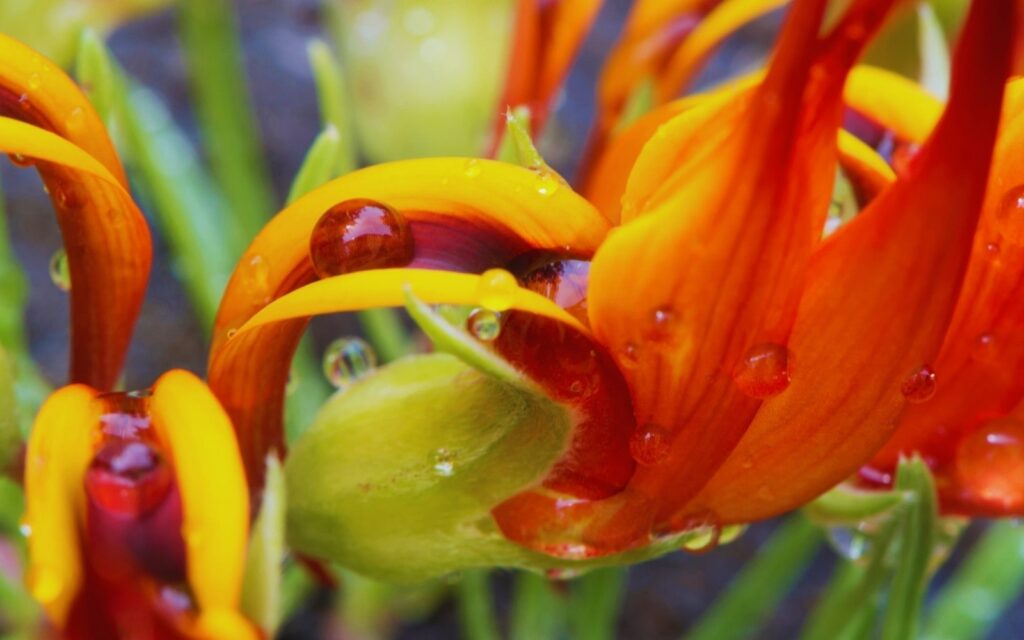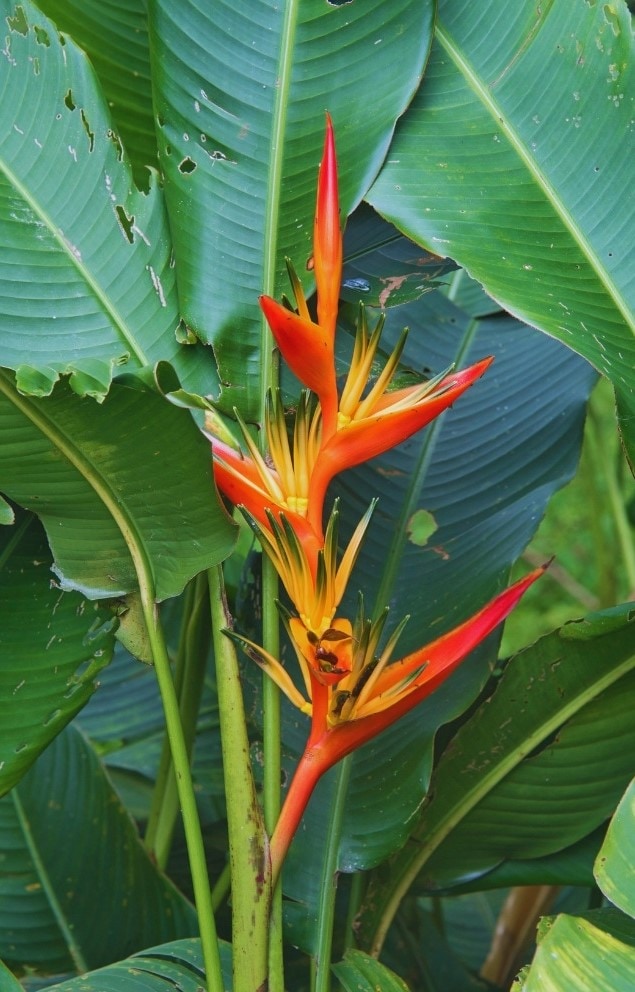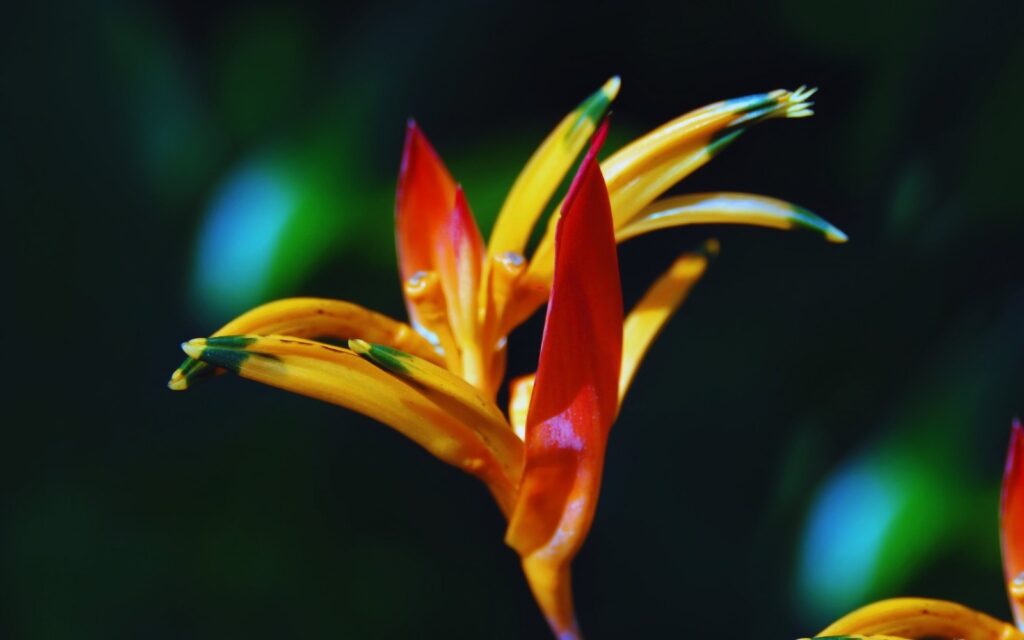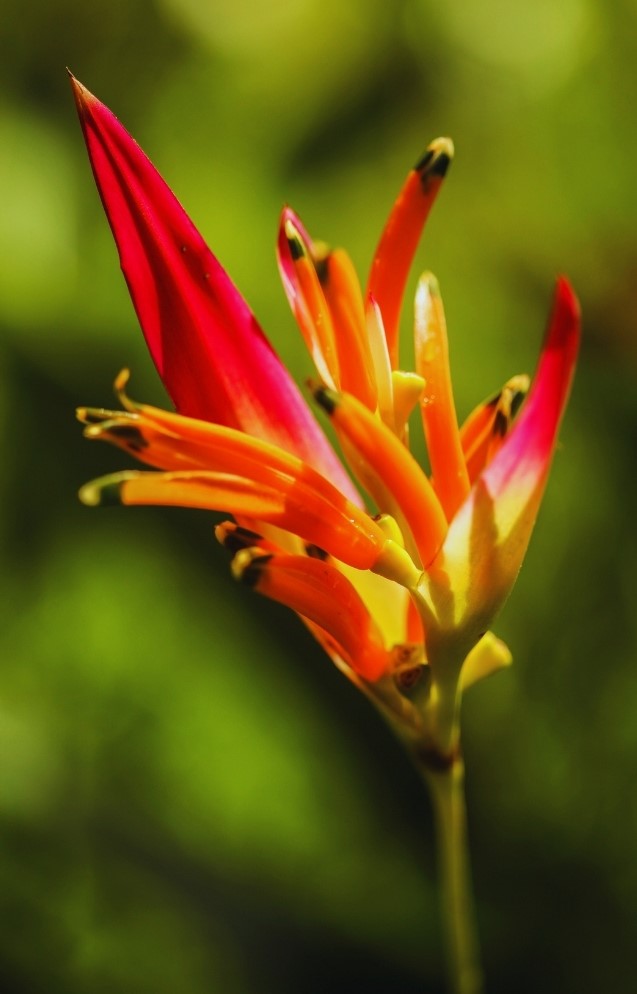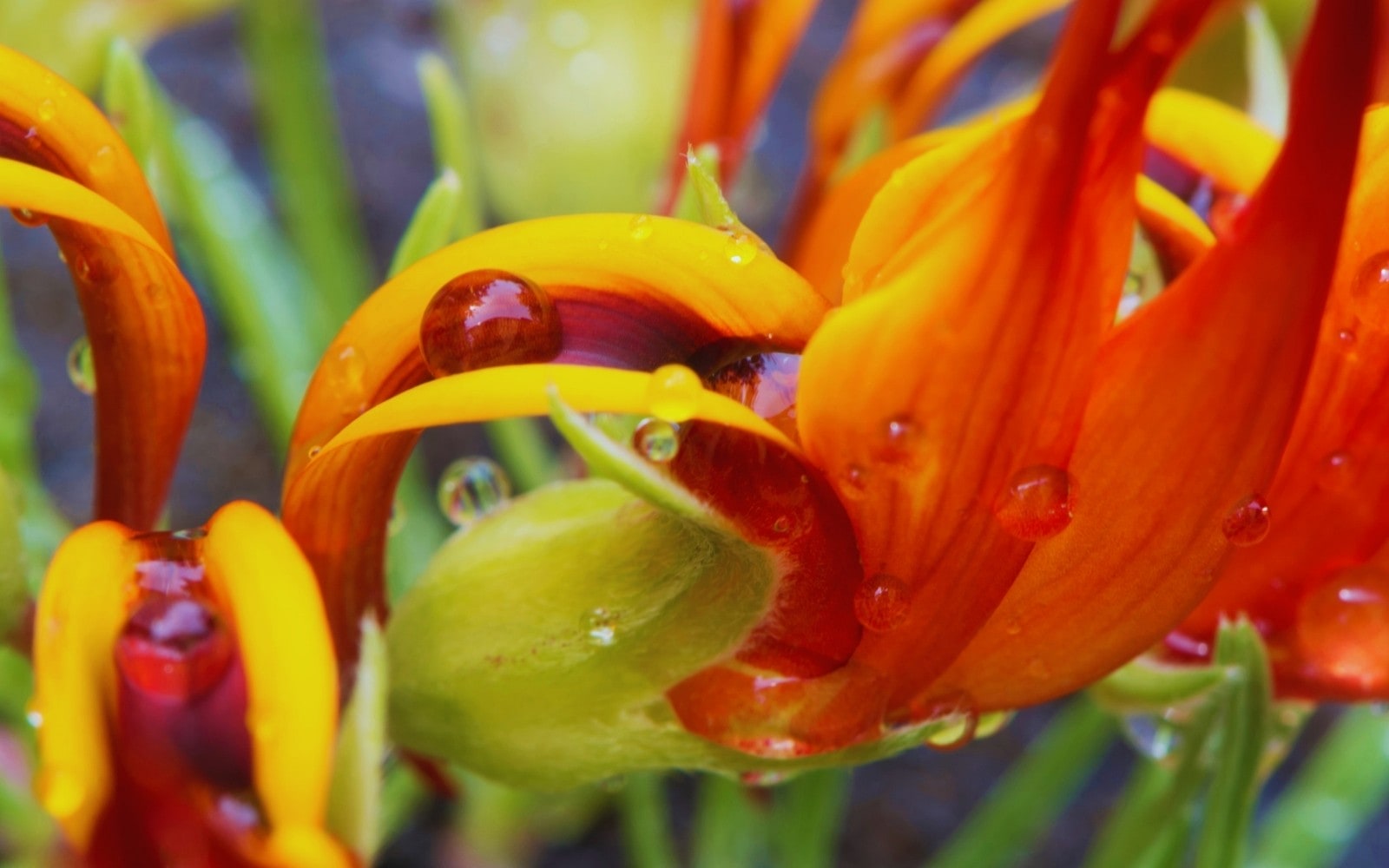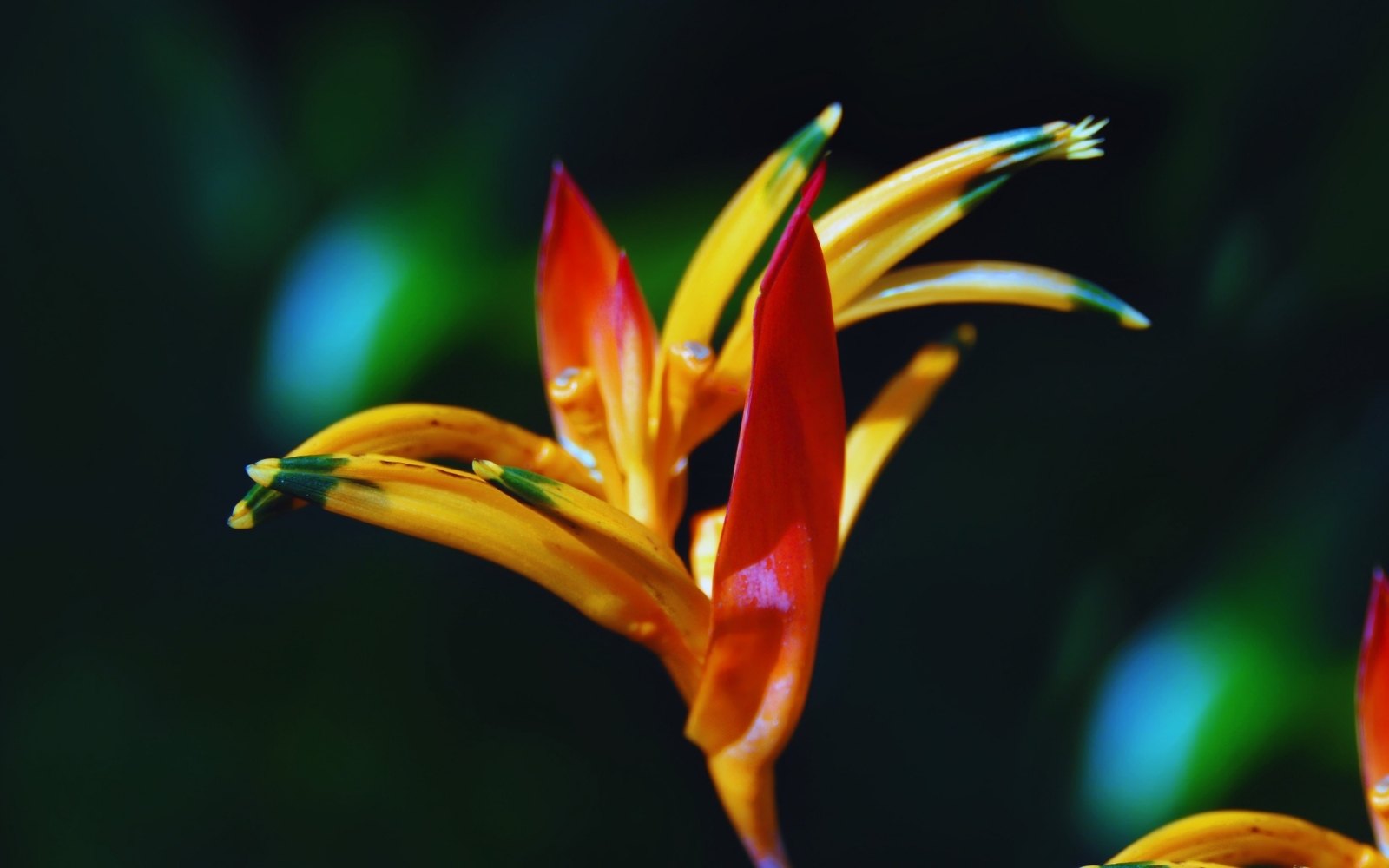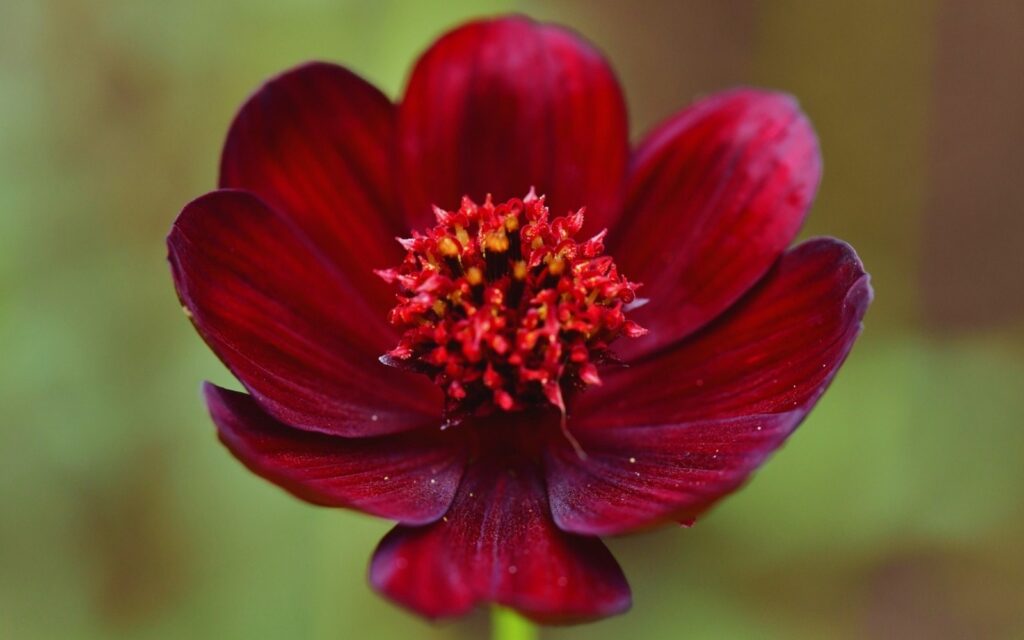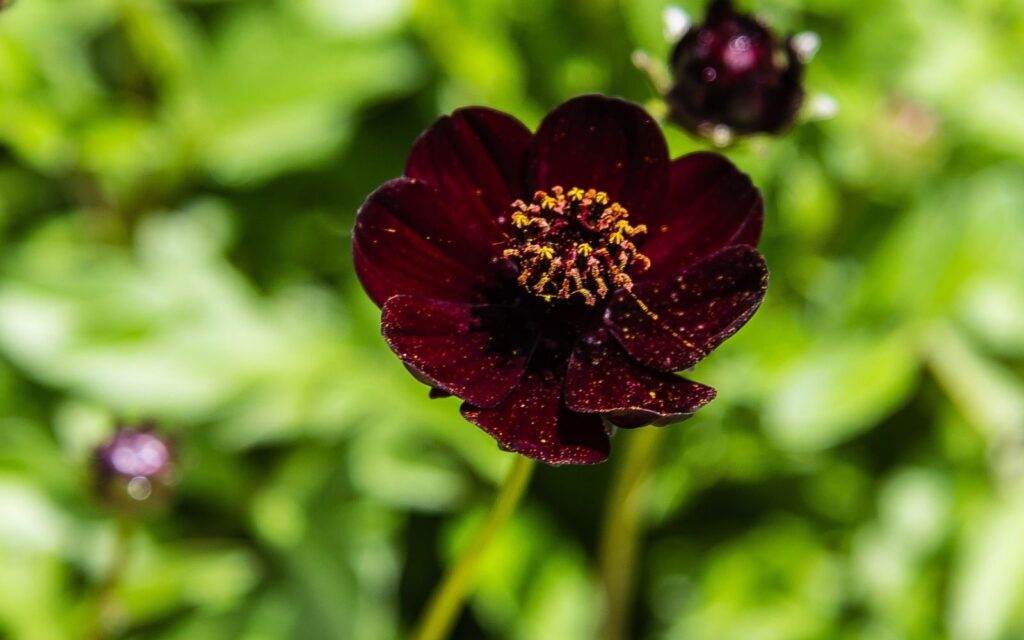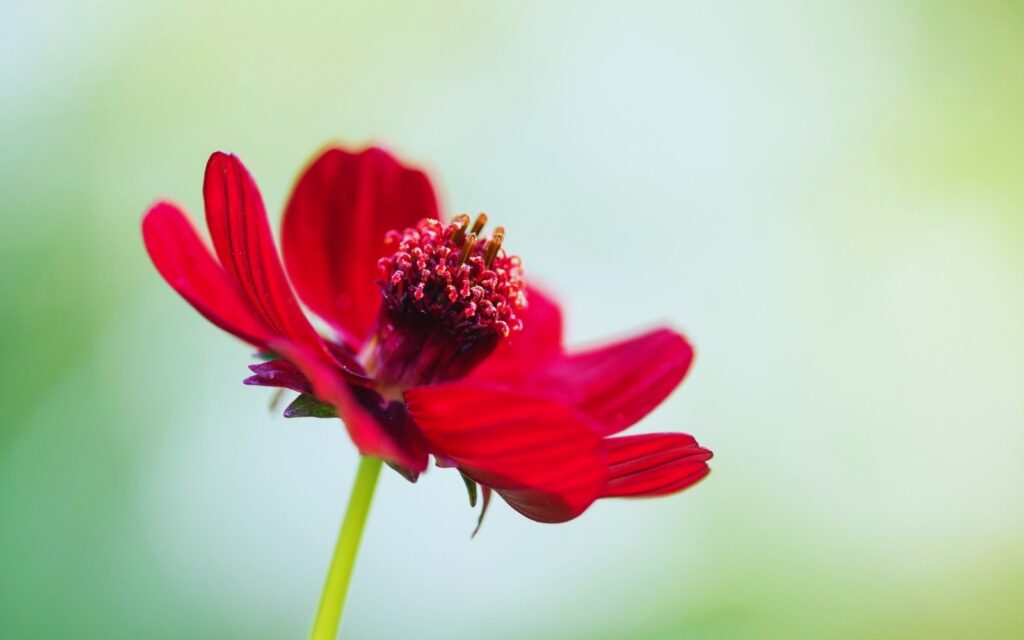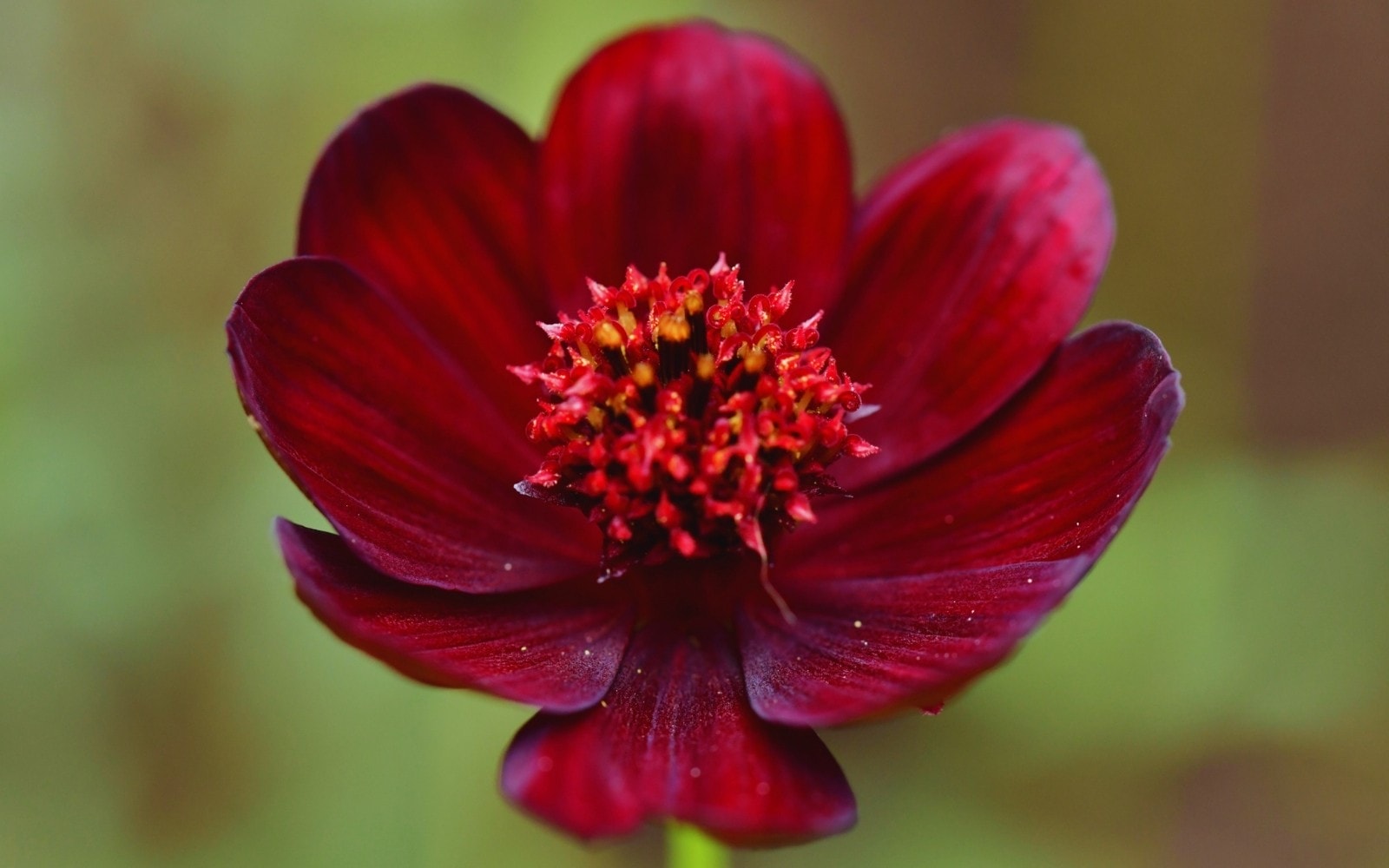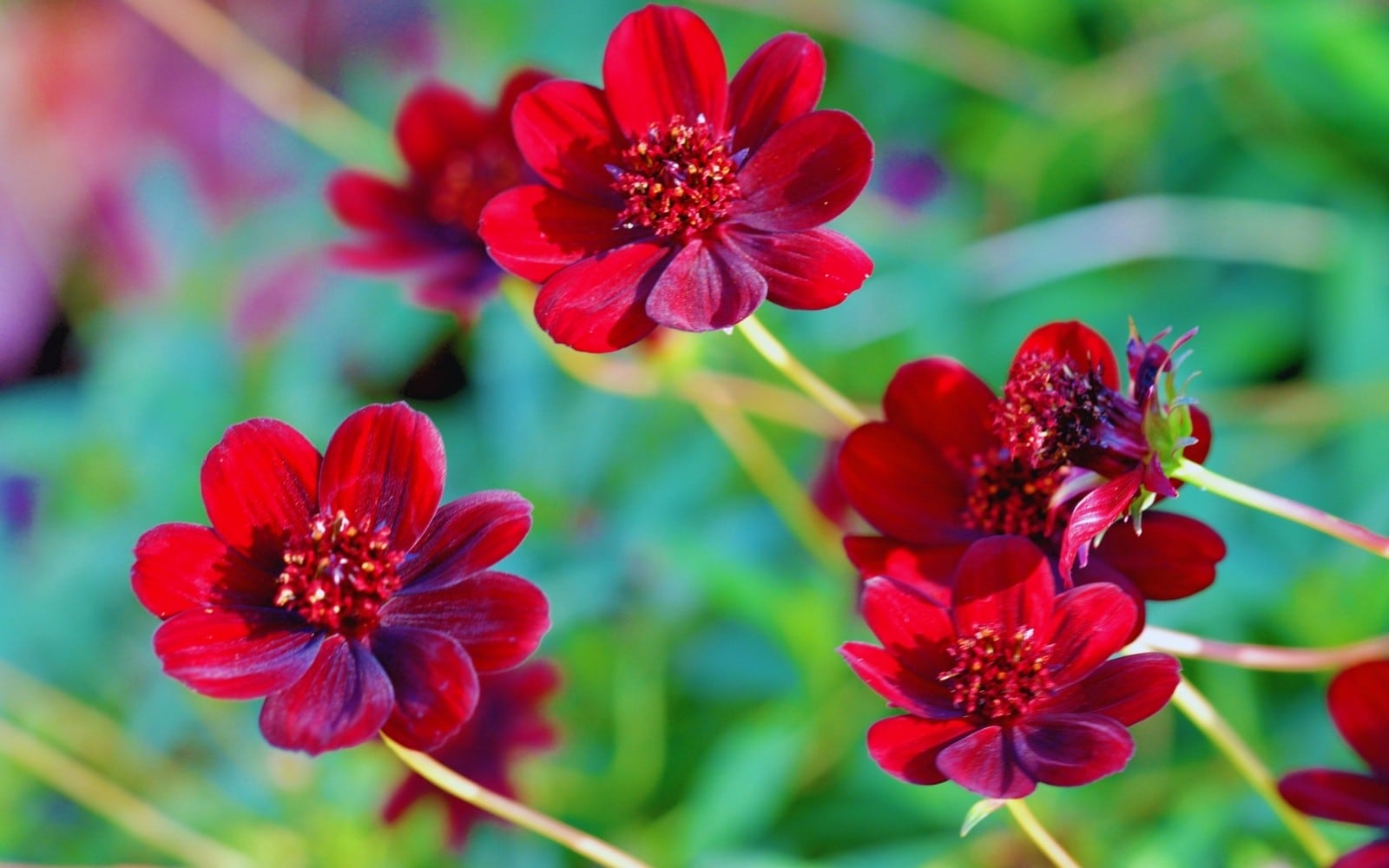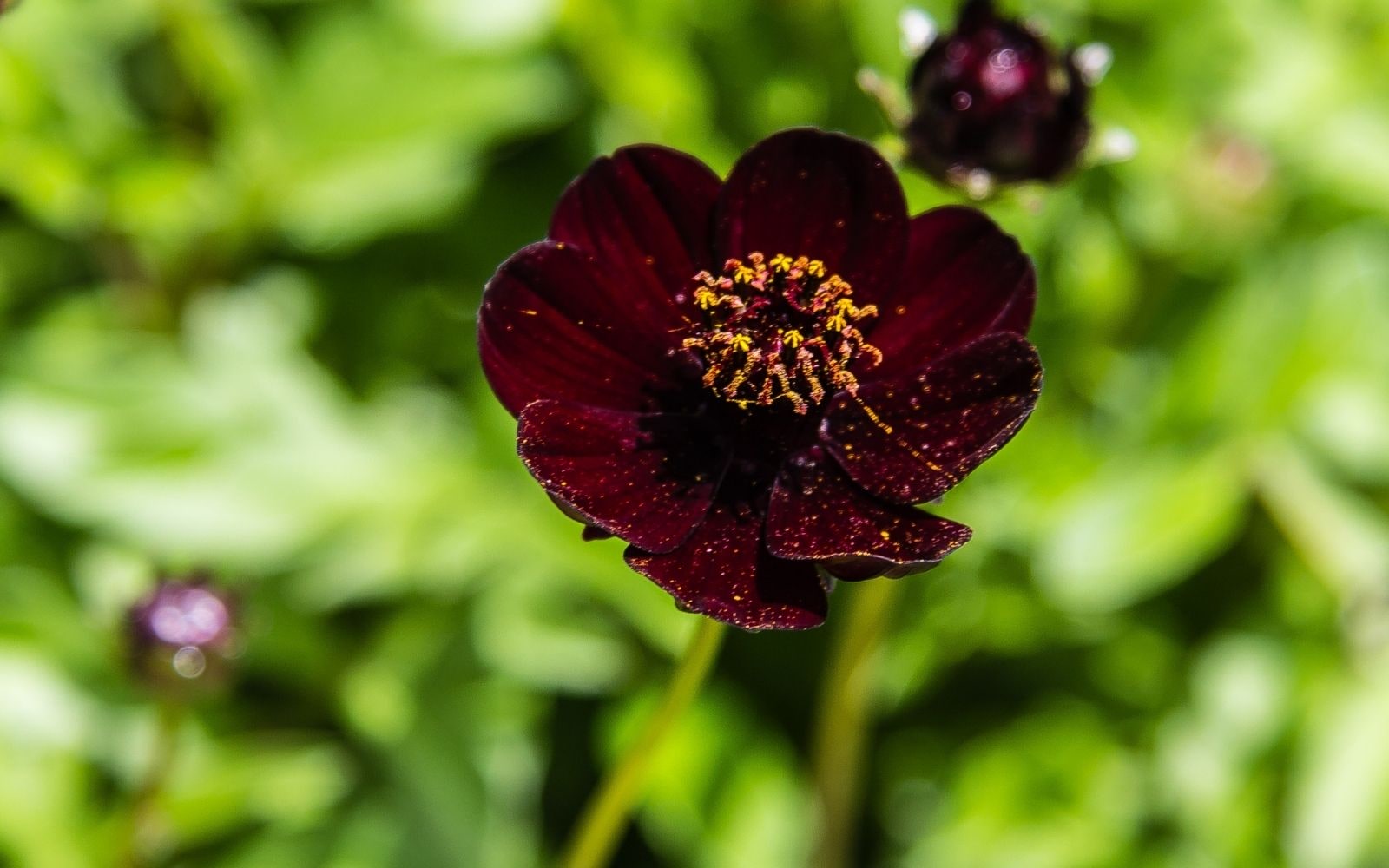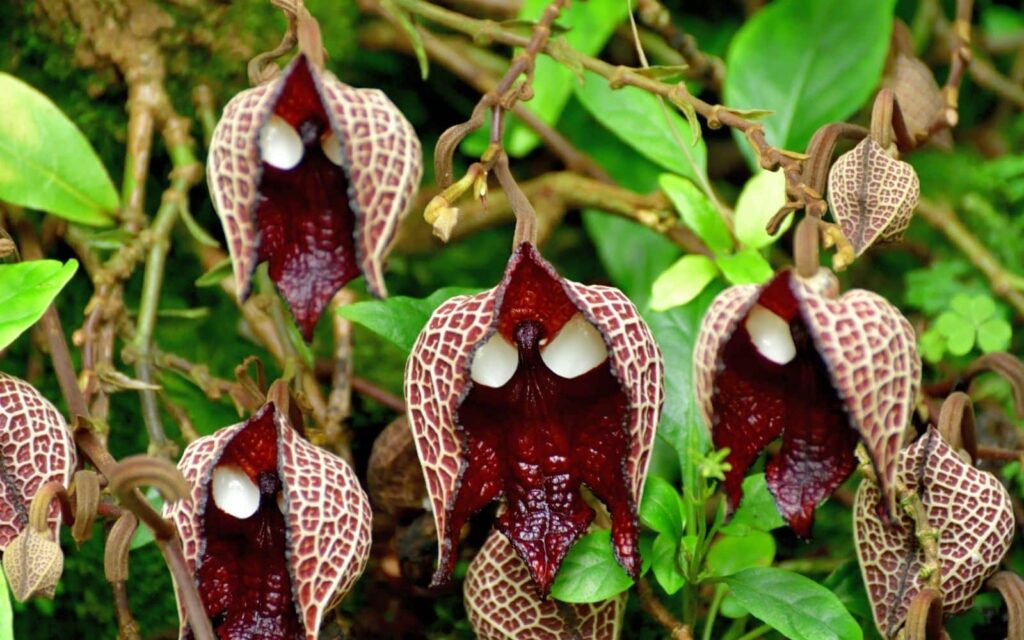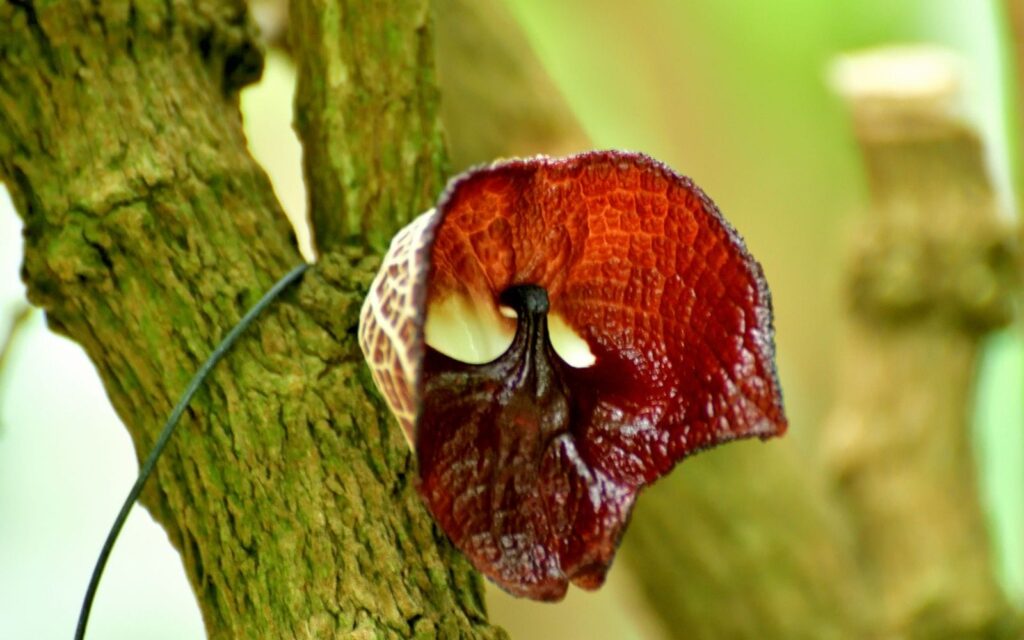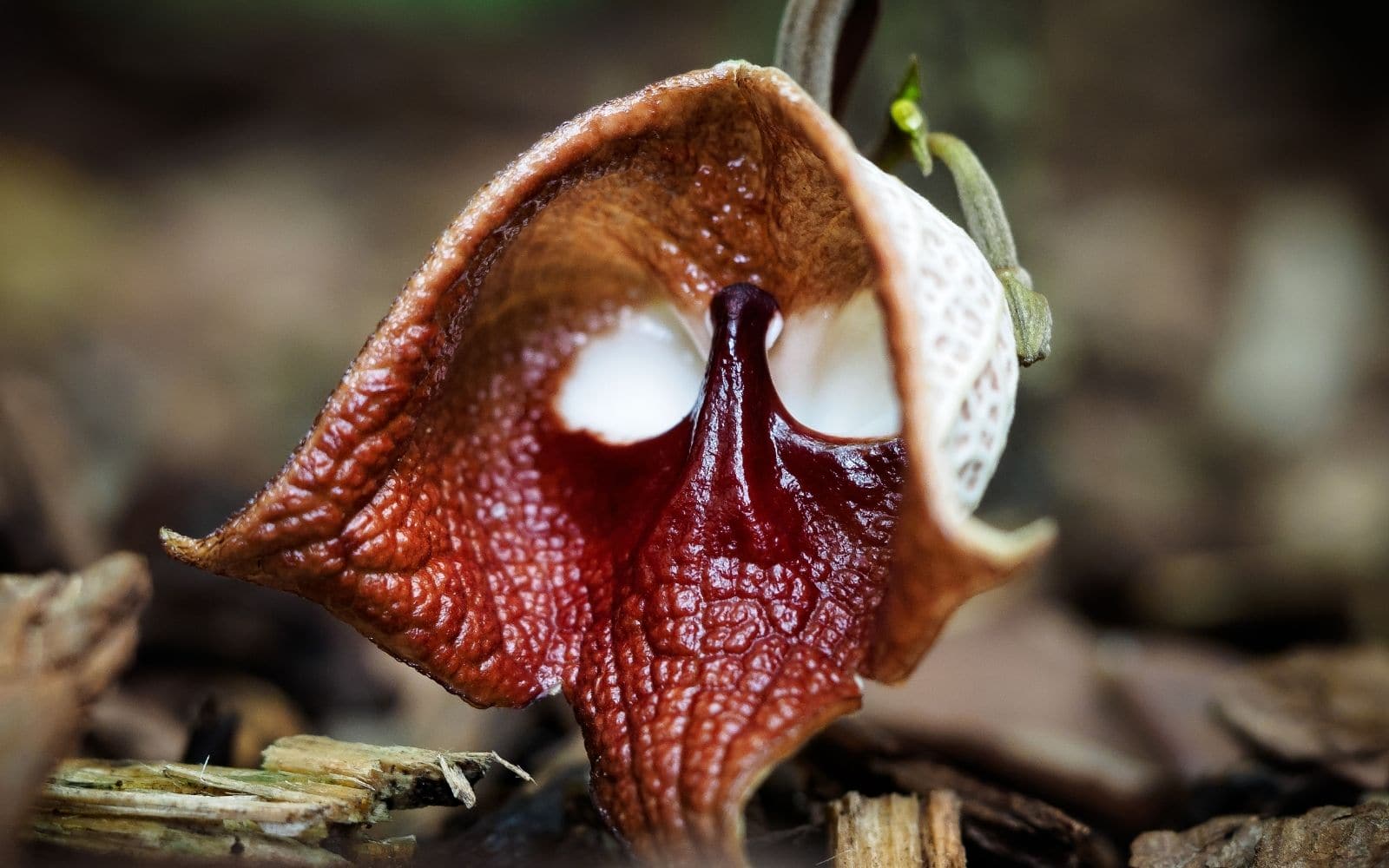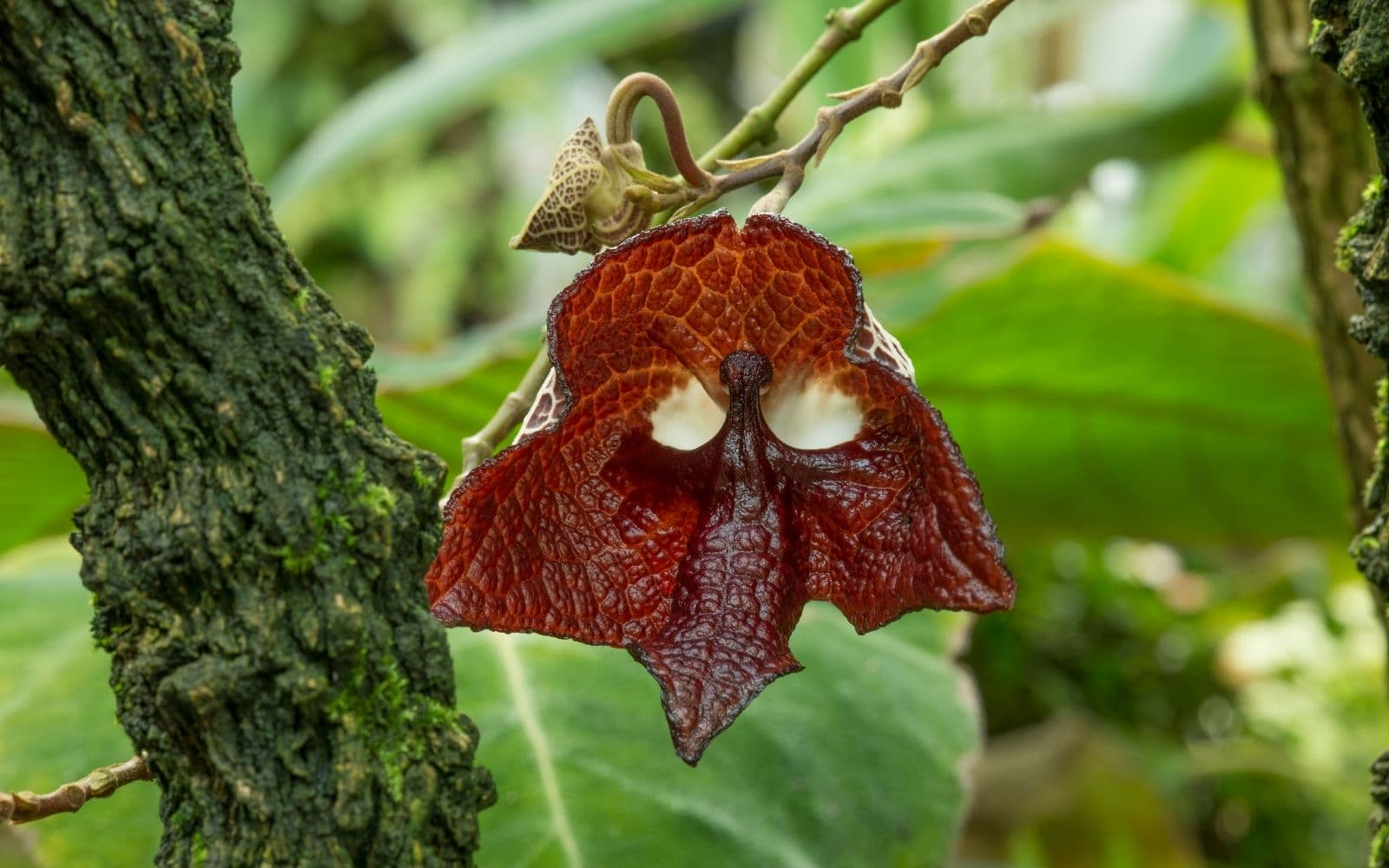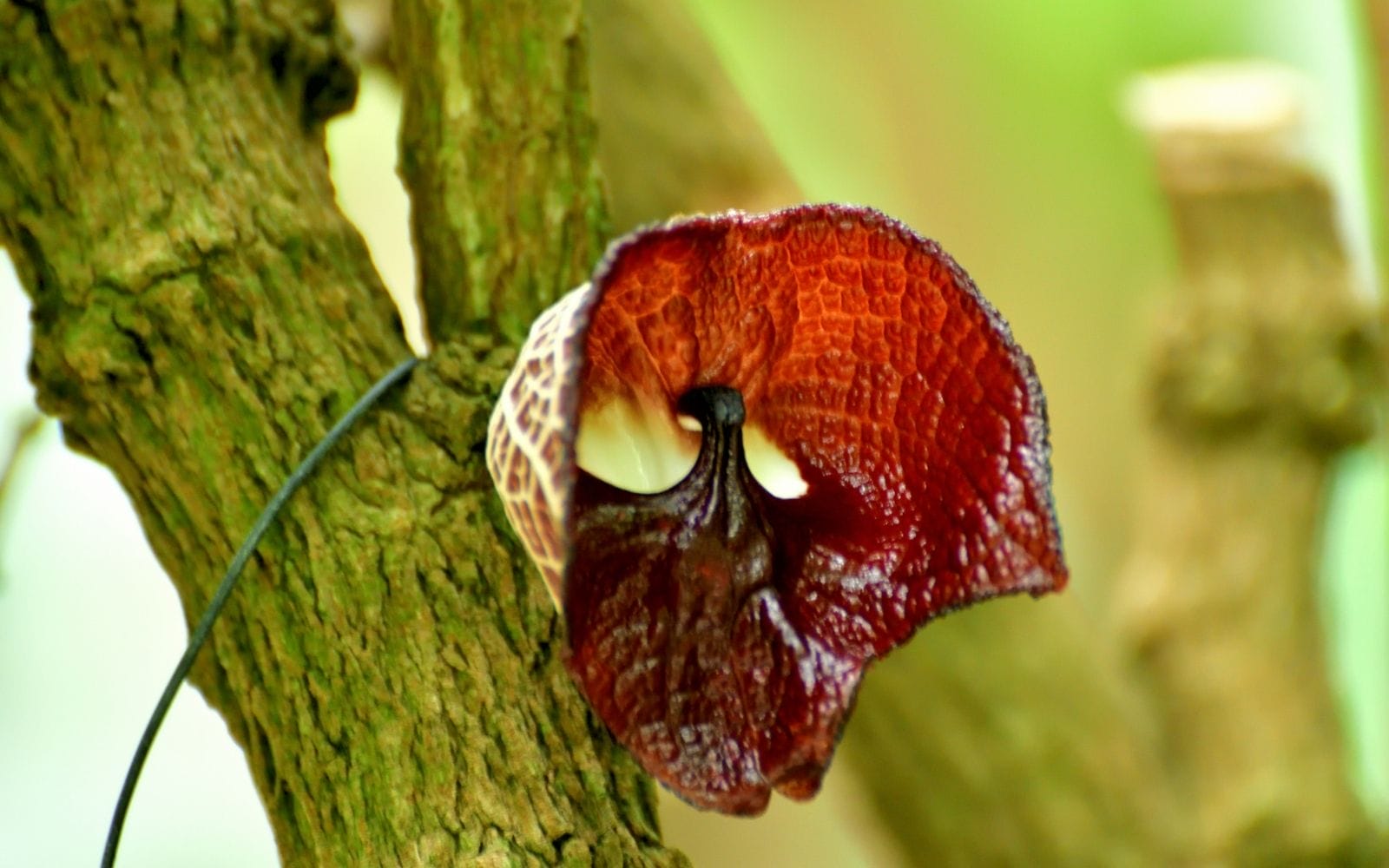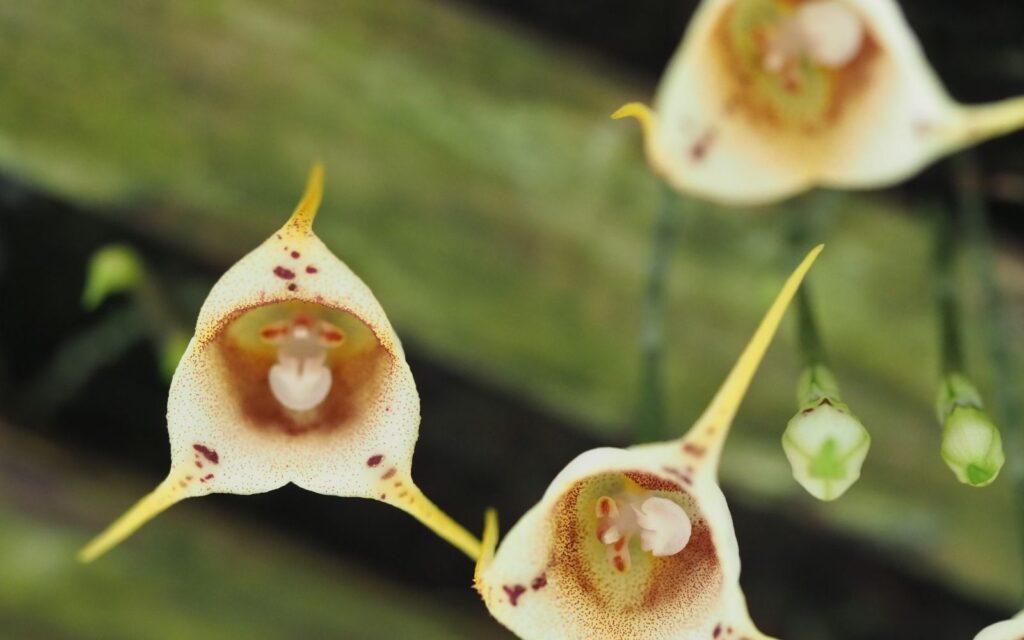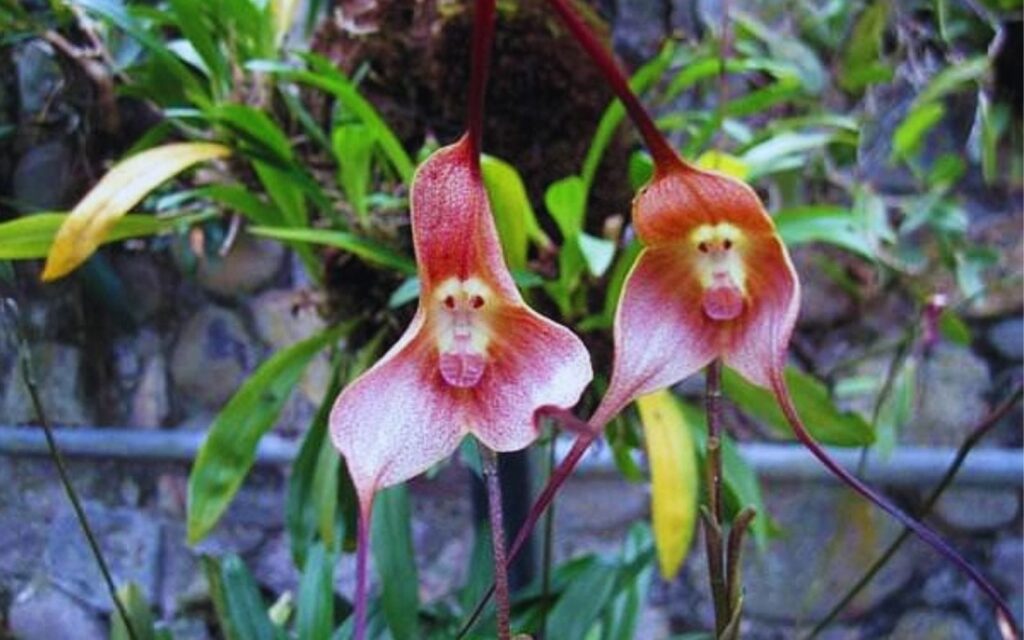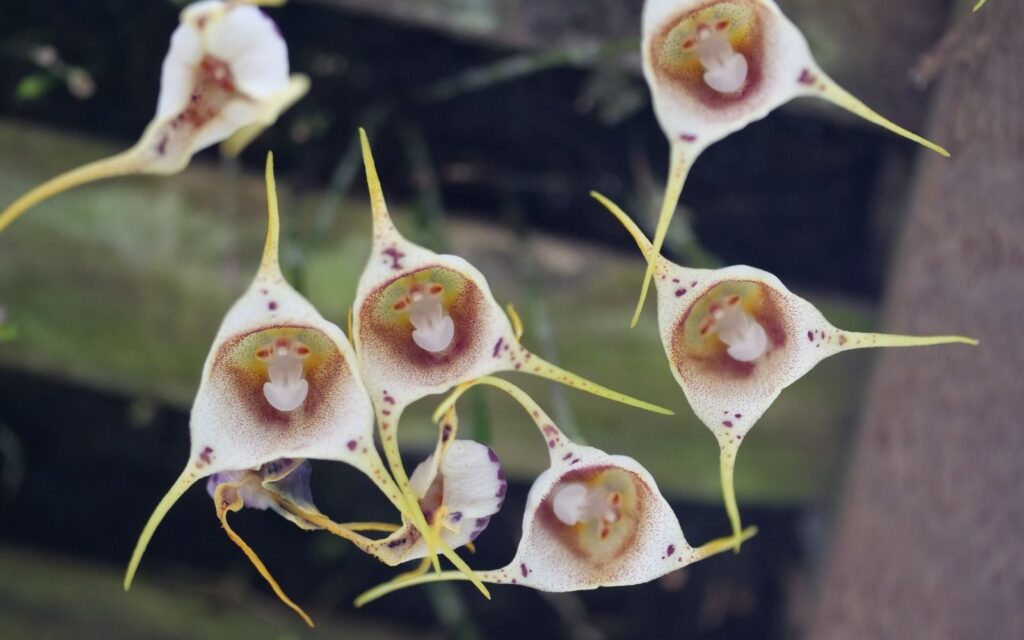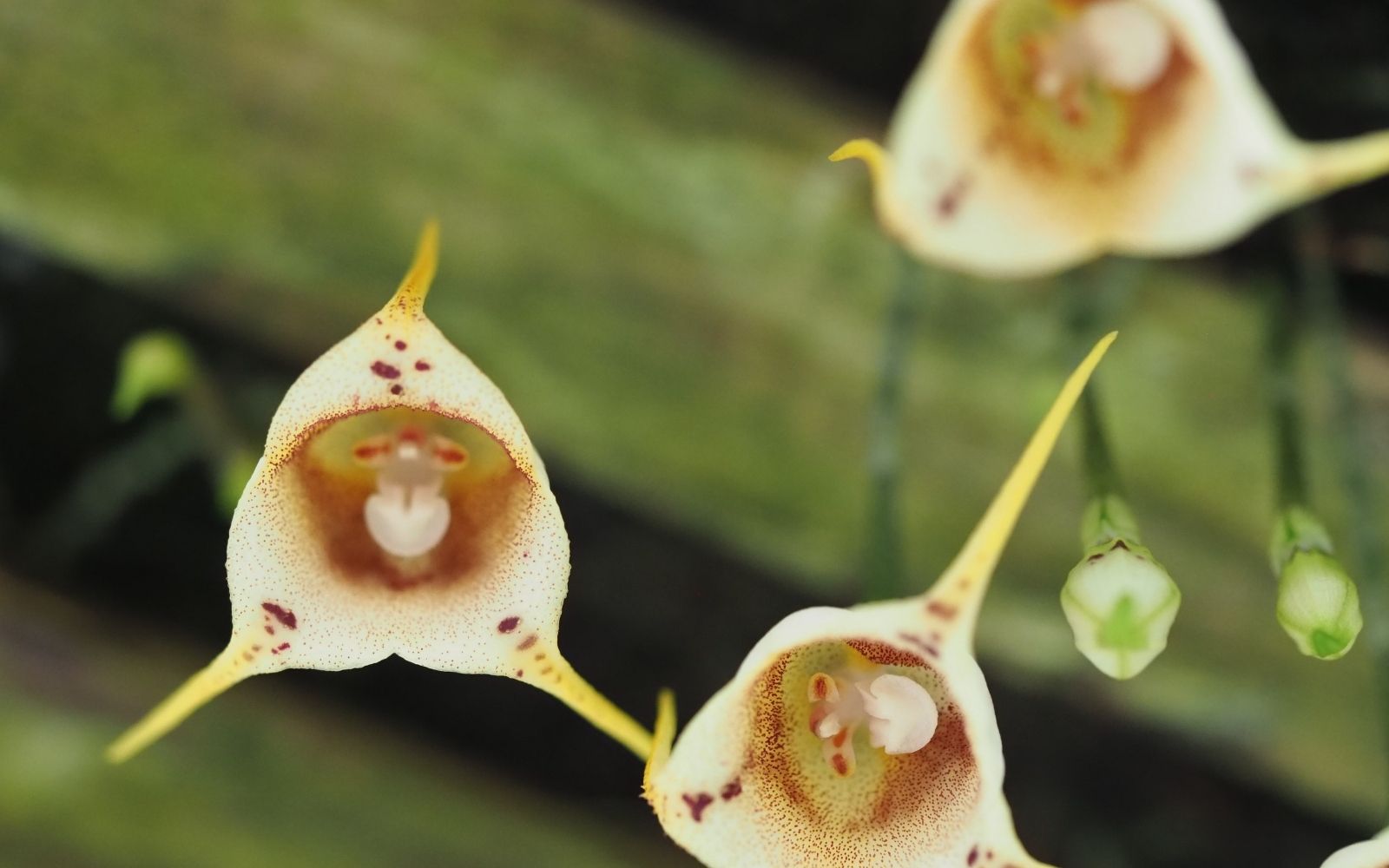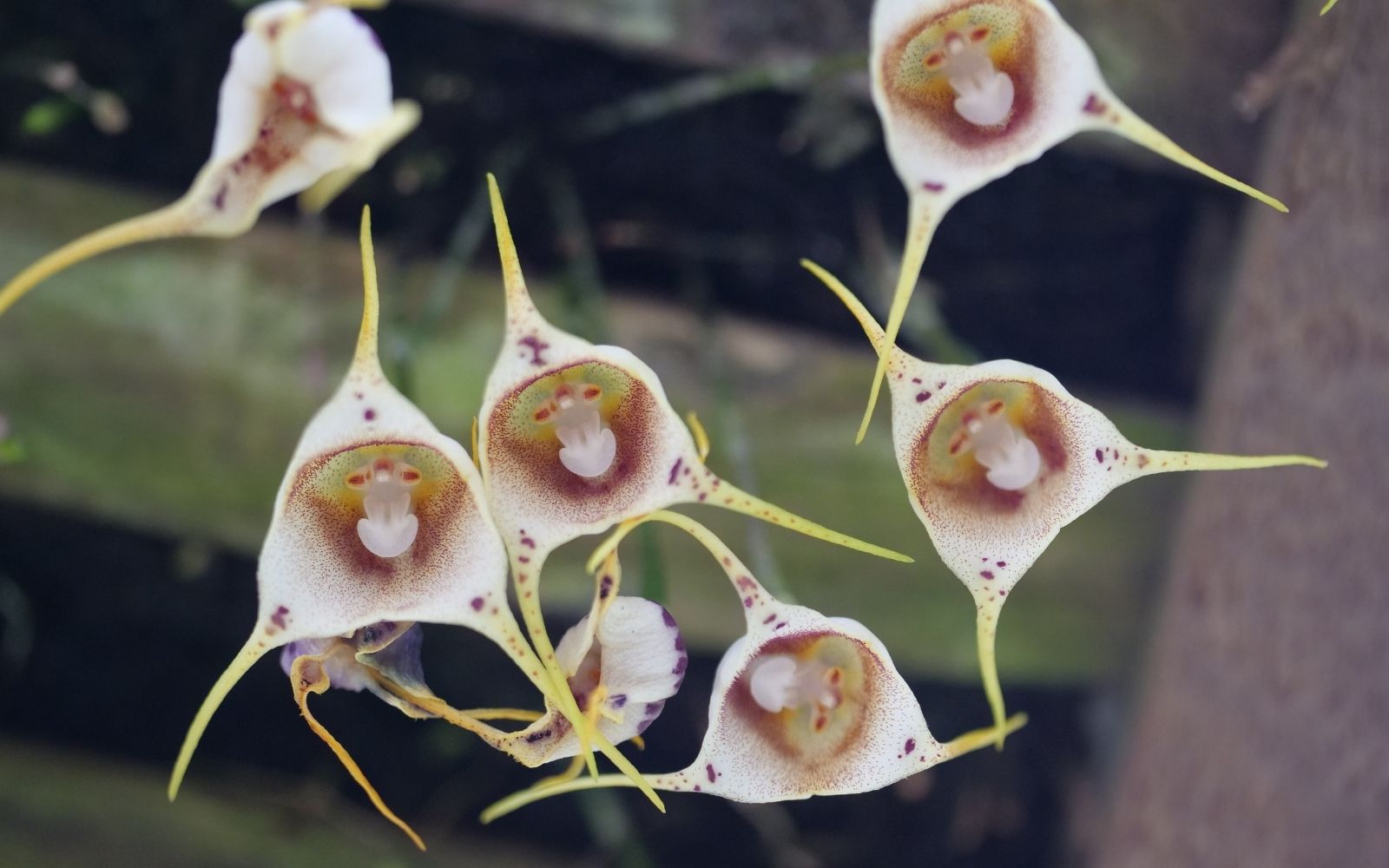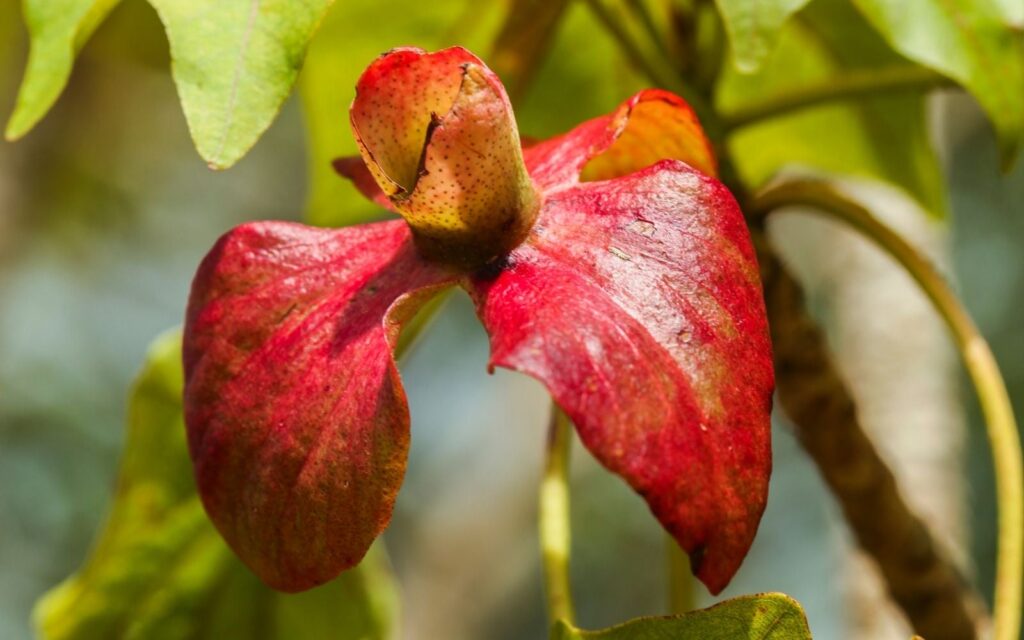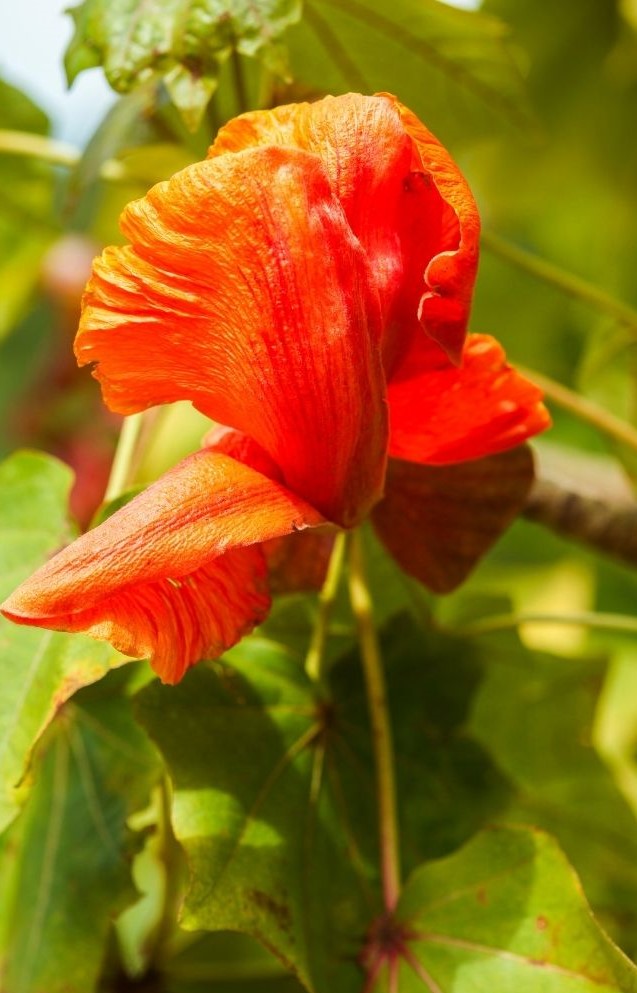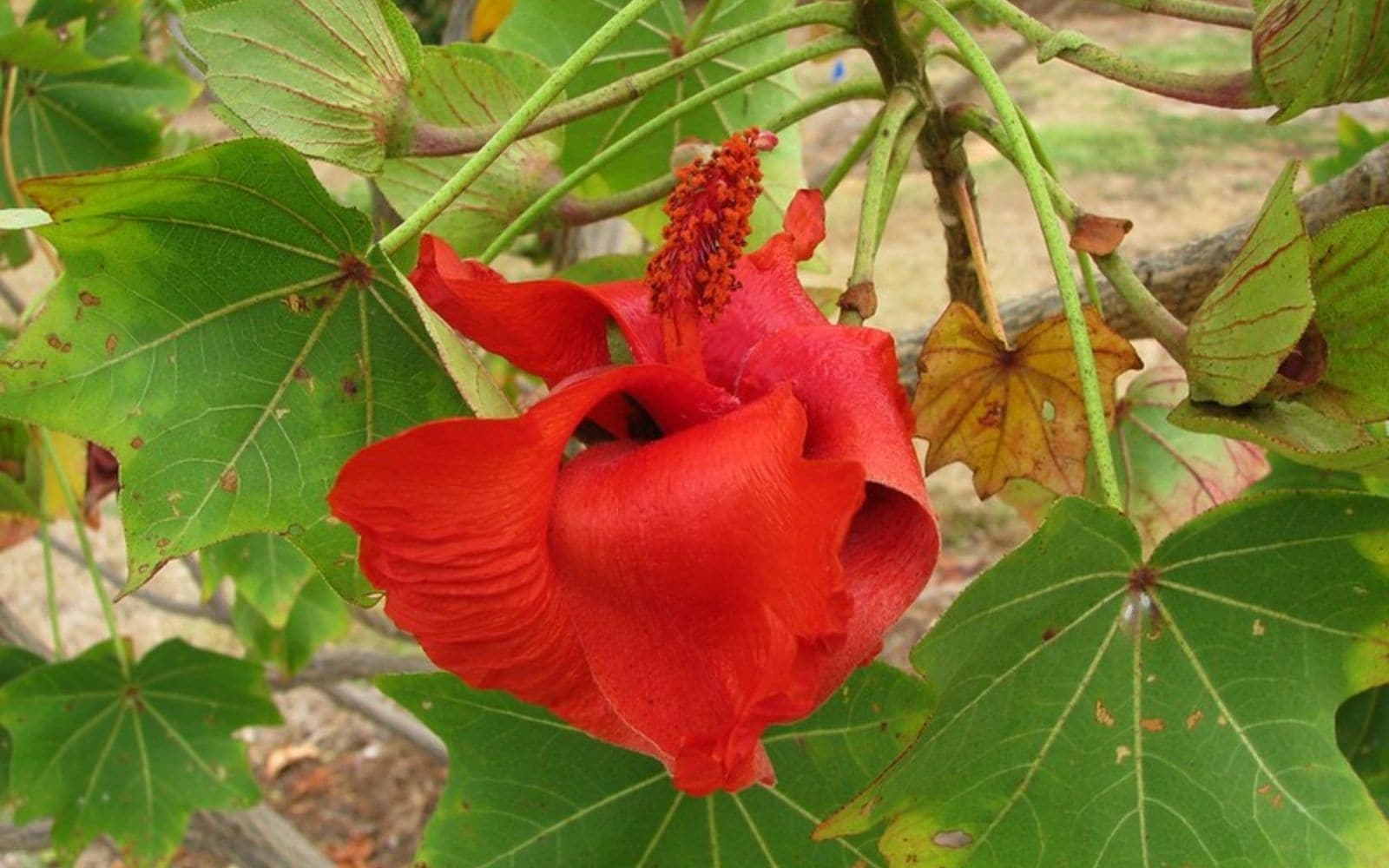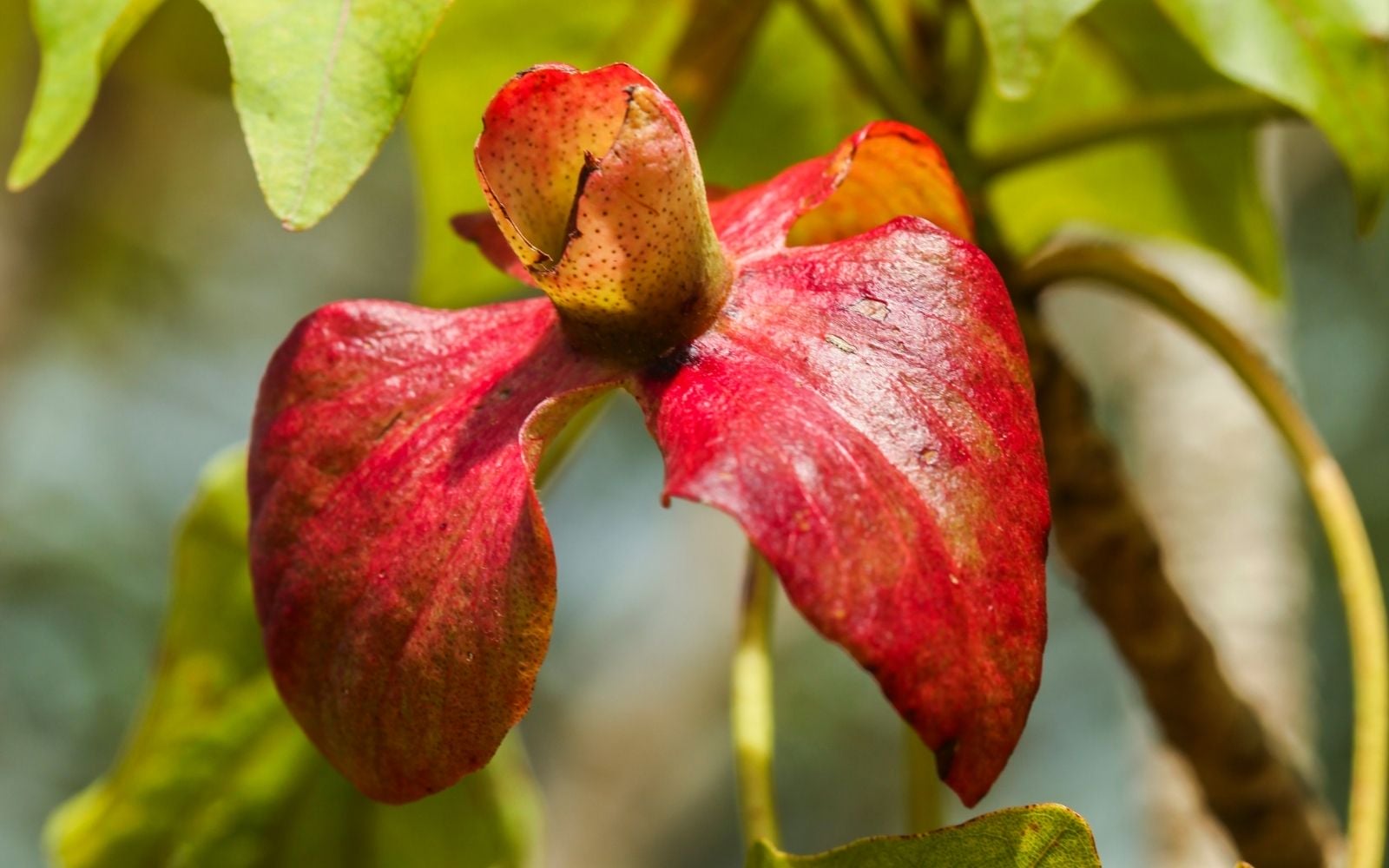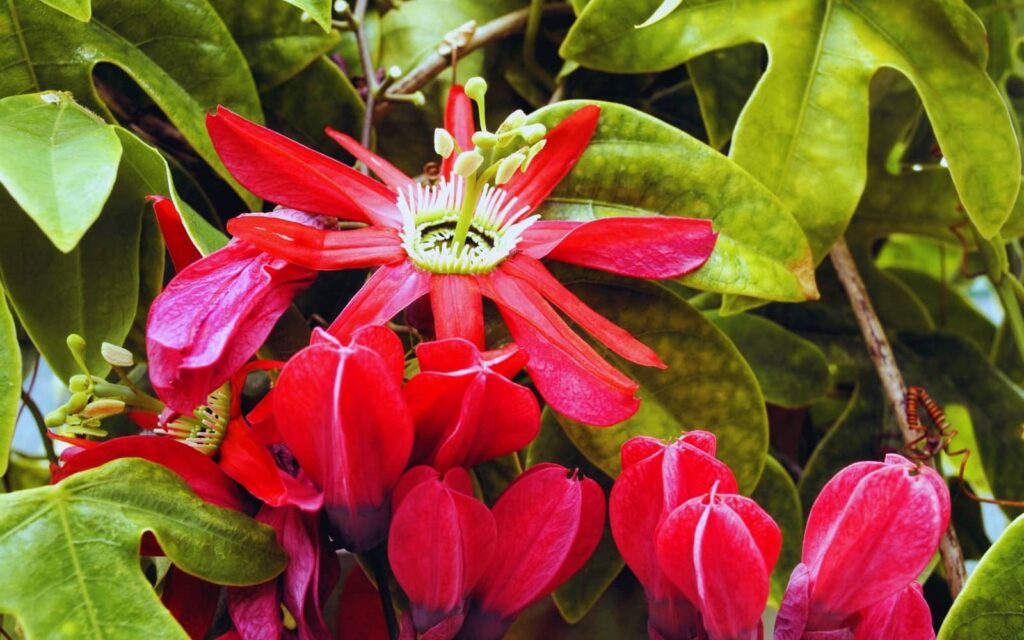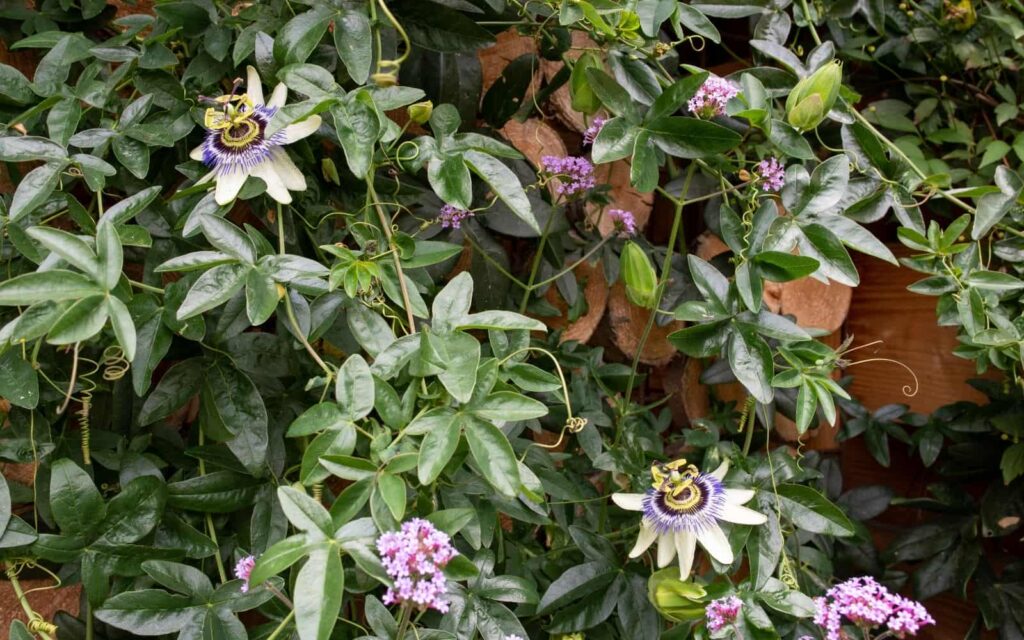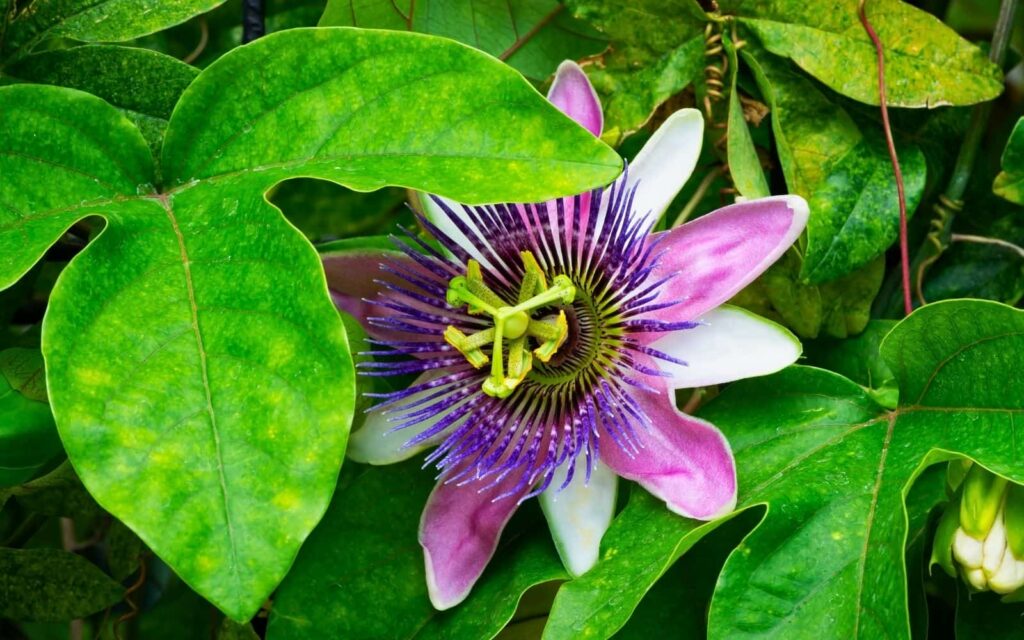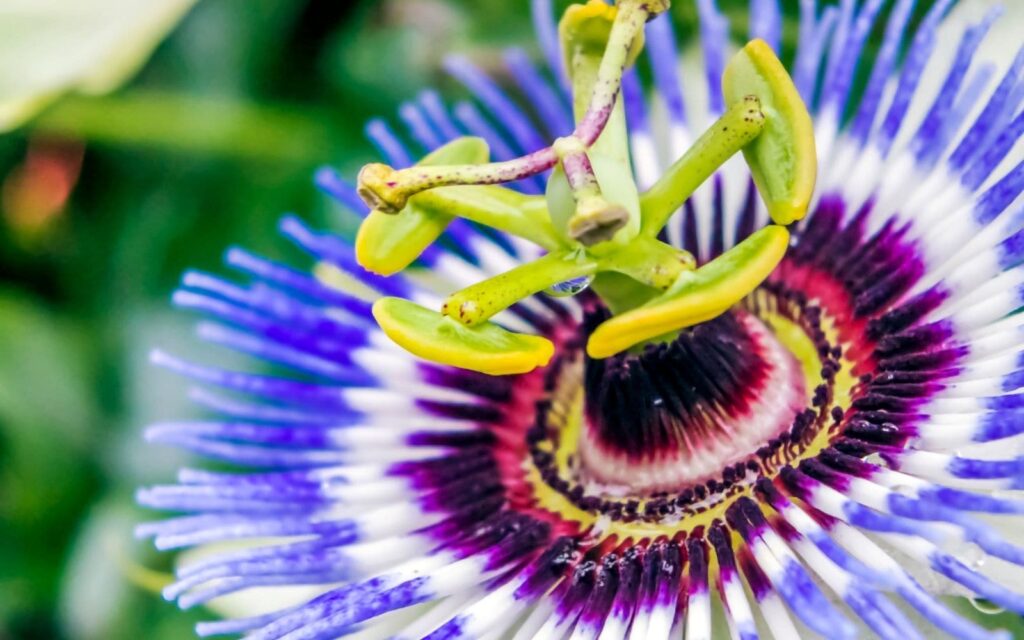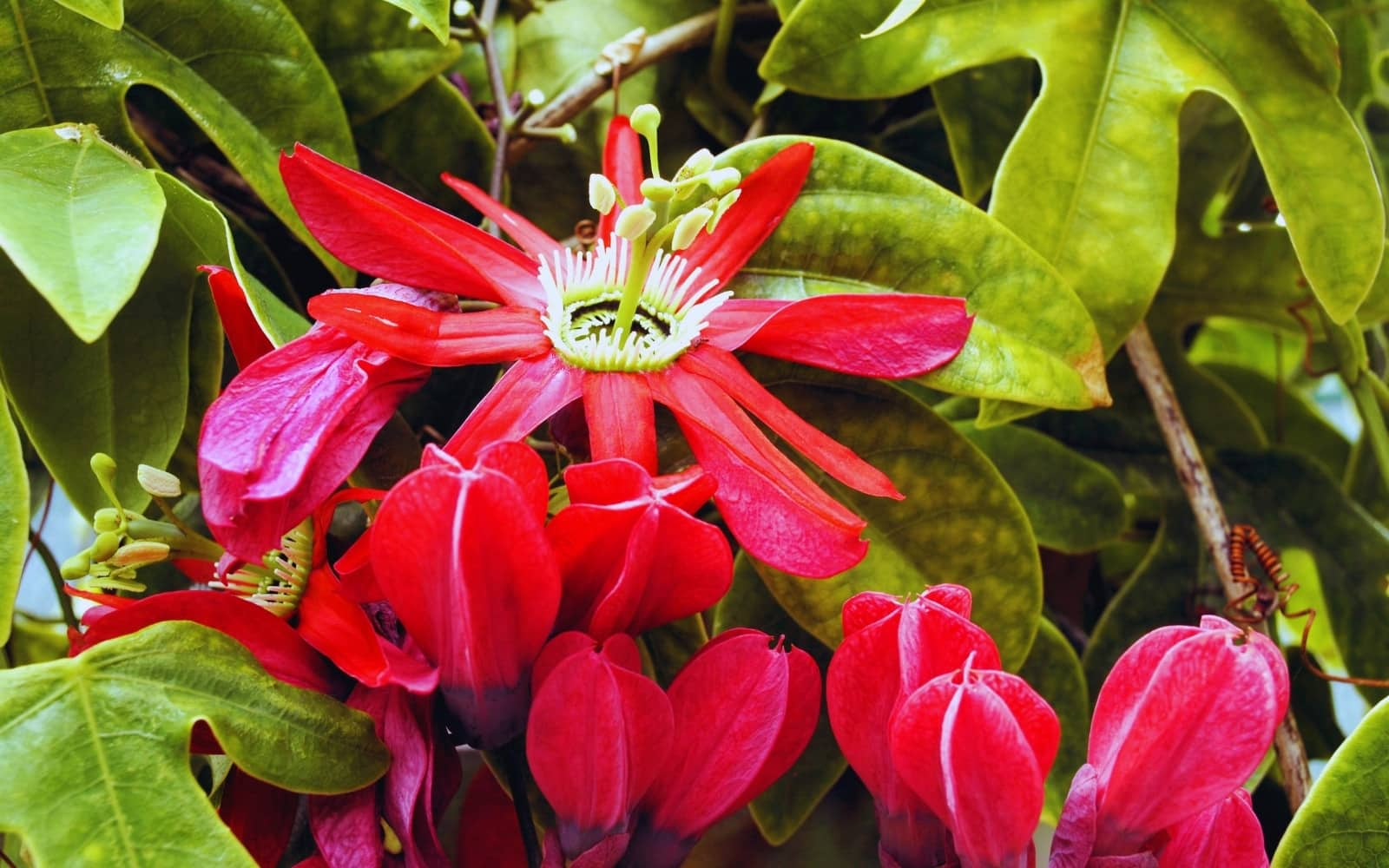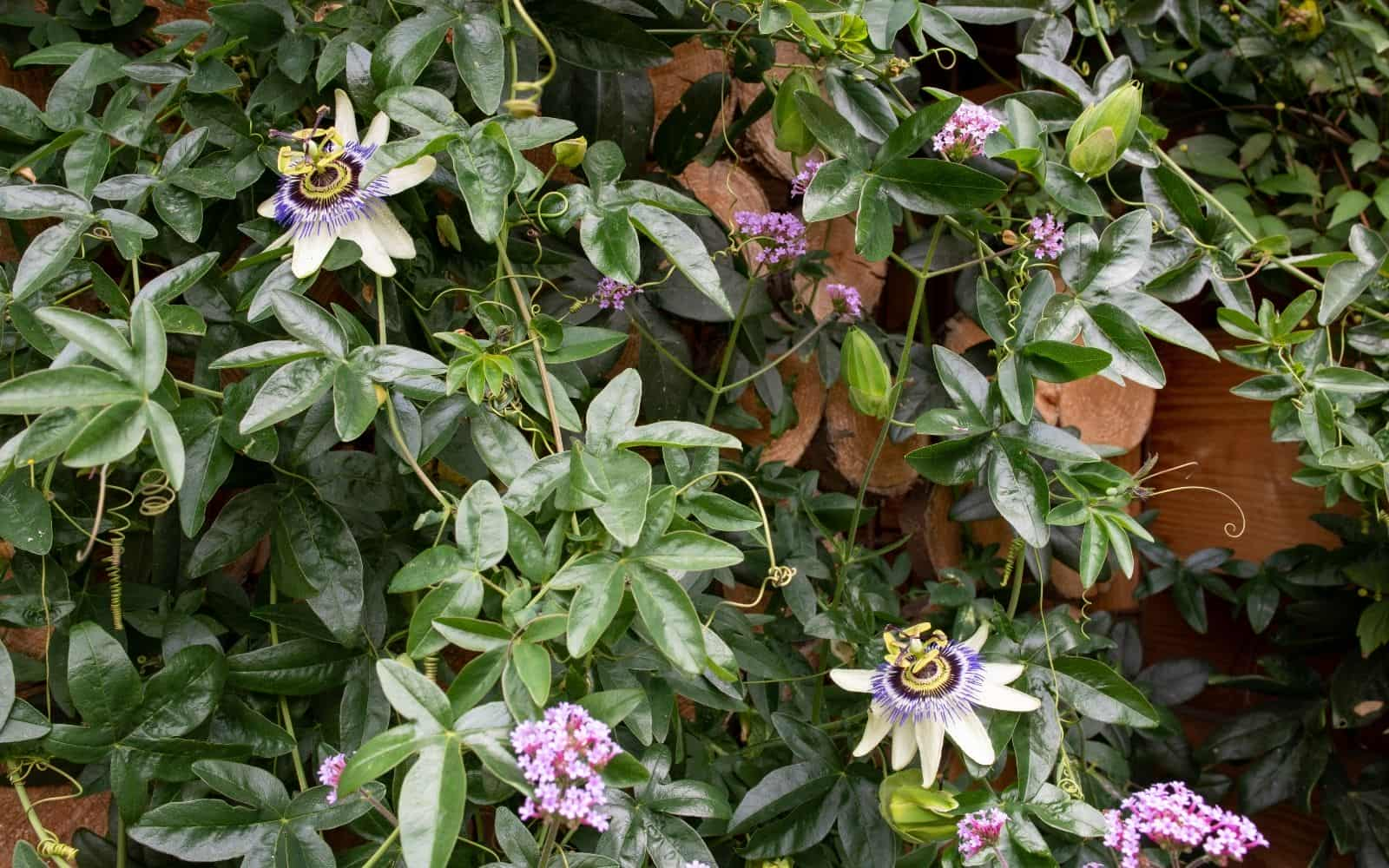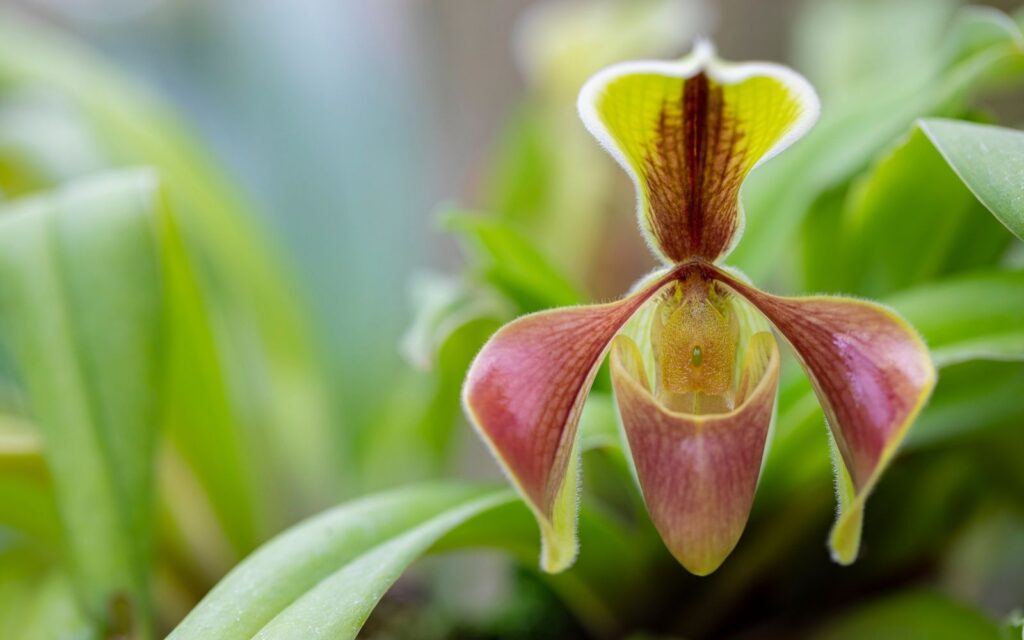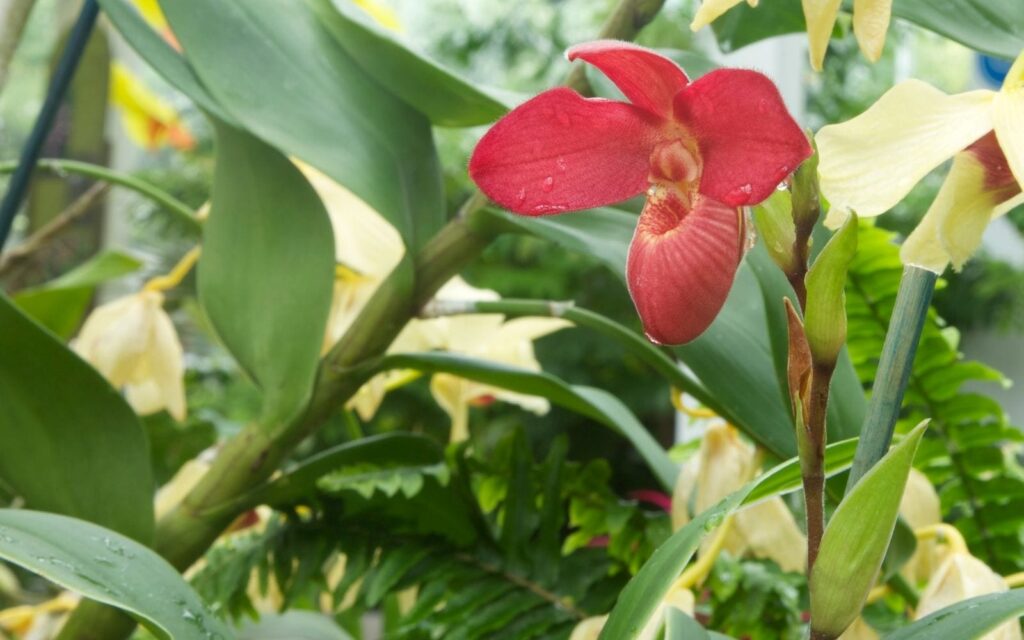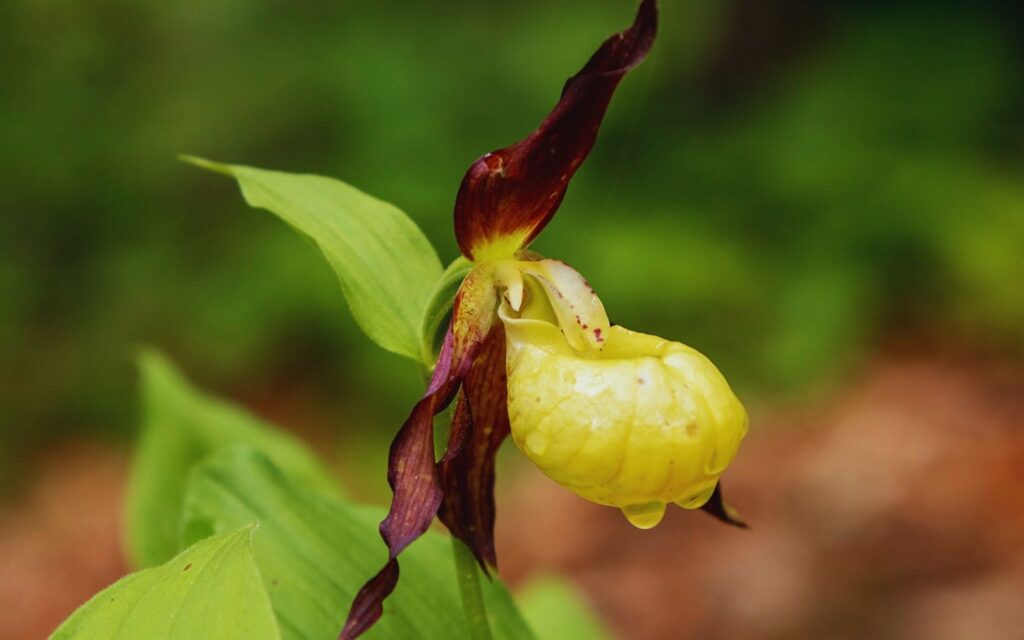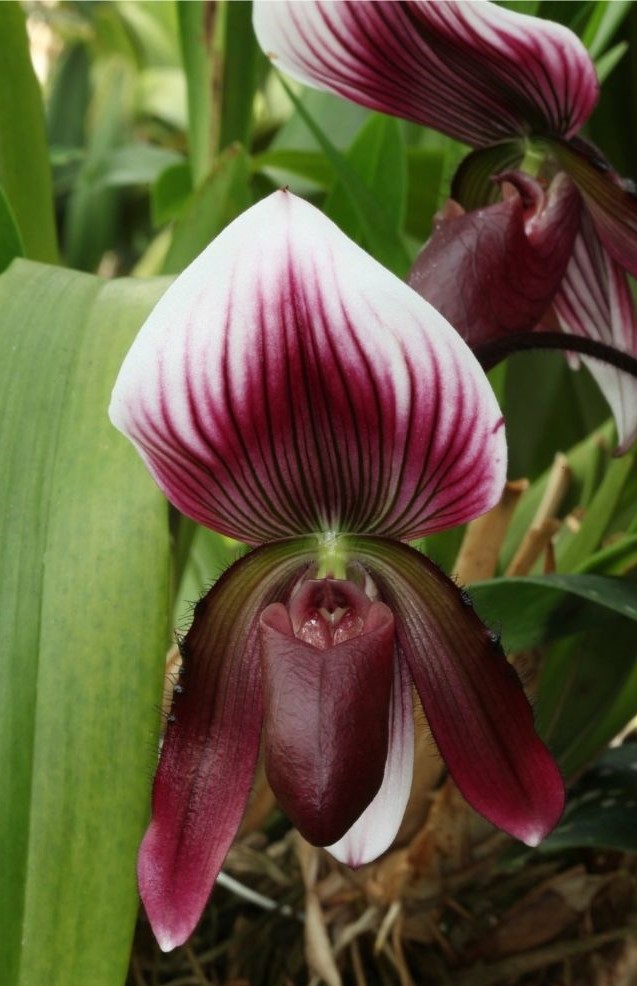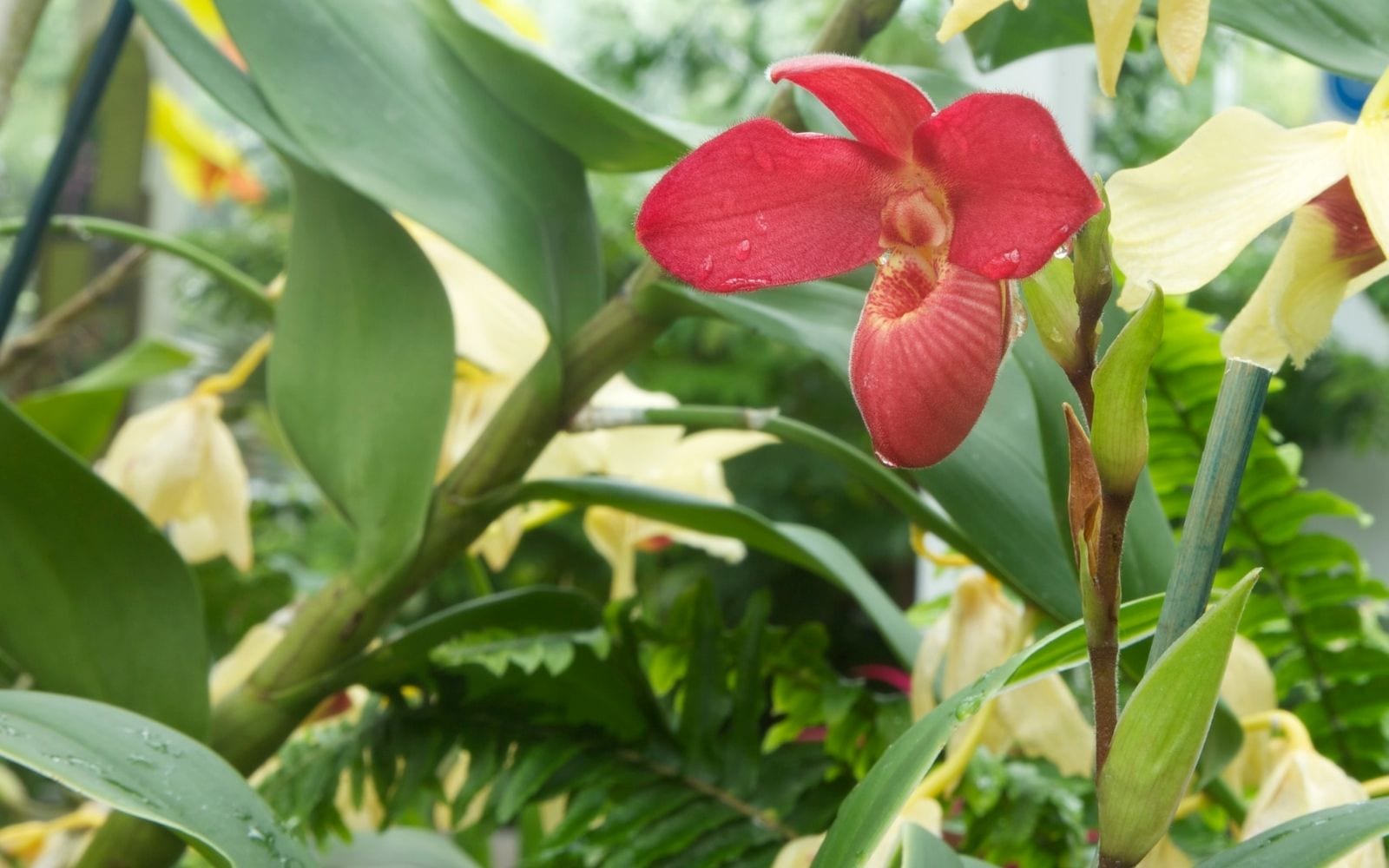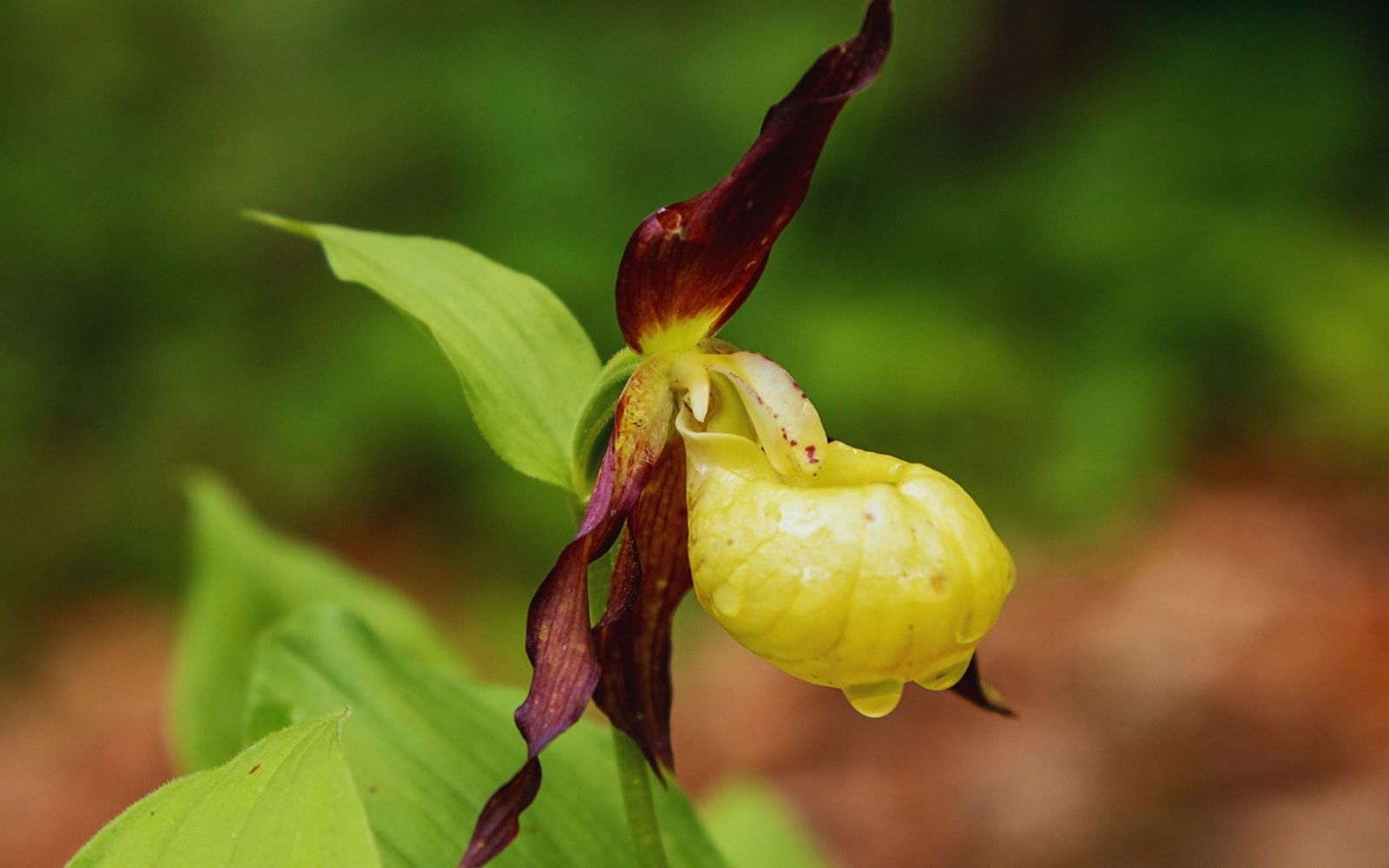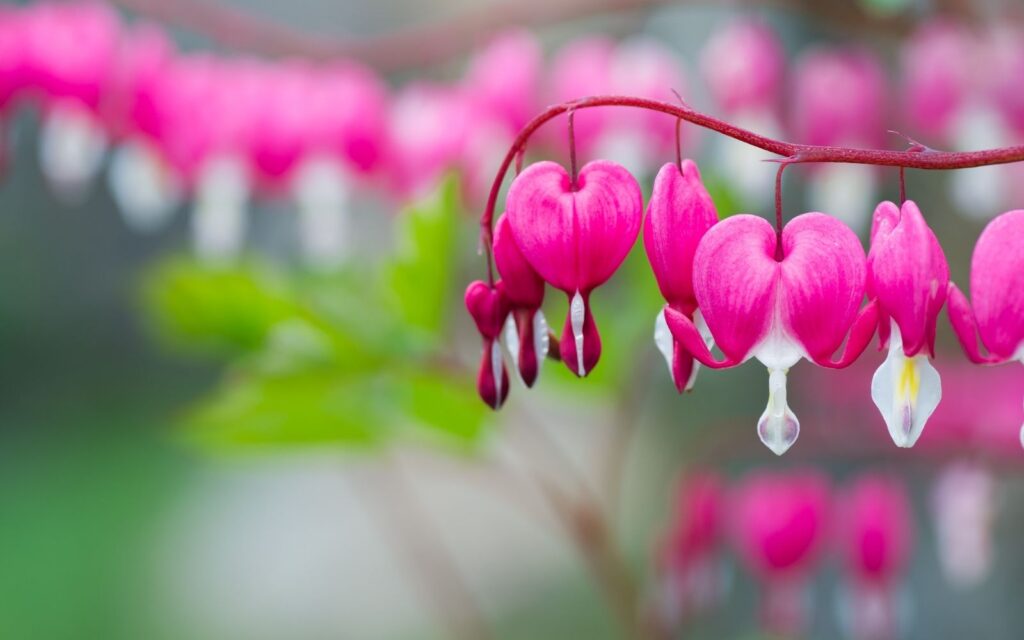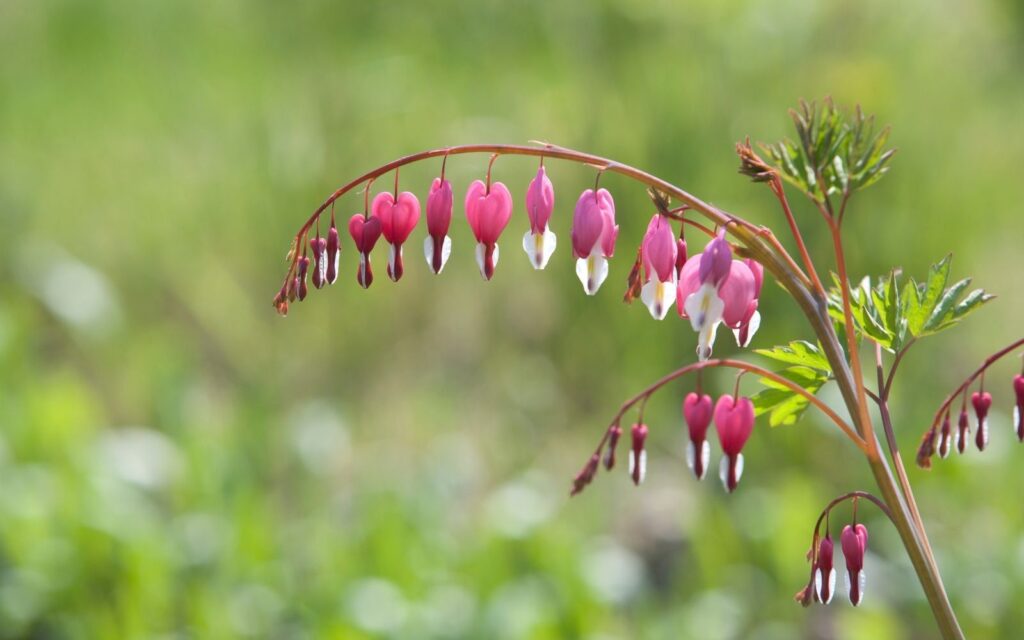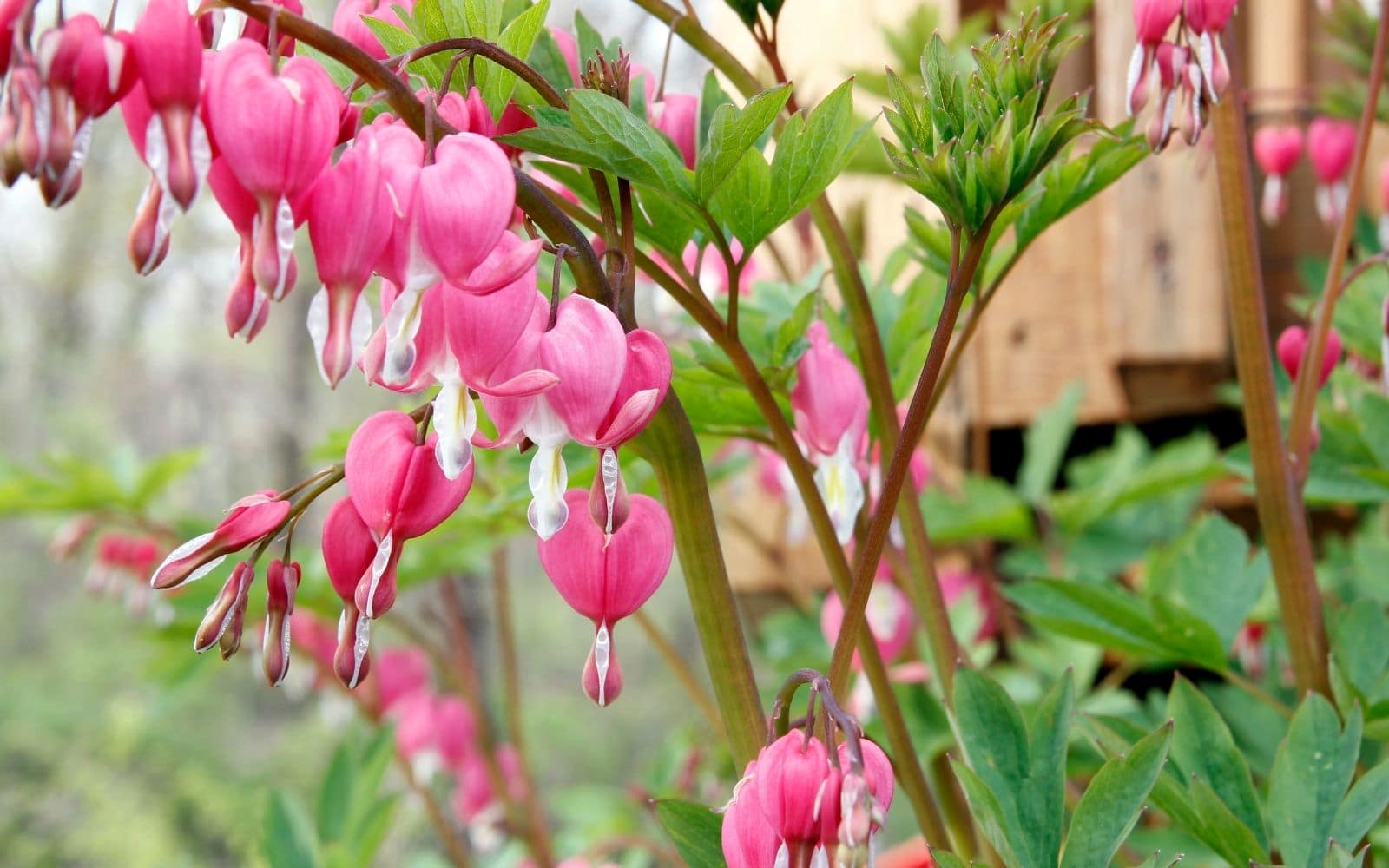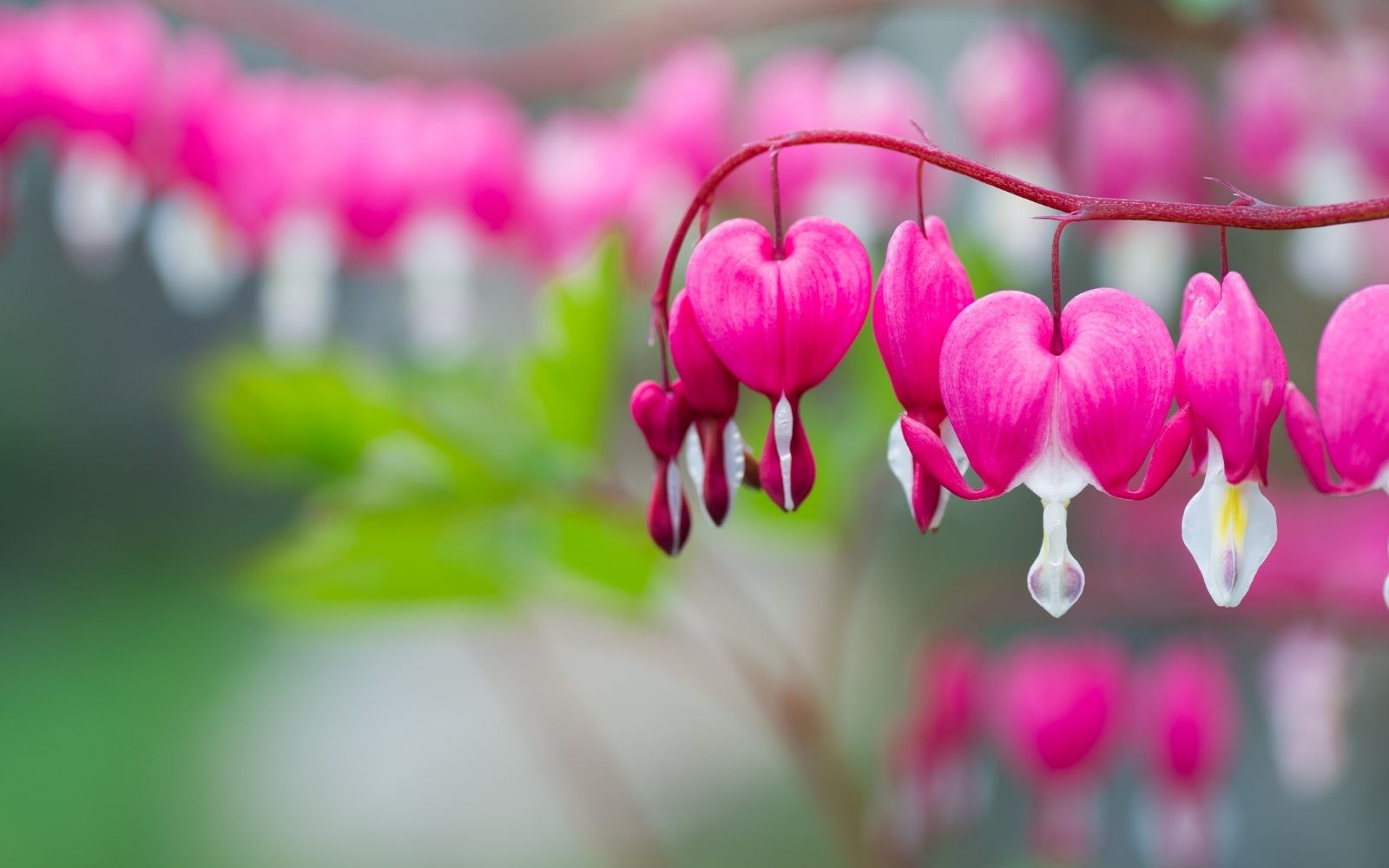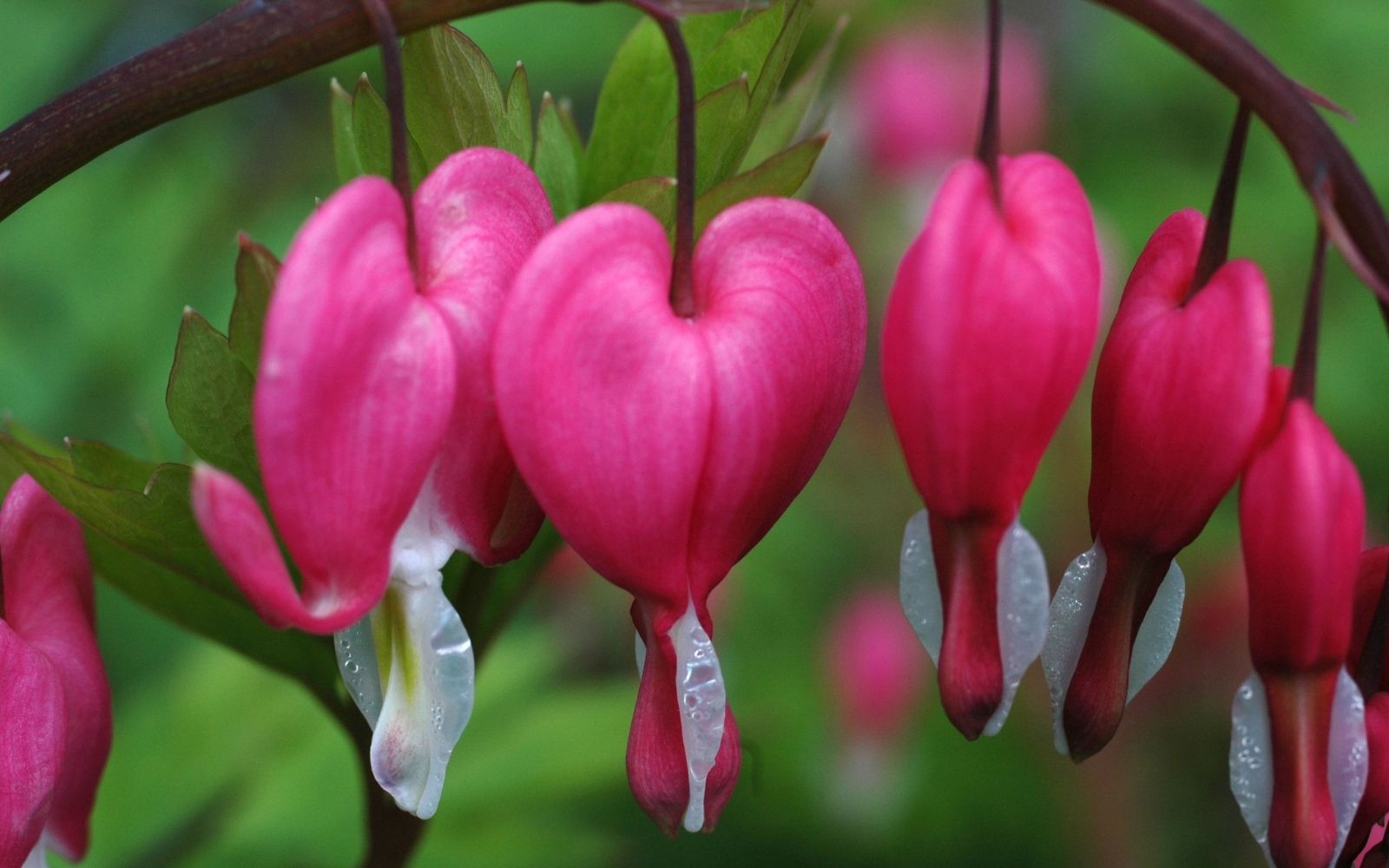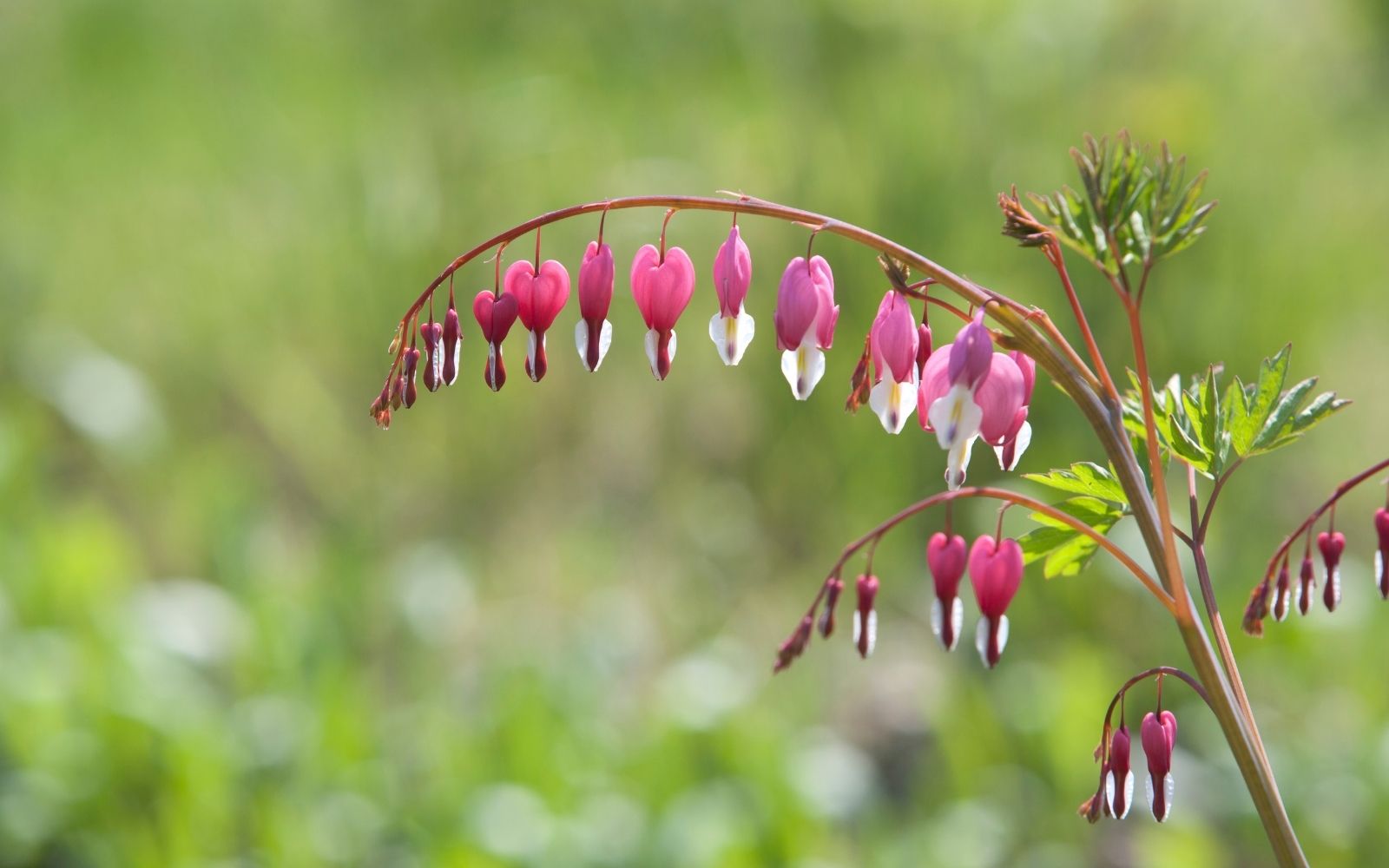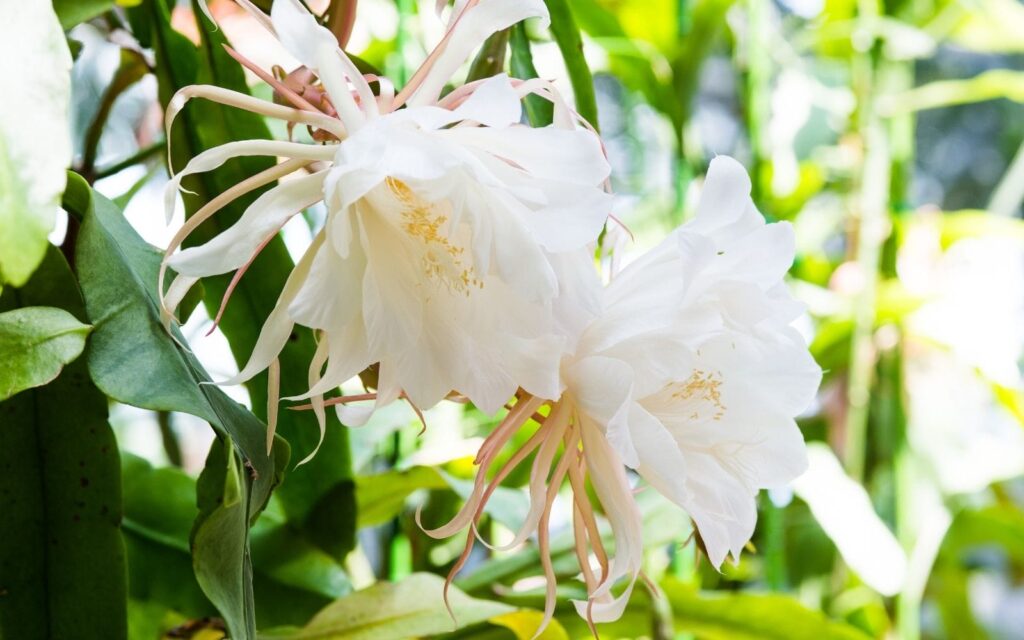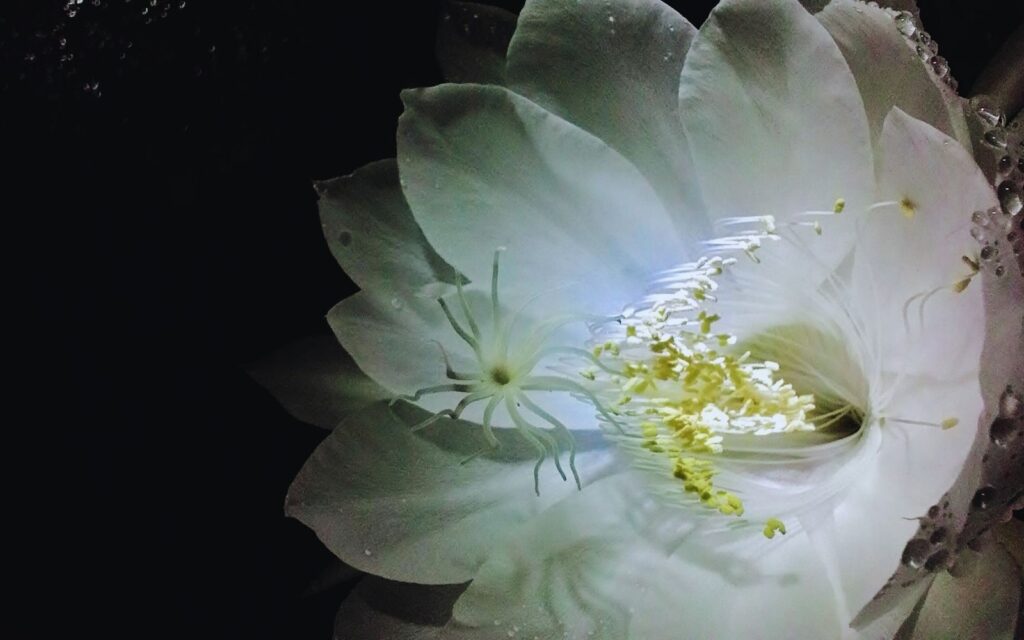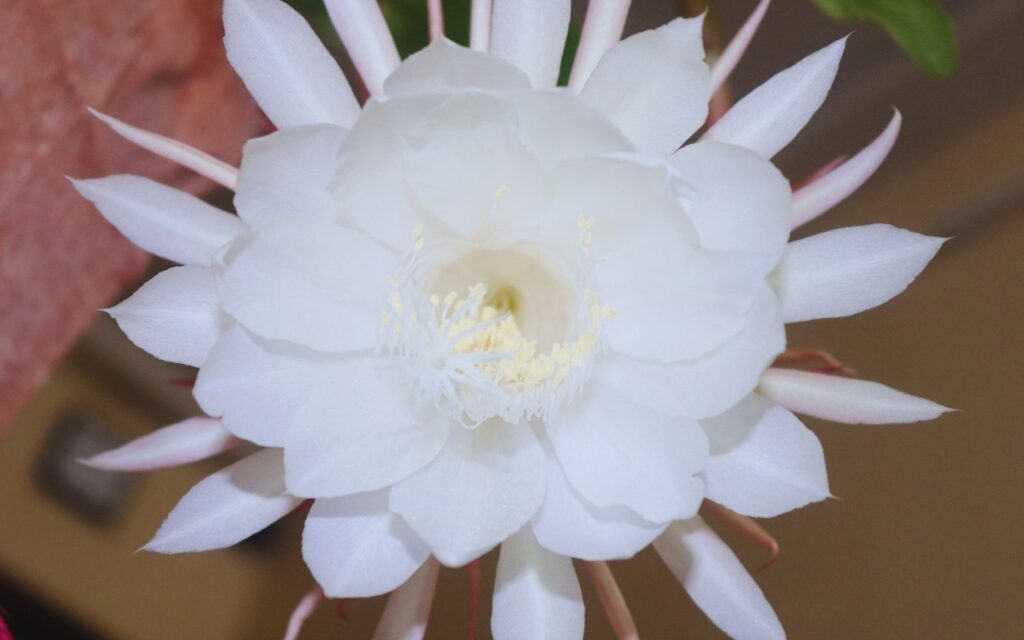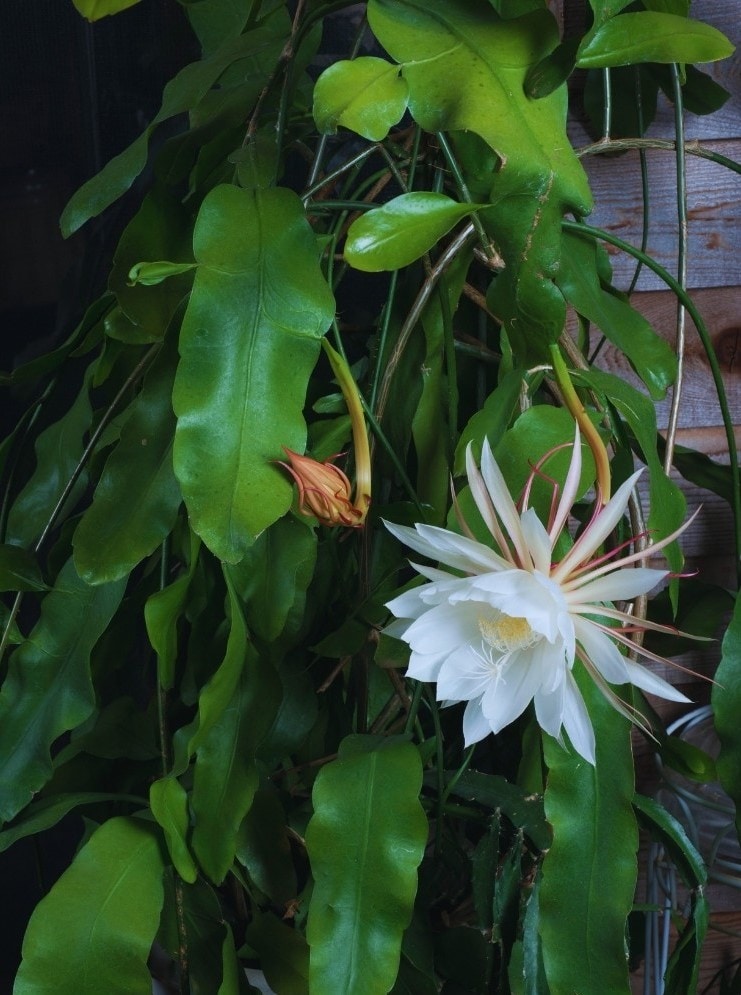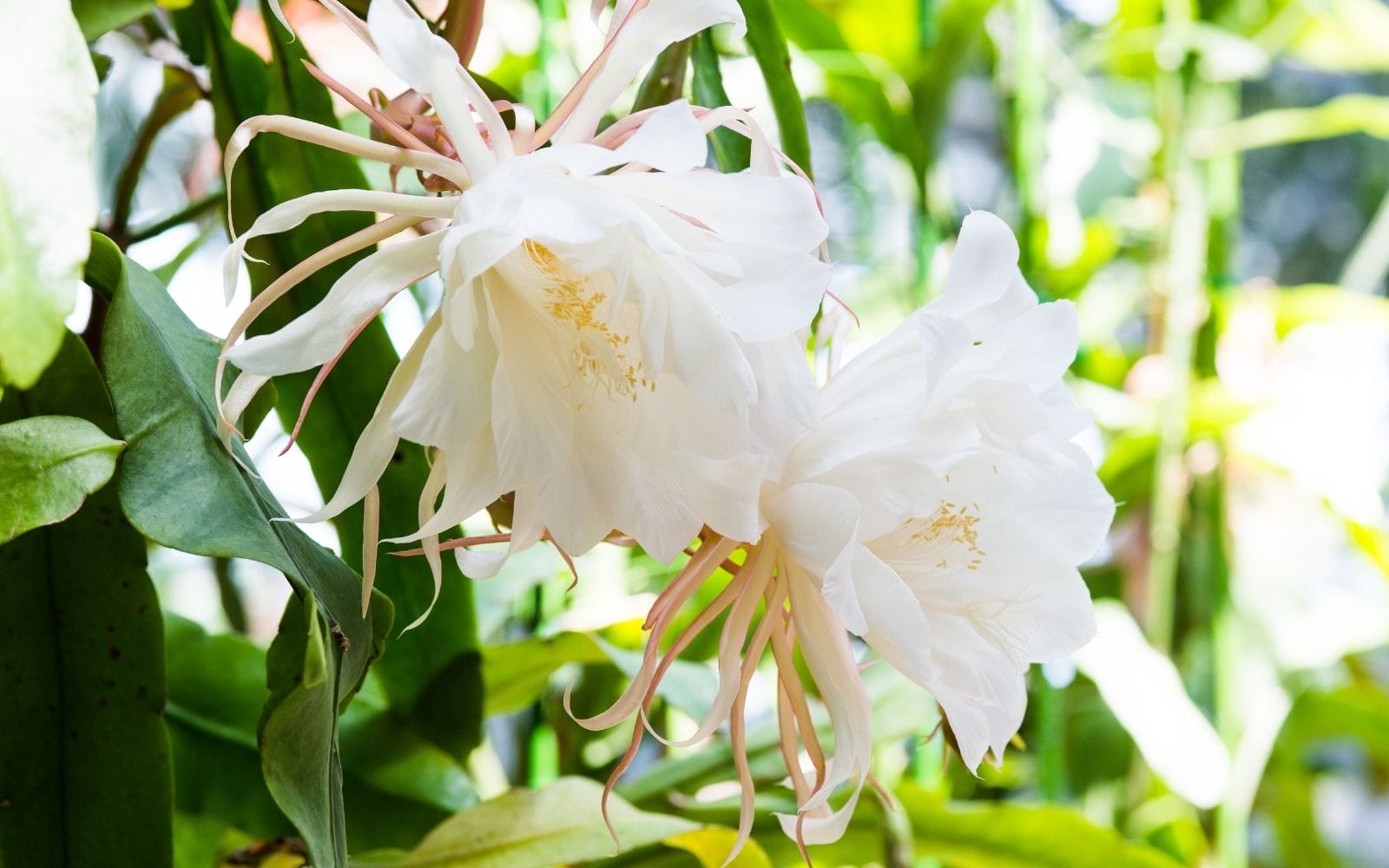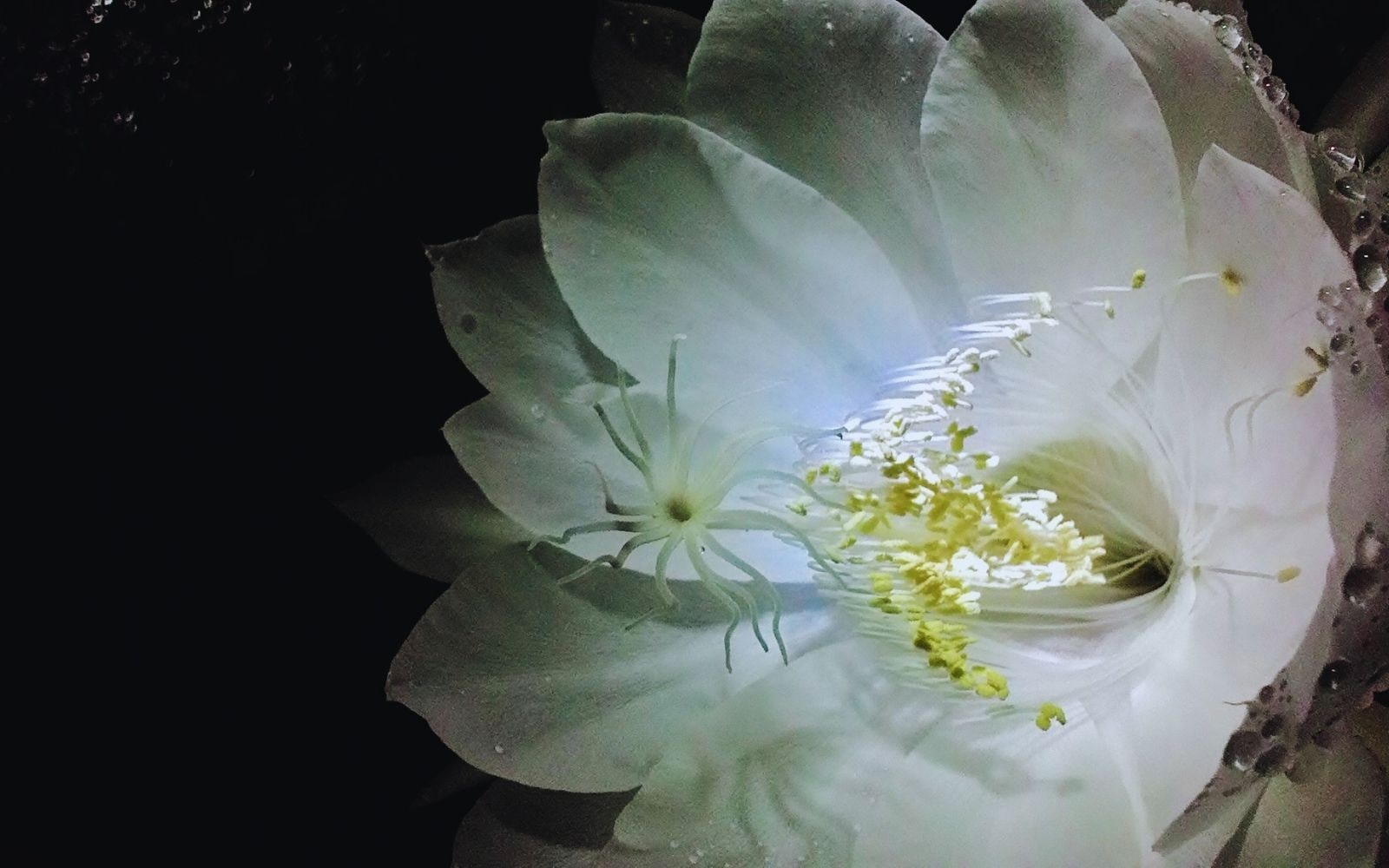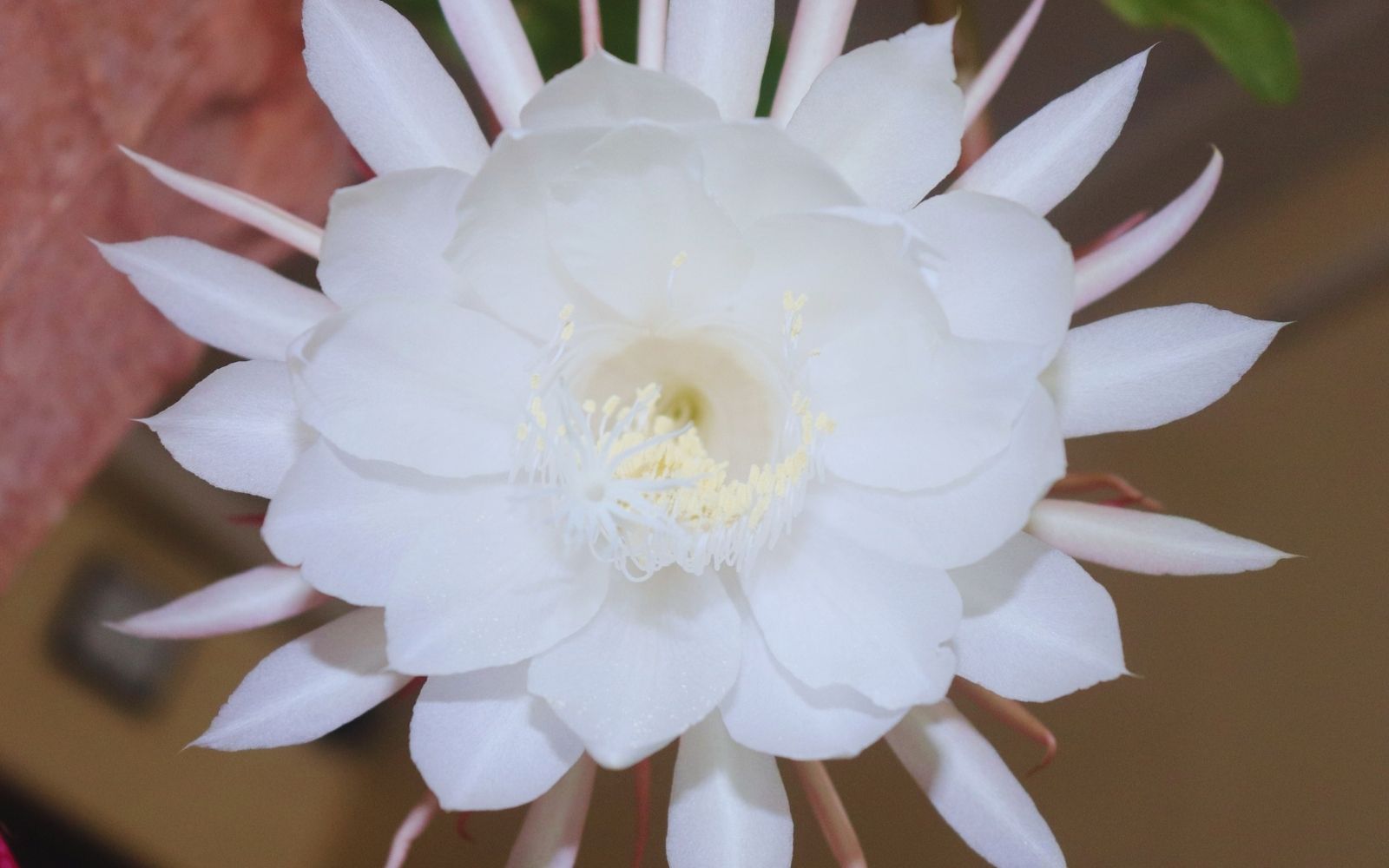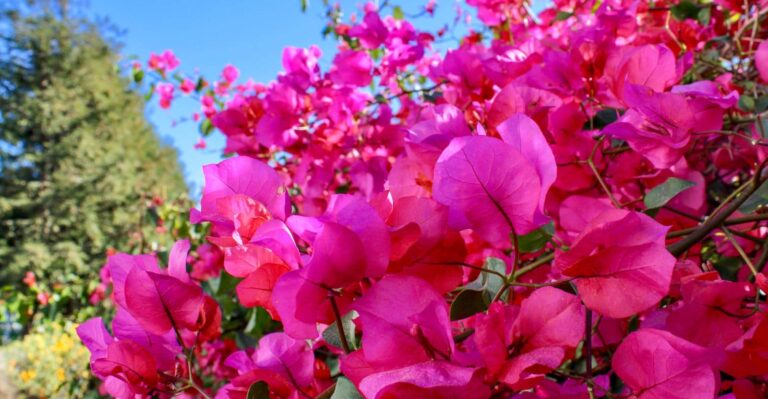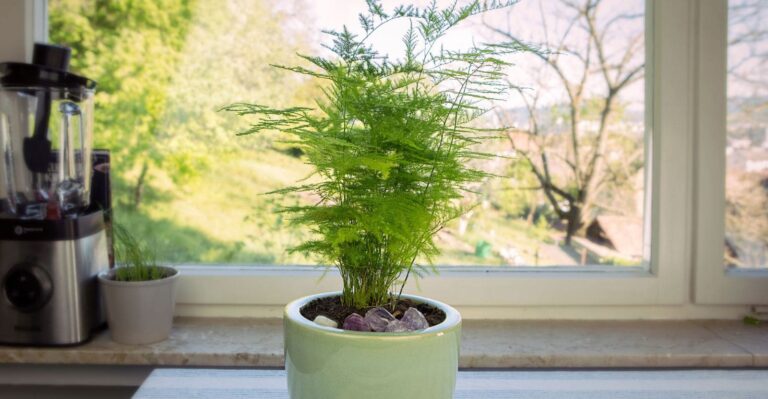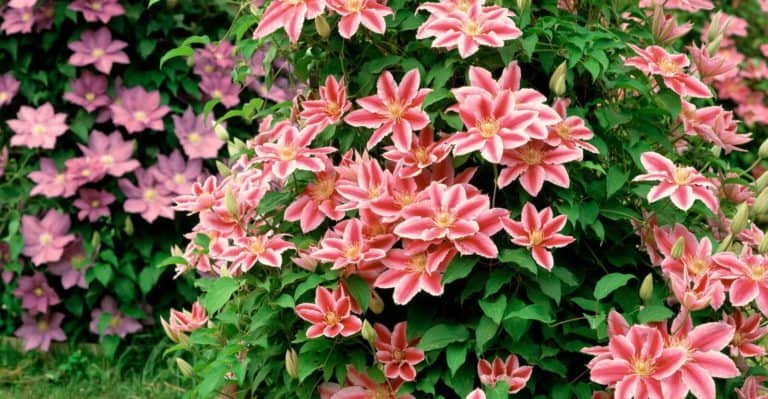Amazon has put together some great Home Gift Deals – save money and get your shopping done at the comfort of your home! Click here to see deals on Amazon
If you’ve ever wondered why more people aren’t growing rare flowers, it may be because it’s not a very popular hobby. Most people don’t think it’s worth the time and energy it takes to grow, especially when it’s not as easy as you think.
And if you like a challenge and want to know which rare flower to grow in your garden to have a boasting right, check out this list. We have covered 21 unique, rare flowers with descriptions, images, and scientific names.
Here is a list of 21 stunningly rarest flowers for your pleasure.
1. Corpse Lily (Rafflesia Arnoldii)
The Rafflesia flower plant is a tropical plant with a large pine cone with its genus containing approximately 28 species. It’s native to Sumatra, Indonesia, but several people have reported seeing the rare and spectacular flowers growing in the wild in Malaysia, Thailand, and other countries.
This is a rare flower that is uniquely small and is known as one of the world’s most expensive flowers. It’s part of a genus of flowering plants that parasite on trees in Southeast Asia.
The flower has large petals with spotting white dots and can grow up to 3–4 feet tall. Interestingly, unlike other plants, it has no stems or leaves but has an extensive bloom on this unusual plant.
2. Juliet Rose (Rosa “Sweet Juliet”)
Juliet Rose is a perennial type of tea rose that is often grown as an ornamental flower. It has fragrant flowers in pink, orange, or red shades that bloom from late spring to early winter. The flower has a strong tea fragrance that can be grown in all soil types.
It took flower breeder David Austin over 15 years and over $5 million to grow this beautiful flower. It needs some care during the initial year as it’s very stingy at blooming in the first few years. You have to wait 3–4 years for the rose tree to be fully mature and give you beautiful, elegant bloom.
3. Ghost Orchid (Epipogium aphyllum)
Ghost Orchid is an endangered type of orchid found in North and South America, most prominently in Florida and Cuba. These are scarce flowering plants as only less than 10 percent of plants flower.
These are often found in inaccessible swampy areas for people to see when their white petals bloom. It has bright white, long curly legs flowers that appear to be hanging from the stem.
In the middle of the flower, it contains sweet nectar that attracts moths and other insects. It grows best in a high humid area during spring and summer, making it difficult to grow at home.
4. Darwin’s Slipper Flower (Calceolaria uniflora)
This is a species of flowering plant in the Calceolariaceae family. This herbaceous perennial plant is native to Chile, where it grows at sea level. It’s known as “Darwin’s flower,” as Charles Darwin found it during his journey around South America.
These flowers are also known as slipperworts as the genus Calceolaria means “little shoes.” It flowers during the summer with a 2-inch-tall bloom with a white band around the bottom of the flower.
The leaves are dark green with straight stems. The plant itself is very demanding and needs a lot of care, from the correct type of soil to temperature to survive.
5. Middlemist’s Red (Middlemist Camellia)
The Middlemist Red is a species of Camellia named after its discoverer, John Middlemist. This is a medium-sized shrub with dark green leaves and produces white and red flowers. The plant was native to China when explorers brought it to England in 1804.
The flower has a dark pink color and lush green foliage. Unfortunately, there are only two plants left in the conservatory. One is in west London and another in New Zealand.
6. Corpse Flower (Amorphophallus titanum)
While the Titan Arum is the largest flower in the world, it’s also the rarest. They’re known as the corpse flower due to the scent that it produces to attract pollinators.This large flower can grow up to 9 feet high, but it rarely blooms. Sometimes, it may take up to 10 years for the first bloom.
When it does bloom, though, it’s a spectacular event. The large leaves unfurl, and the flower blooms, producing a colossal flower that smells like rotting meat. So if you want to grow your corpse flower, you’ll need to provide optimal growing conditions and lots of patience.
7. Jack-in-the-Pulpit (Arisaema triphyllum)
Jack-in-the-Pulpit is a spring-flowering plant with flowers contained on the spadix. It’s also known as Asian arisaema or Indian arisaema, an ornamental plant grown outdoors in USDA zones 6 to 11 or indoors as a houseplant in zones 8 through 11.
The flower is 3 to 4 inches tall, sitting in a tubular base with a hood. It has light green to purple-green stripes on leaves. It grows best in a woodland environment with a moist and shady spot.
Although it’s resistant to most insects and diseases, it’s highly vulnerable to slug attack. This makes it challenging to grow and care for when planting at home.
8. Lady’s Slipper Orchid (Cypripedium calceolus)
Cypripedium calceolus is known as lady slippers, lady slippers, or lady’s orchids. They’re one of the most popular petunias of the genus Cypripedium.
These grow stunning yellow flowers or pink flowers with a creeping and spreading habit. It has dull green leaves, often with bottle green blotches.
The flowers are borne in a tall spike and consist of a few or paler green cylindrical flowers, each with a prominent white lip.
It was once driven to extinction in Europe due to natural habitat destruction. It’s still considered endangered in most countries.
9. Gibraltar Campion (Silene tomentosa)
Campion is a genus of flowering plants in the sunflower family. This genus is native to Europe, North Africa, and western Asia that was once thought to be extinct. However, these days you can find this purple flower plant surviving on the Rock of Gibraltar.
They grow in an erect mound and are usually blue or purple. Their white flowers are small, but the plant can grow up to 15 inches tall. They’re attractive to bees and butterflies, pollinating them, and birds such as sparrows and finches eat them and disperse the seeds.
10. Franklin Tree (Franklinia alatamaha)
The Franklin Tree (also called the “Franklinia” Tree) is a deciduous tree native to the wet forest of the Southeastern United States. It grows best in USDA zones 5 to 8. It’s not frost-hardy and only grows as a small shrub.
The tree leaves are evergreen and simple, with smooth edges. It belongs to the tea family that was thought to be extinct in the wild since 1803. Fortunately, some plant experts could cultivate it due to its beautiful flower and attractive foliage.
11. Jade Vine (Strongylodon)
Jade Vine is a beautiful and popular flowering vine native to East Asia. The plant has a luminous quality which makes it very attractive. The stunning flower hangs in a large cluster with turquoise color.
It’s also known as climbing indigo snake vine. The cluster of the claw-shaped hanging flowers makes it unique. But it’s an aggressive grower in a natural environment.
This is an endangered and challenging plant to propagate. In the wild, birds and bats pollinate to bloom their flowers. The bat prefers to hang upside down and drink the flower nectar that helps with the pollination. This is a plant collector’s dream to grow in their garden.
12. Spider Flower (Grevillea)
Spider flower is a subtropical flowering plant native to Australia. The genus contains about 50 species of shrubs, trees, vines, and herbs that typically grow 8 to 10 feet tall. Most species are evergreen, but a few species are deciduous. These are noted for their brightly colored flowered and belong to the Proteaceae family.
Some species are frost tolerant and cold hardy, while others die at the slightest drop in temperature. This makes it difficult to care for and hard to grow outdoor in the garden. In addition, they need a specific growing environment to thrive, which makes it difficult to grow in a household environment.
13. Parrot’s Beak Flower (Lotus Berthelotii)
This is a tropical plant with very unusual leaves and flowers. The plant is native to the Canary Islands and grows as a trailing vine. The unique blooming shape of the flower looks like a parrot’s beak. Experts believed it to be extinct due to human encroachment, but conservation efforts have made it survive.
It grows up to 1–2 inches tall in the wild and thrives in full sunlight with well-drained soil. It attracts butterflies and hummingbirds in the garden. You can grow it indoors in a hanging basket or container garden in USDA zones 10 and 11.
14. Chocolate Cosmos (Cosmos atrosanguineus)
Chocolate cosmos is a type of flower that is extremely hard to grow. However, they have a fascinating history. The name comes from the fact that these flowers are highly similar to chocolate colors. It has beautiful dark brown to red petals that bloom in late summer.
These are perennial flowers native to Mexico. You may also find it sold as annual or container flowers in garden centers. The plant grows 30 inches tall in full sunlight with well-drained soil.
15. Darth Vader Flowers (Aristolochia Salvadorensis)
If you’re a fan of movies, you may recognize this alien-looking plant, Darth Vader, from a fiction movie. These are native to Central and South America where it thrives in humid and wet climates. There are more than 500 different species of this native plant, and most of them are very toxic.
Standing true to their name, they spread rotting smells to attract insects and pollinators. These are short-growing plants up to two inches tall and have a very short bloom cycle.
The flowers usually wilt in just a week. Unfortunately, due to their high toxicity, they’re not grown in gardens. But if you’re curious to see, you can find them in specialty greenhouses.
16. Monkey Face Orchid (Dracula simia)
This is a unique flowering orchid native to South America. The flower blooms like a small monkey face making it fun and adorable for any home garden.
It grows best in the USDA zone of 9 to 11, and there are over 110 different species of plants to grow. It’s from the Dracula genus that is mainly found in Ecuador.
The unusual flower grows up to 2 inches wide where three distinct petals from a long spine converge in the middle giving the shape of a monkey face.
It grows at a high elevation of one to two thousand meters in the dense forest of South America. Growing it’s tricky as the seeds are tiny and need a lot of care and specialized skills.
17. Cooke’s Koki’o (Kokia cookei)
Cooke’s Koki’o is officially listed as endangered plant species of the world. It has a long history as it was once thought to be almost extinct in 1915, with a single plant remaining. However, several efforts to grow from seeds and grafts were unsuccessful. As a result, only 23 grafted plants of Kokia cookei exist in the world.
Their leaves are veined, and the plant blooms orange-red flower inviting nectar-feeding birds. The tree loses its leaves in the fall and turns a reddish color like a maple tree before falling on the ground. The buds again start to appear in the spring.
Conservation efforts have been underway to revive the plant in botanical gardens for future generations, but the result hasn’t been encouraging.
18. Passionflower (Passiflora spp)
This is a cold-hardy tropical plant that is native to North and South America. There are over 500 different species found in the wild and known with other names such as passion vine, granadilla, maypop.
It blooms a very short-lived flower that lives for a single day. The flower has five to 10 petals growing on the broad base. Also, this is primarily a vine trained to climb on the trellis, fence, or wall.
A single day blooming makes it a very unusual rare flower. But growing this plant is easy as it’s drought-tolerant and can grow in poor soil. However, it does like several nutrients in its soil and excellent drainage.
19. Lady’s Slipper Orchid (Cypripedium)
The Lady’s Slipper Orchid is a beautiful flowering plant with a peculiar shape that grows in the wild in the Eastern United States. It grows on a very long and wide stalk, with two separate stems coming together at ground level to form a single flower stalk.
The flower itself is cup-shaped and has many green, strap-like leaves striped with light and dark areas. Unfortunately, it’s a very slow-growing plant and takes several years (6–8 years) to reach the flowering size.
This causes it to be exploited in the wild as some sellers will dig it out from the wild and sell it to unsuspecting customers. This endangers the long-term sustainability of the plant.
20. Bleeding Heart (Dicentra formosa)
A Bleeding Heart is a lovely, spring-flowering perennial with pink or mauve flowers and heart-shaped purple leaves. It’s native to the U.S. and Canada but has been introduced to other temperate areas as well.
A fully grown plant can reach up to a half-meter height with a four-petal bloom with shades of purple to nearly white. These petals are attached to the base that curves outward toward the tips.
The inner petals are arranged perpendicularly connected at the tip. It needs a lot of care to grow as they’re susceptible to the change in the environment.
21. Brahmakamal Flower (Epiphyllum oxypetalum)
Brahmakamal (aka Kadupul flower) is a small, epiphytic, white flower. It grows very well in tropical and subtropical regions. The plant is native to the Indian Subcontinent, Sri Lanka, and the Malesia region.
It’s a night-blooming white flower cactus different from a similar species of Selenicereus grandifloras, a rare blooming cactus. It’s a rare flower that only blooms at night and makes it difficult for people to observe.
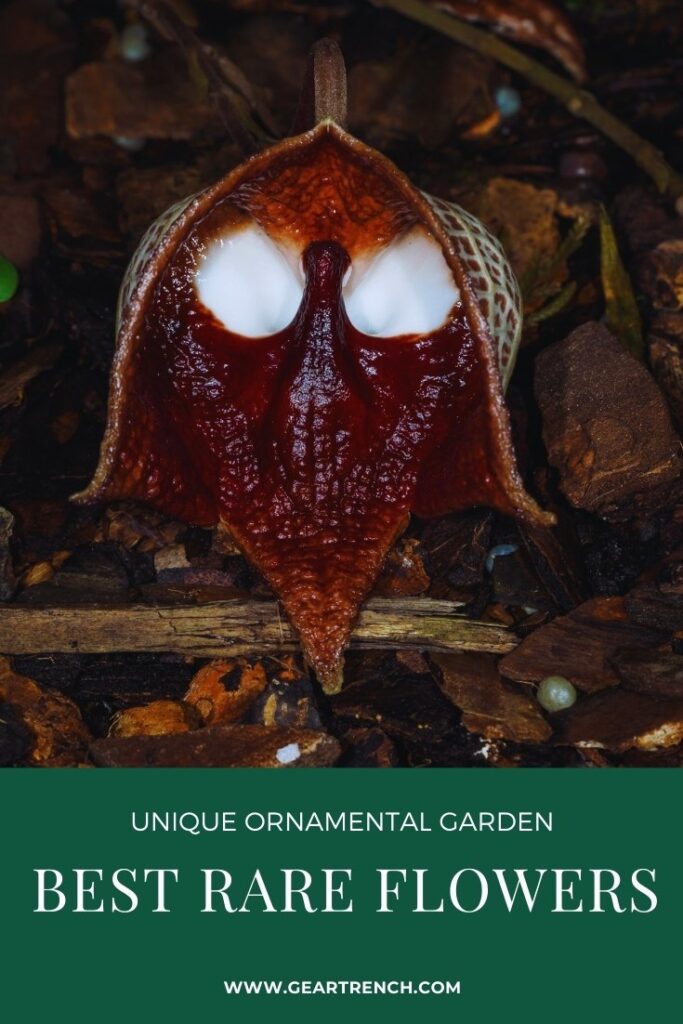
Don’t forget to share this post

